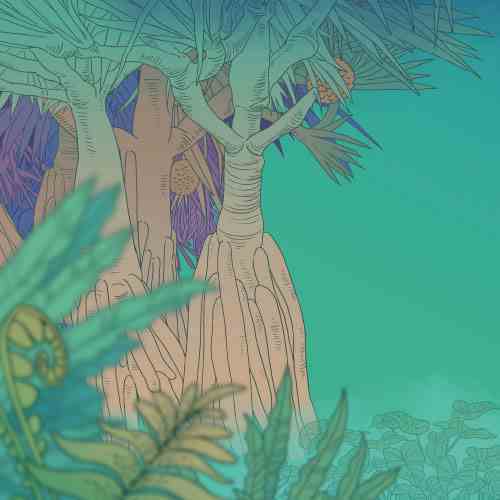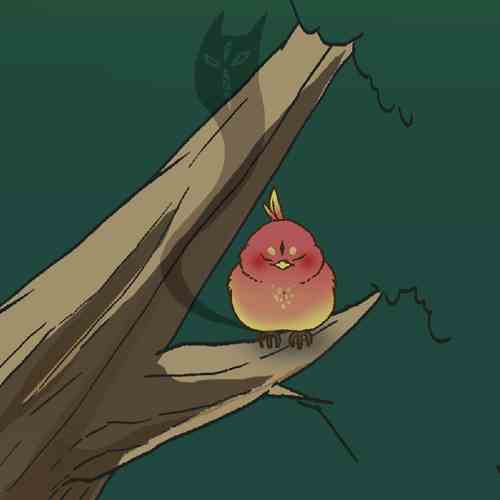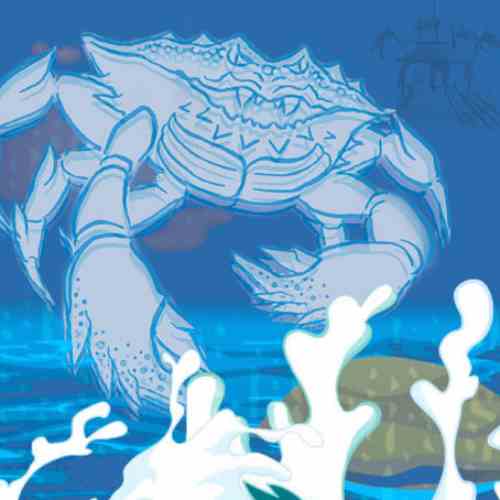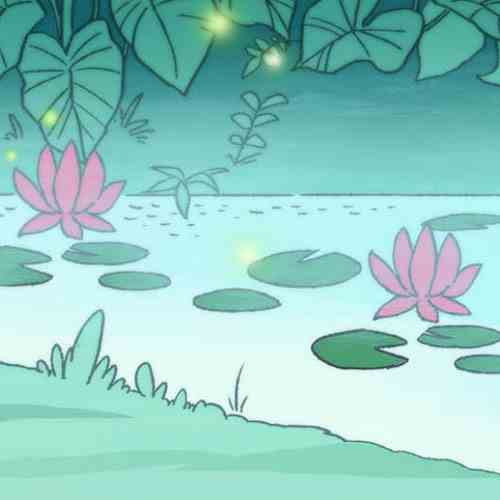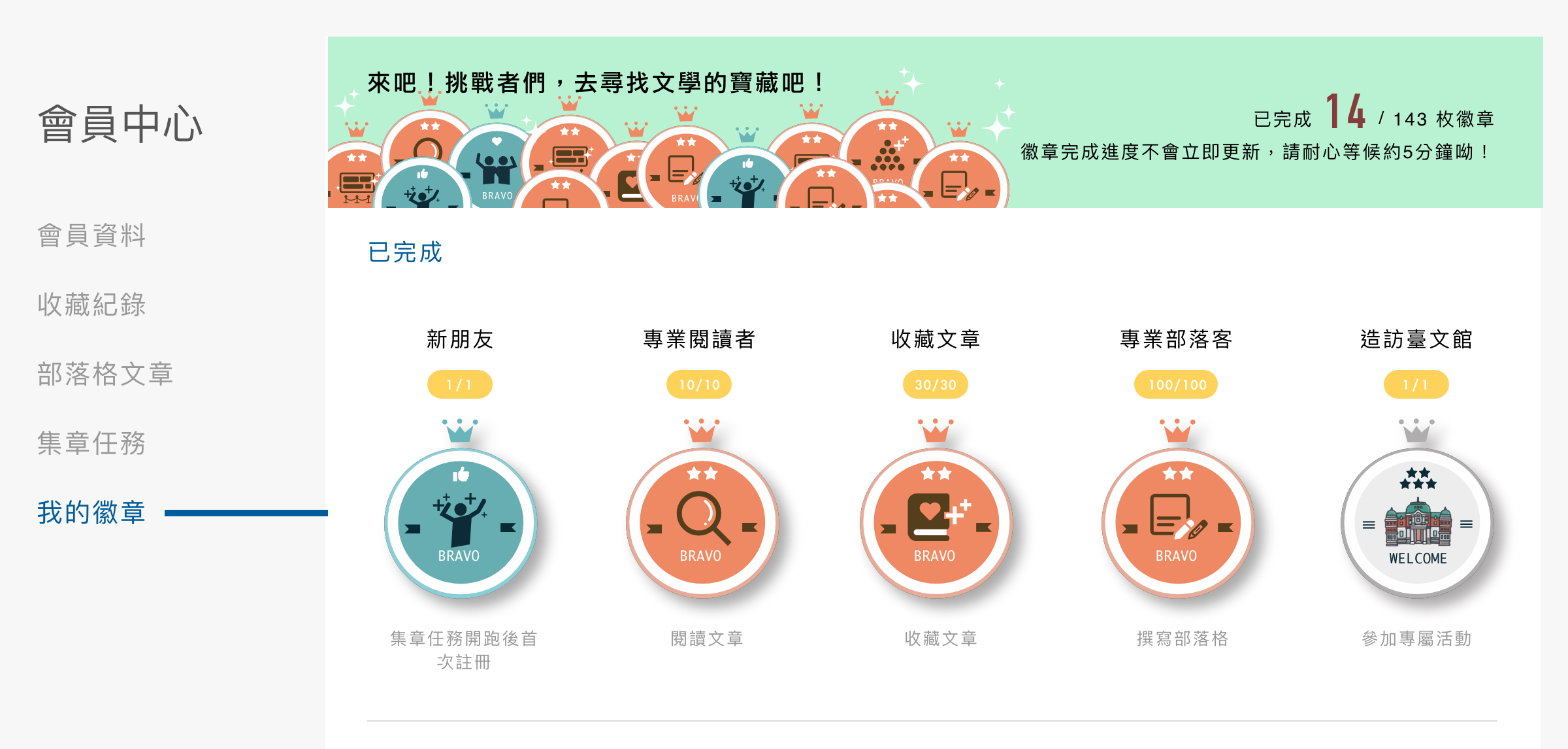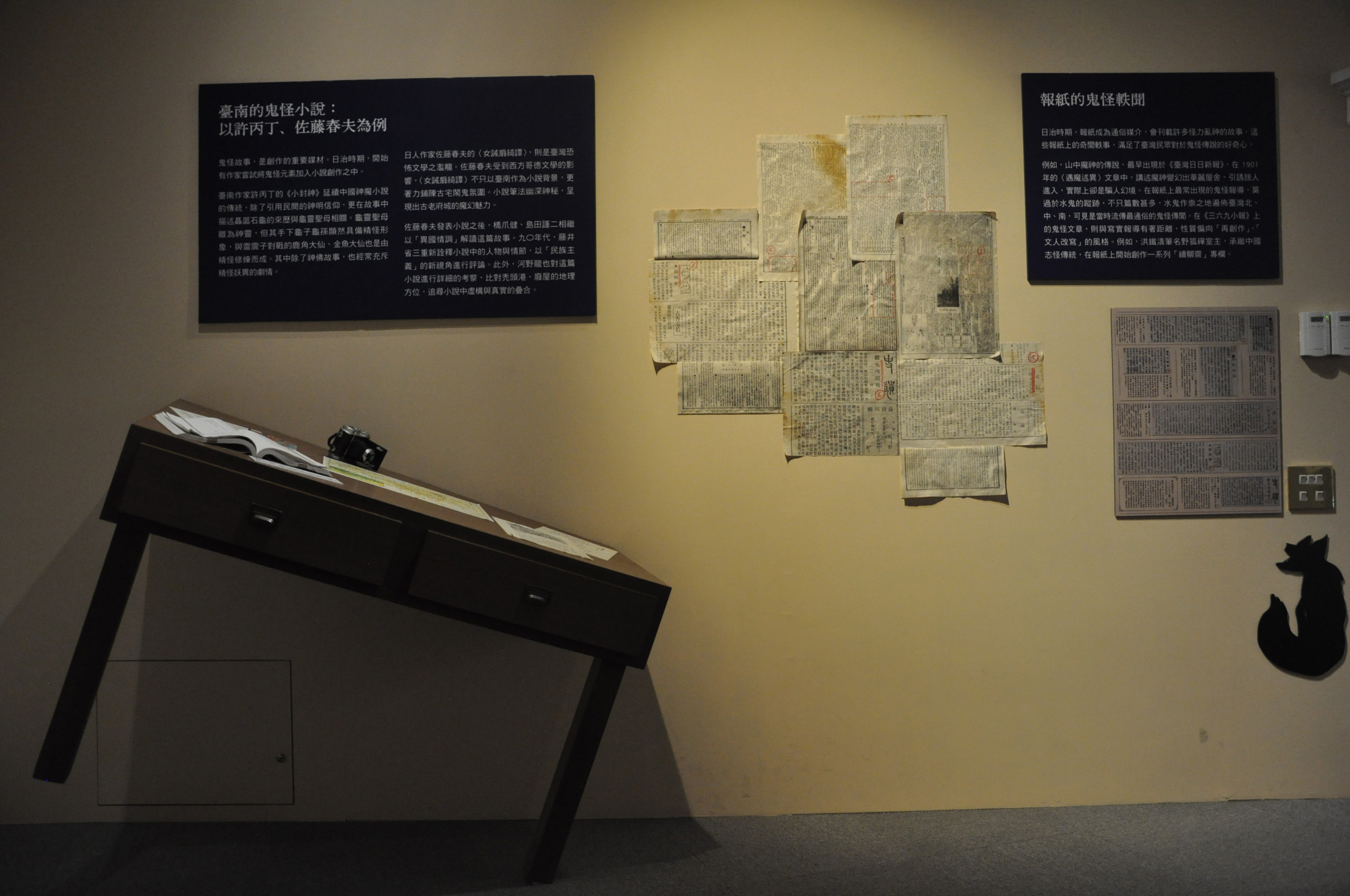
The "Devil's Island" Perspectives of the Chinese Literati|Folk Literature: Treasure Trove of the Wonderfully Creepy|Oral Folklore Traditions|Paranormal Anecdotes in Newspapers|Tainan Paranormal: The Works of Hsu Bing-ding and Haruo Satō
Since the earliest times, Taiwan communities have shared tales of demons and evil spirits. Many were written into contemporary and later records from the 17th century down to the present by a diverse array of Chinese, Japanese, and Western observers. Differing backgrounds, experiences, and cultural assumptions gave each a unique perspective on the legends they encountered. For example, many early Chinese travelers came with the presumption that Taiwan was a land crawling with strange beasts and surrounded by waters teaming with equally frightening maritime monsters. During the Japanese Colonial Period (1895-1945) both Taiwanese and Japanese scholars continued the work of surveying, collecting, documenting, and analyzing stories of the paranormal across the island. Taiwanese ghosts, ghouls, goblins, demons, and other creepy crawlies infiltrated popular songs and art, serialized stories in newspapers, and printed stories and other literary works, making their mark on Taiwanese culture as a whole. The formal research done by so many amateur and professional researchers across the centuries have created today's well-stocked cultural storehouse of Taiwan paranormal heritage.
The study of stories and fables demands well-honed sleuthing skills. Researchers must sift through voluminous details in order to identify common themes and trends, compare countless reports and publications, and pinpoint actual historical events, places, and persons, all in the pursuit of clarifying the backstories and meanings behind these paranormal tales and getting to the underlying 'truth'. Thus, the study of Taiwan paranormal is the attempt to shed light on the bizarre side of island history.

The "Devil's Island" Perspectives of the Chinese Literati
During the Qing Dynasty, Chinese literati crossed the strait to Taiwan either for travel or to settle on the island. After hearing countless paranormal stories or personally witnessing incidents of hauntings, they were scared or simply curious, which prompted them to record these rural legends in poems and prose, shaping Taiwan into a "devil's island". For example, Sun Yuan-heng, the first poet who portrayed Taiwan using the "magical realism" style of writing, characterized, Taiwan as a demonic realm.
Chinese literati of the Qing Dynasty recorded the island's strange tales mainly in poetry, prose, travel journals, and diaries. Apart from these, Taiwan officials in their official "chorographies" would document strange phenomena such as visions of disasters and the appearance of monsters or ghosts in the chapter "Disastrous and Auspicious Signs." Based on Confucius' political and religious thinking of "interactions between heaven and mankind," these records of strange incidents provided local officials with signs of "changes in political affairs" as a reference for local governance.
Documentation in poems, songs, and local records of disastrous and auspicious events demonstrated that Chinese literati often interpreted these mysterious tales of Taiwan through a "magical lens." Although this perspective reveals the "center-periphery" cultural context, this "romanticized" perspective created an indispensable and important basis for contemporary Taiwanese writers to reassemble their island's history of fantasy.
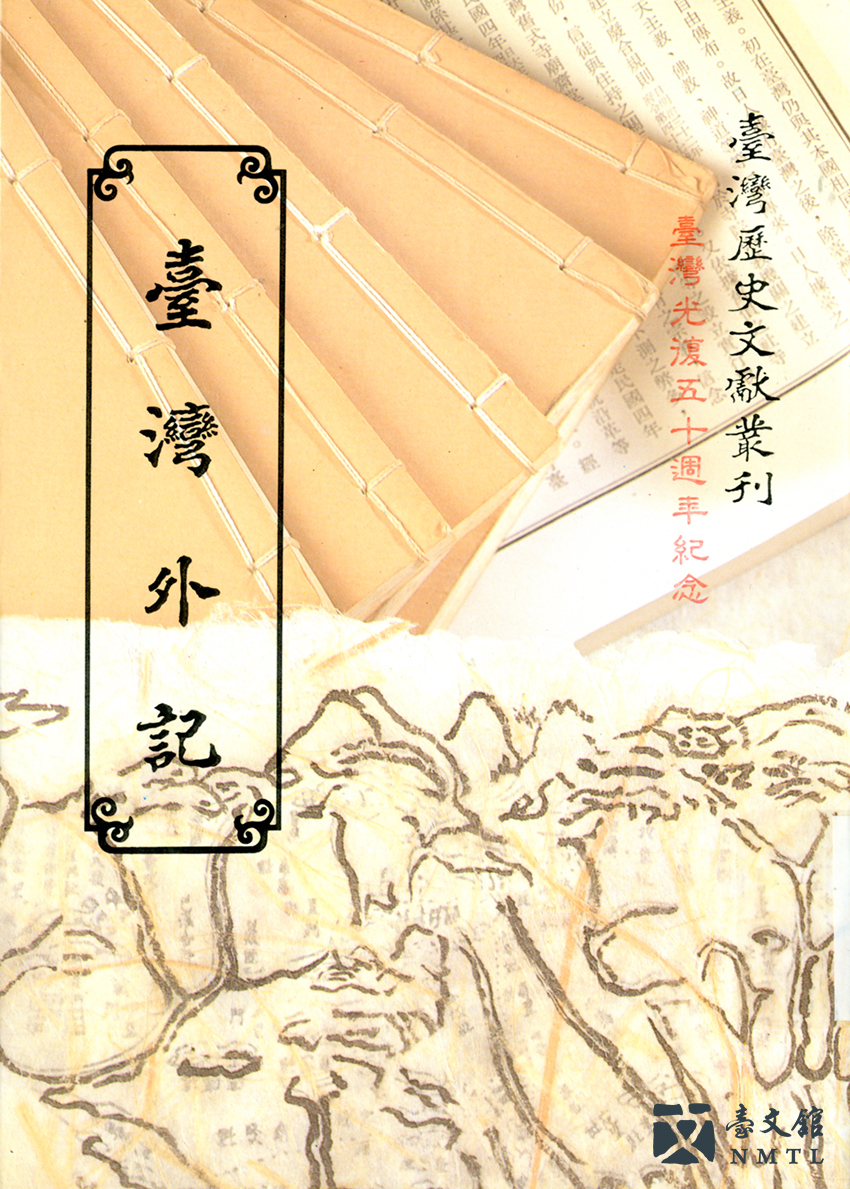
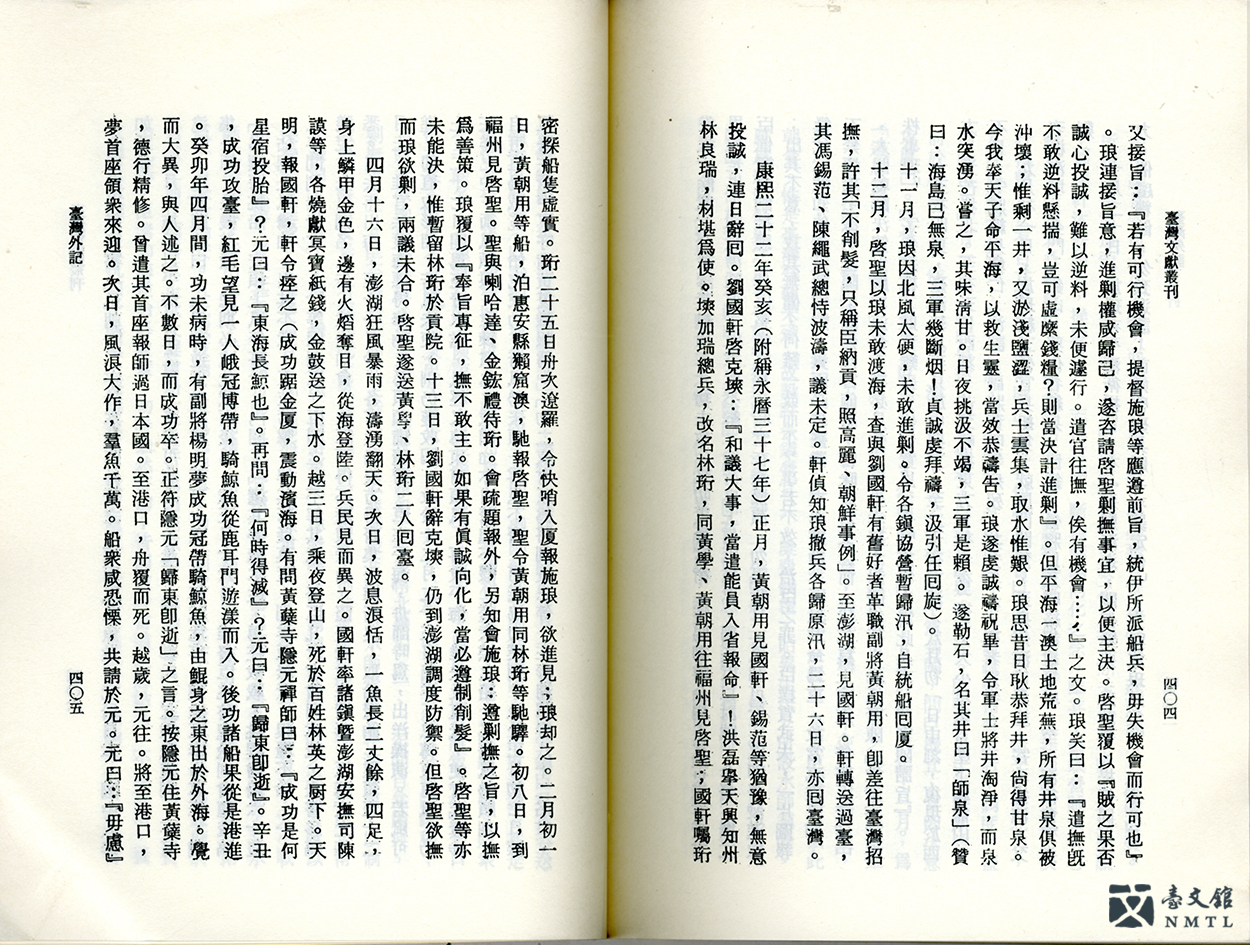
▶︎ Chiang Jih-sheng. JOURNEY TO TAIWAN (Taiwan Historical Literature Series). Provincial Documents Committee of Taiwan, 1995. (Collection of the National Museum of Taiwan Literature)
Chiang Jih-sheng, son of a Southern Ming general, had heard stories about the Kingdom of Tungning ever since his childhood and expressed, in the preface of JOURNEY TO TAIWAN, his wish to write them down. "The Min people tell of Min events, which should be recorded as official history for future reference." Although this book documents unofficial history, it marks the start of Taiwan's historical fiction. Chapter 9 of JOURNEY TO TAIWAN mentions the appearance of the fire crocodile in Penghu.
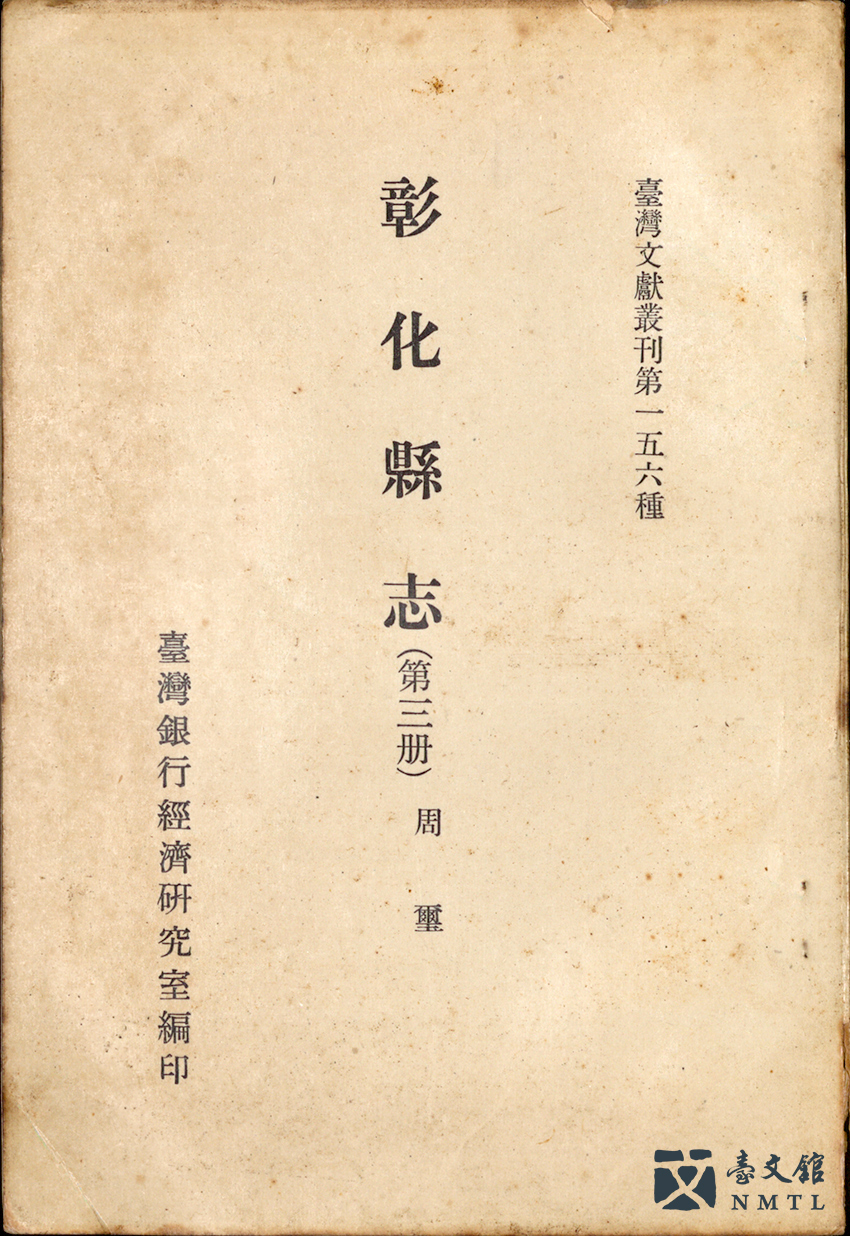
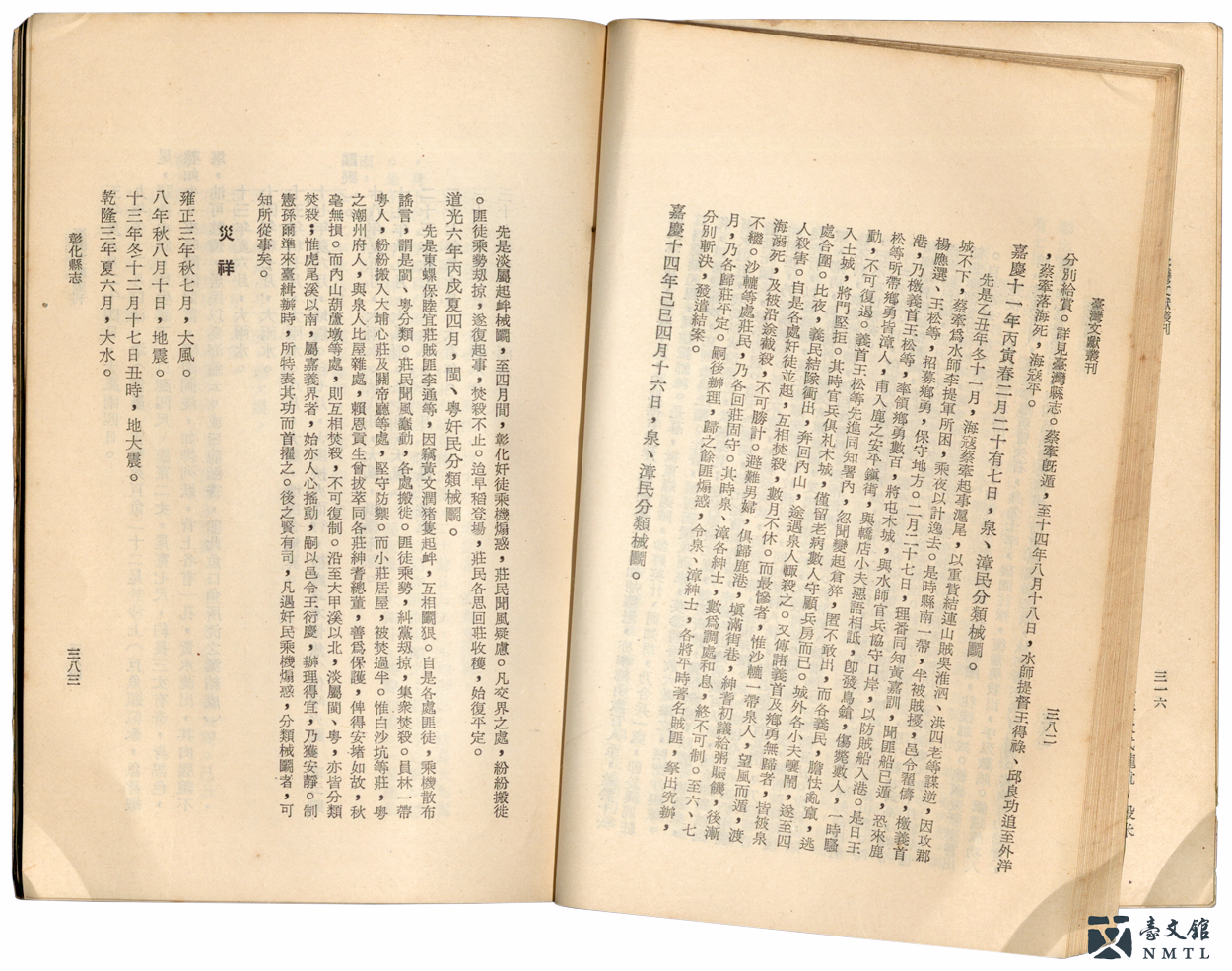
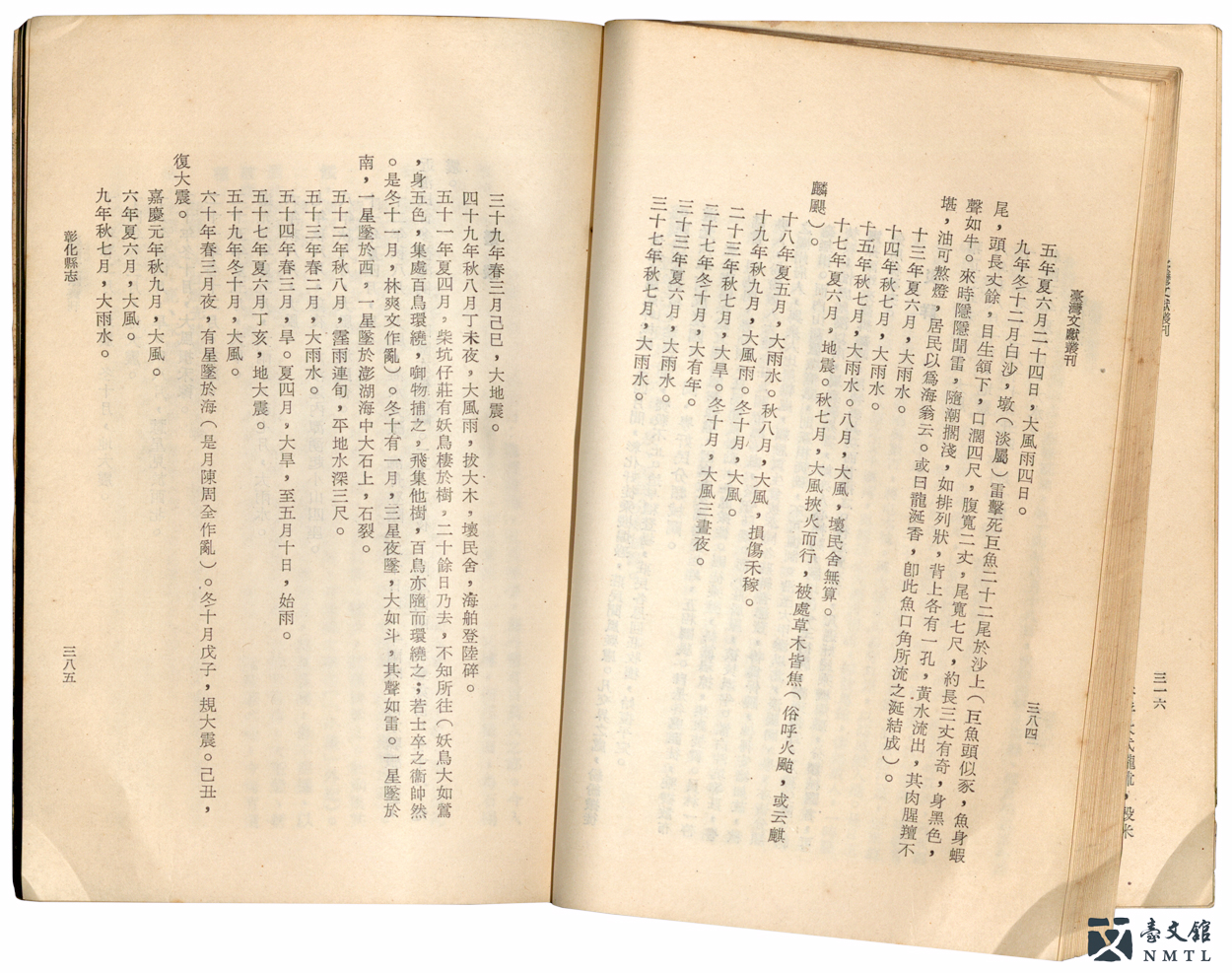
▶︎ Zhou Xi. CHANGHUA COUNTY CHRONICLE, Vol. 3 (Taiwan Literature Series No. 156). Bank of Taiwan Economic Research Office, 1962. (From the National Museum of Taiwan Literature permanent collection / Donated by Huang Tian-heng)
Zhou Xi (pen name Zhuotang) was a native of Lingui, Guangxi. He was appointed magistrate of Changhua County in March 1826. Less than four months later, he was dismissed due to the Hoklo-Hakka Clan Wars. Later on, he began to lecture at the Baisha Academy and Chongwen Academy. When Li Ting-bi was the magistrate of Changhua County, Zhou Xi was hired to edit the CHANGHUA COUNTY CHRONICLE. The book models the CONTINUED EDITION OF THE TAIWAN PREFECTURE CHRONICLE and the ZHULUO COUNTY CHRONICLE and centers on events that occurred between 1764 and 1836, mentioning strange creatures as well as the Confucian philosophy of Interactions Between Heaven and Mankind. For example, in the Chapter "Disasters and Boons," Zhou Xi wrote that in 1795 "a comet fell into the sea (the Chen Zhou-quan rebellion erupted in the same month)," associating astrology with political incidents.
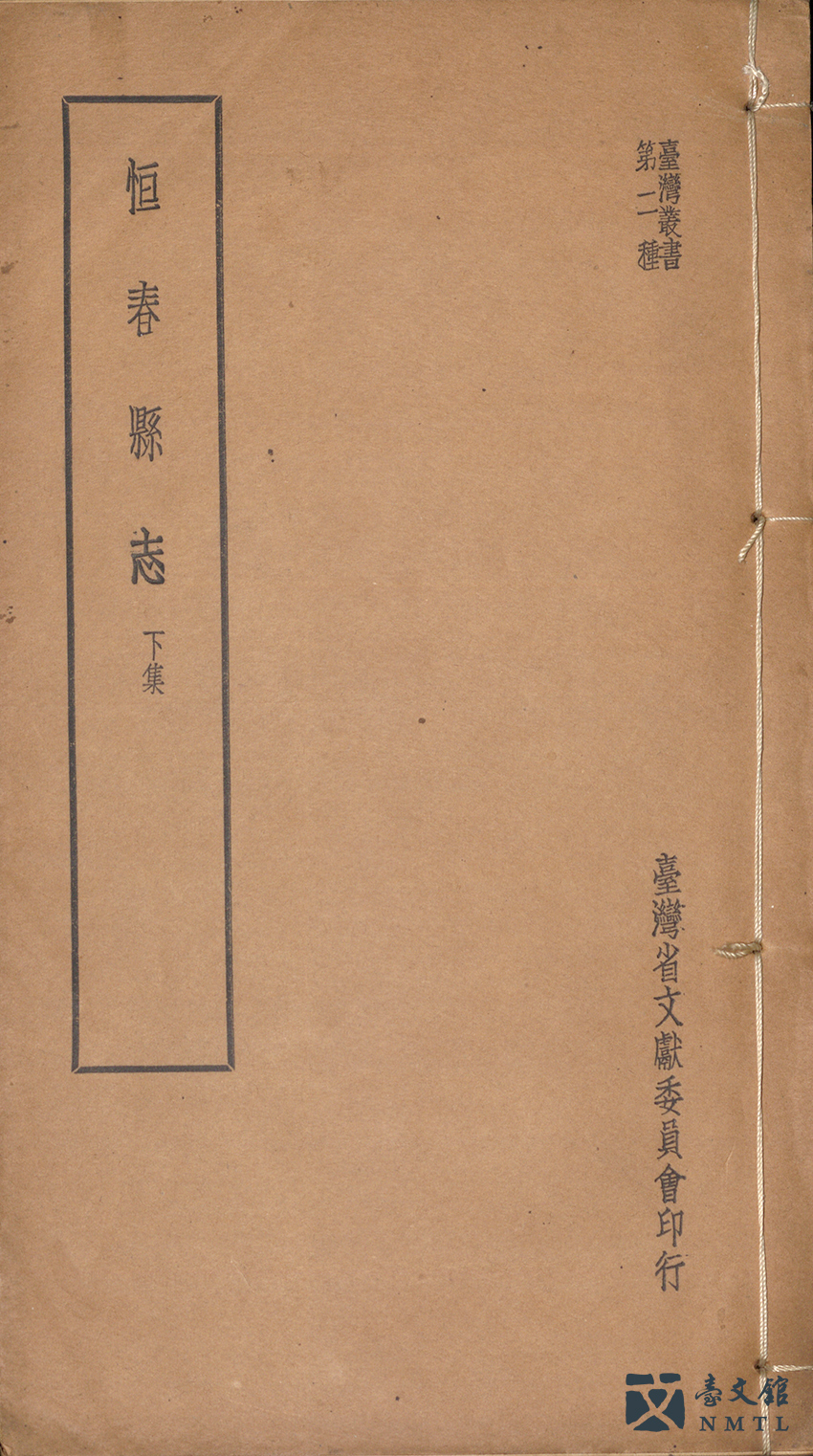
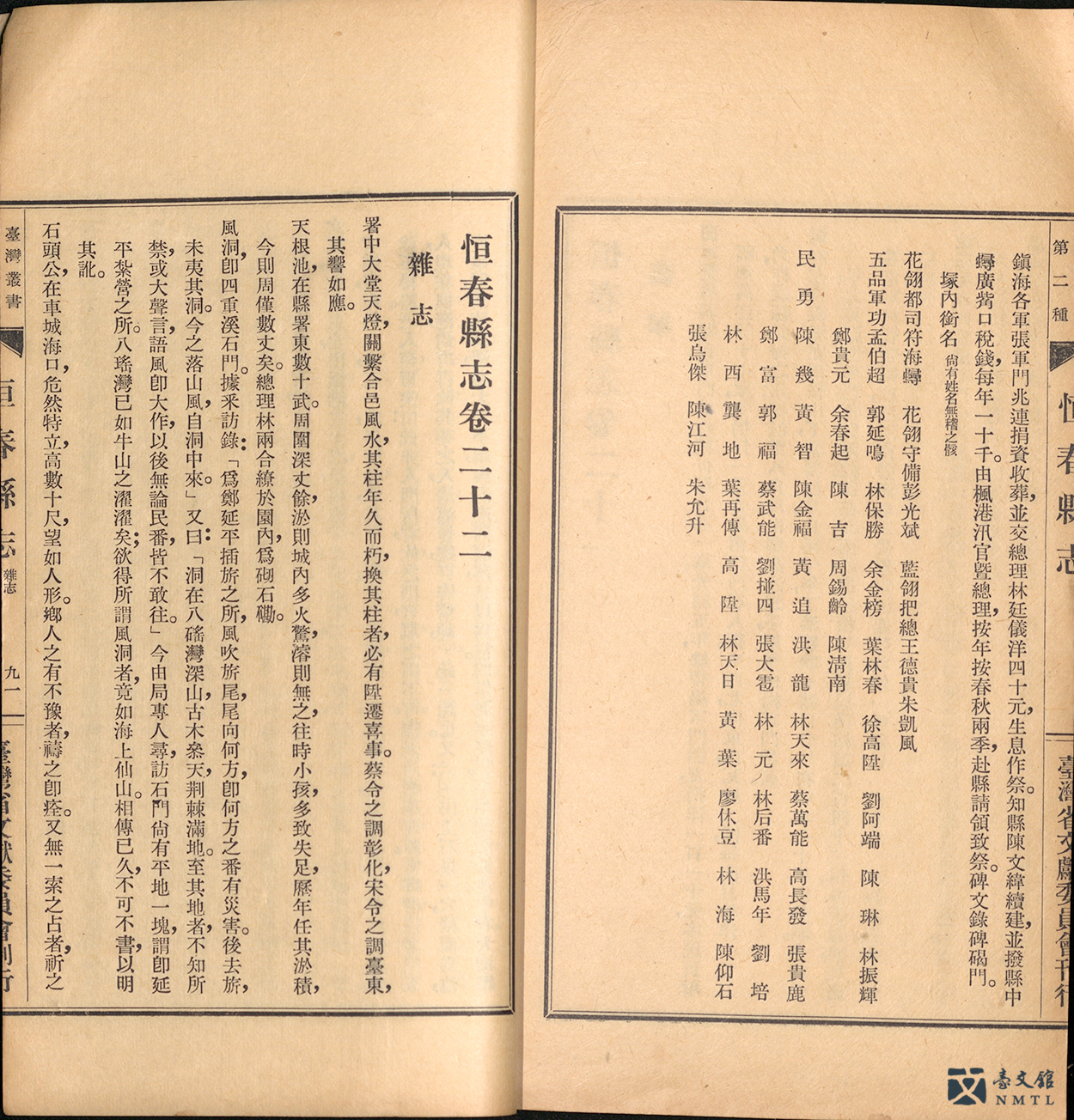
▶︎ Tu Ji-shan. HENGCHUN COUNTY CHRONICLE Vol. II. Provincial Documents Committee of Taiwan, 1951. (From the National Museum of Taiwan Literature permanent collection / Donated by Hsu Bing-ding)
Tu Ji-shan (courtesy name Zhi-jun and pen name Xiaoyun Jushi) was a native of Huiji, Zhejiang. During the reign of the Guangxu Emperor, Chen Wen-wei, the County Magistrate of Hengchun, commissioned Tu Ji-shan to compile the HENGCHUN COUNTY CHRONICLE and Wang Chun-yuan and Qiu Fu-kang to survey local customs and folklore. The book took a year to complete, but the finished manuscript was lost for many decades. It resurfaced after the Second World War and was finally published by the Provincial Documents Committee of Taiwan. The book not only documents Hengchun's historical events, but also touches upon rural legends such as the description of the stone gate of Sizhong River, commonly known as the wind tunnel, where Koxinga planted a flag, the waving tip of which always points to the direction from which the next indigenous attack is to come.
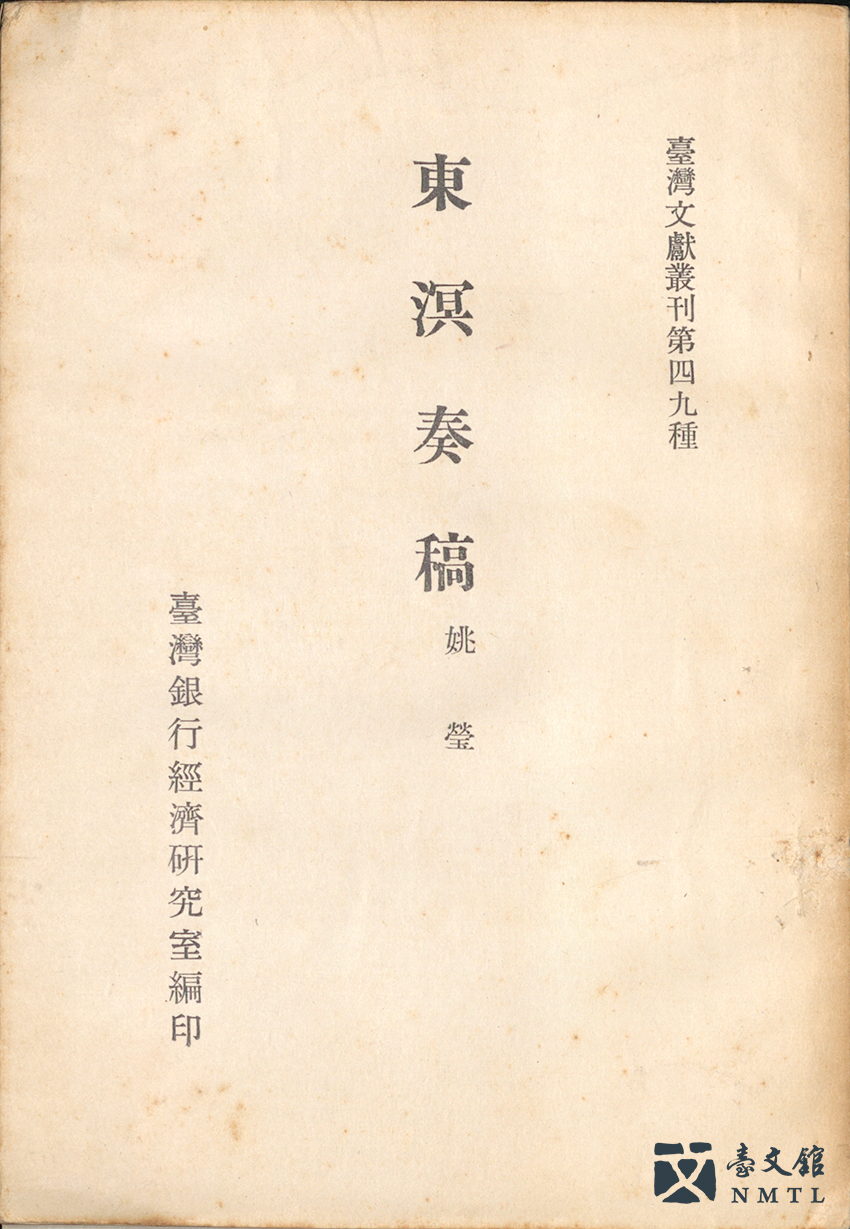
▶︎ Yao Ying. MEMORIAL DRAFTS FROM THE EASTERN SEA (Taiwan Literature Series No. 49). Bank of Taiwan Economic Research Office, 1959. (From the National Museum of Taiwan Literature permanent collection / Donated by Hsu Bing-ding)
Yao Ying (1785-1853; courtesy name Shifu and pen name Mingshu) was a native of Tongcheng, Anhui. He took the post of County Magistrate of Taiwan as well as the prefect of coastal defense in 1819. In 1821, Yao was transferred to Kavalan (Yilan) as its governor, during which time he won praise for his good deeds, including compensating disaster victims and focusing on education while respecting local customs. After hearing that the Wutong sinister deities were harassing the villages, he held a formal trial to prosecute these deities.
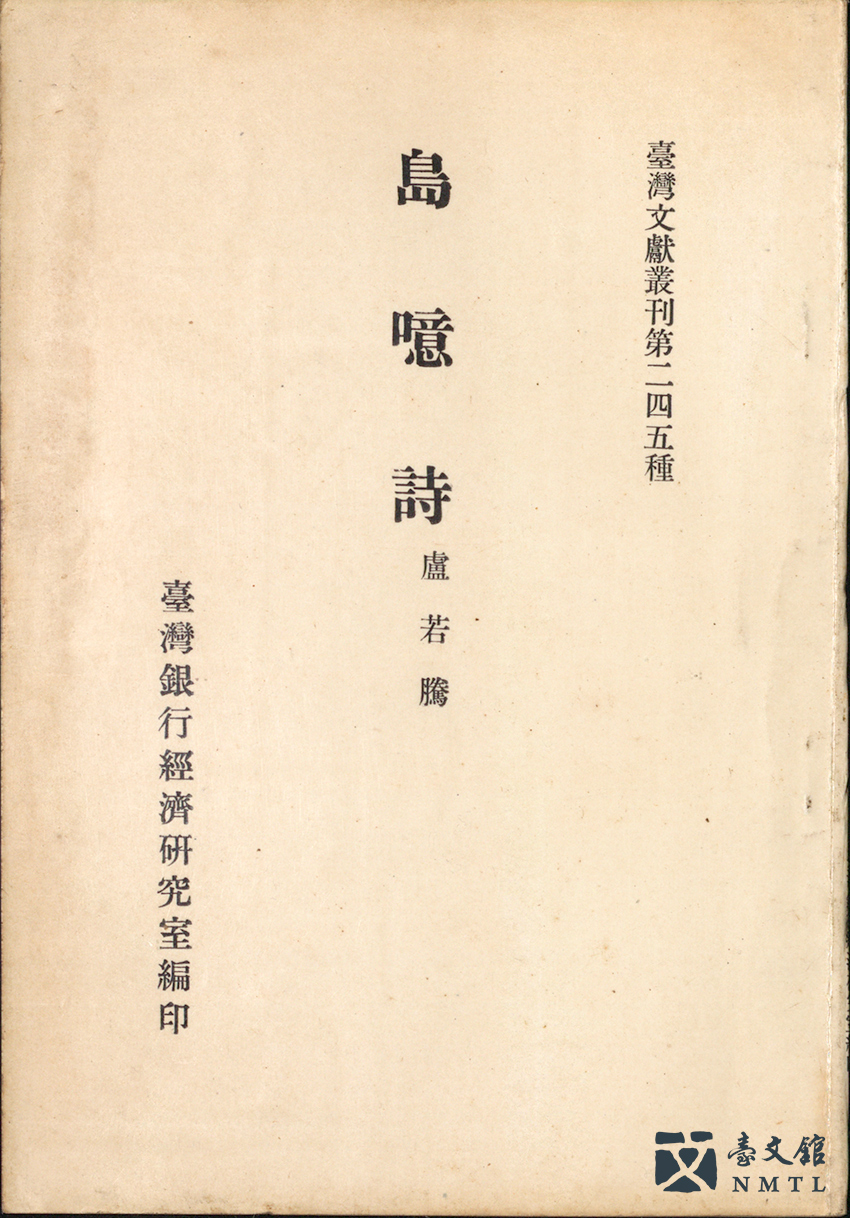
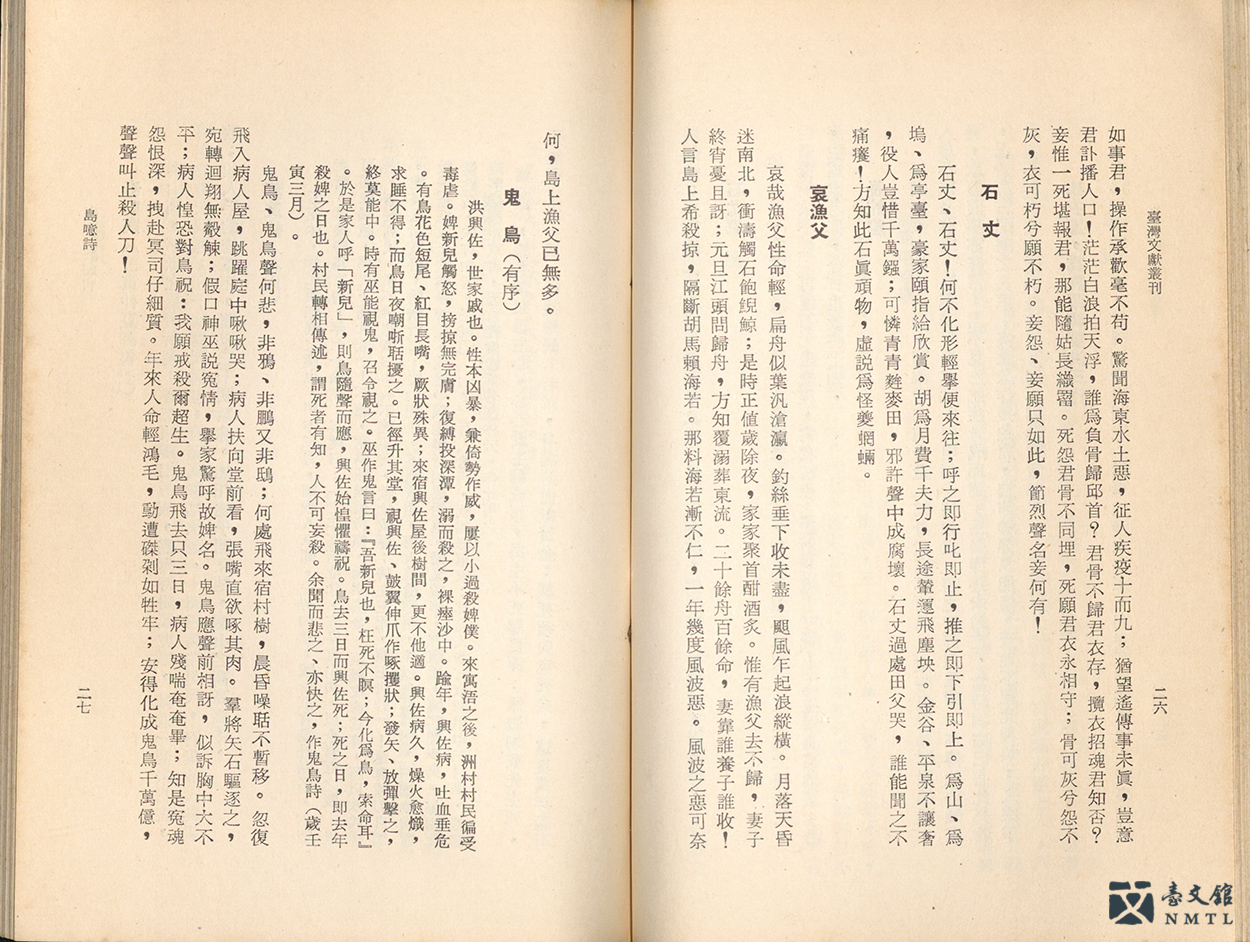
▶︎ Lu Ruo-teng. POEMS OF ISLAND LAMENTS (Taiwan Literature Series No. 245). Bank of Taiwan Economic Research Office, 1968. (From the National Museum of Taiwan Literature permanent collection / Donated by Huang Tian-heng)
Lu Ruo-teng (1600-1664), a native of Kinmen, Fujian, earned his Imperial Scholar degree in 1640. He traveled to the Penghu Archipelago after the Qing army's seizure of Kinmen Island and Xiamen and settled there. Lu Ruo-teng believed that one's "anger" may be vented by "lamentation" through literary creativity. He gave voice to his own emotional disaffection in poetry later published in POEMS OF ISLAND LAMENTS. While taking refuge on Kinmen Island, he also celebrated local culture in poetry and prose. "The Story of the Ghost Bird" narrates the story of a grave bird attacking people.
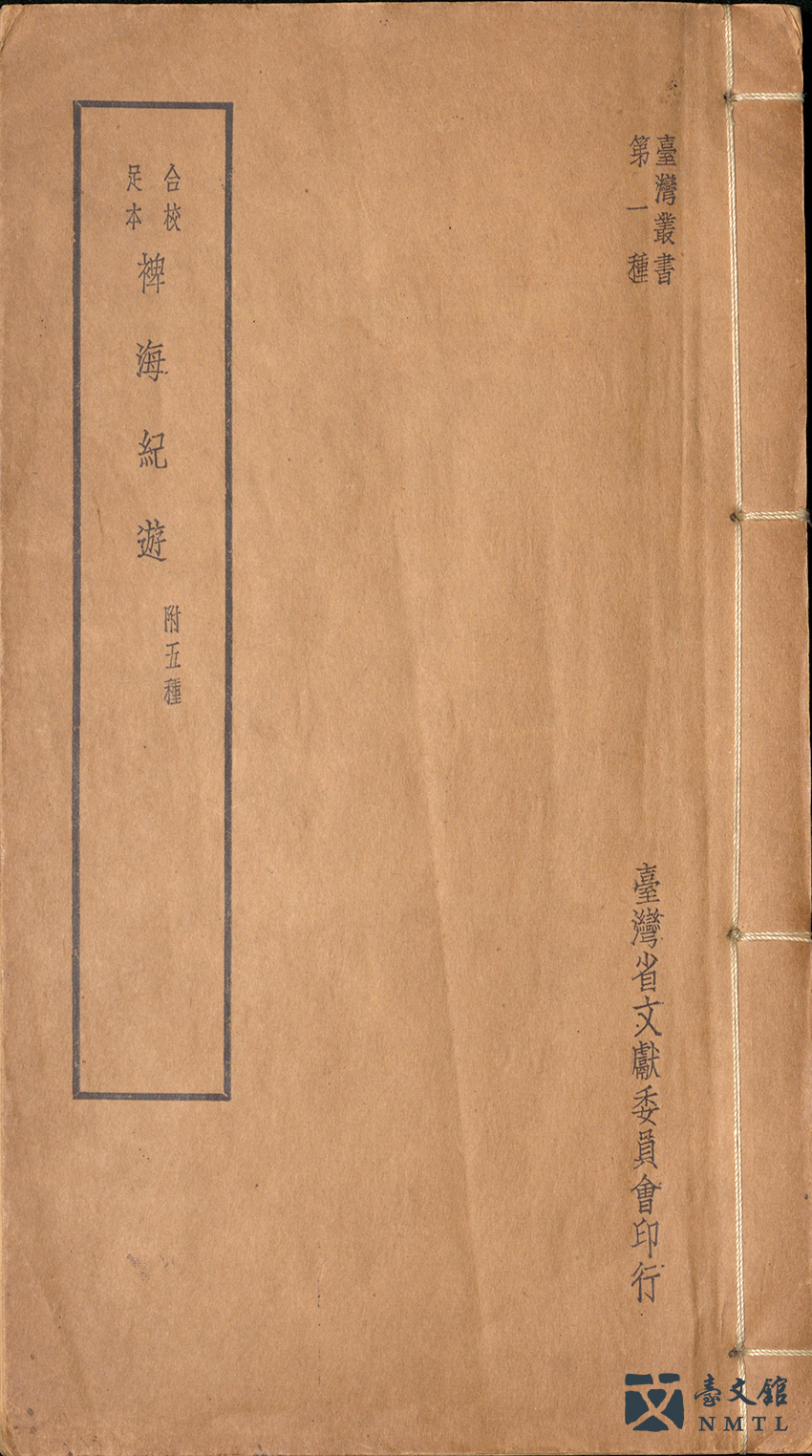
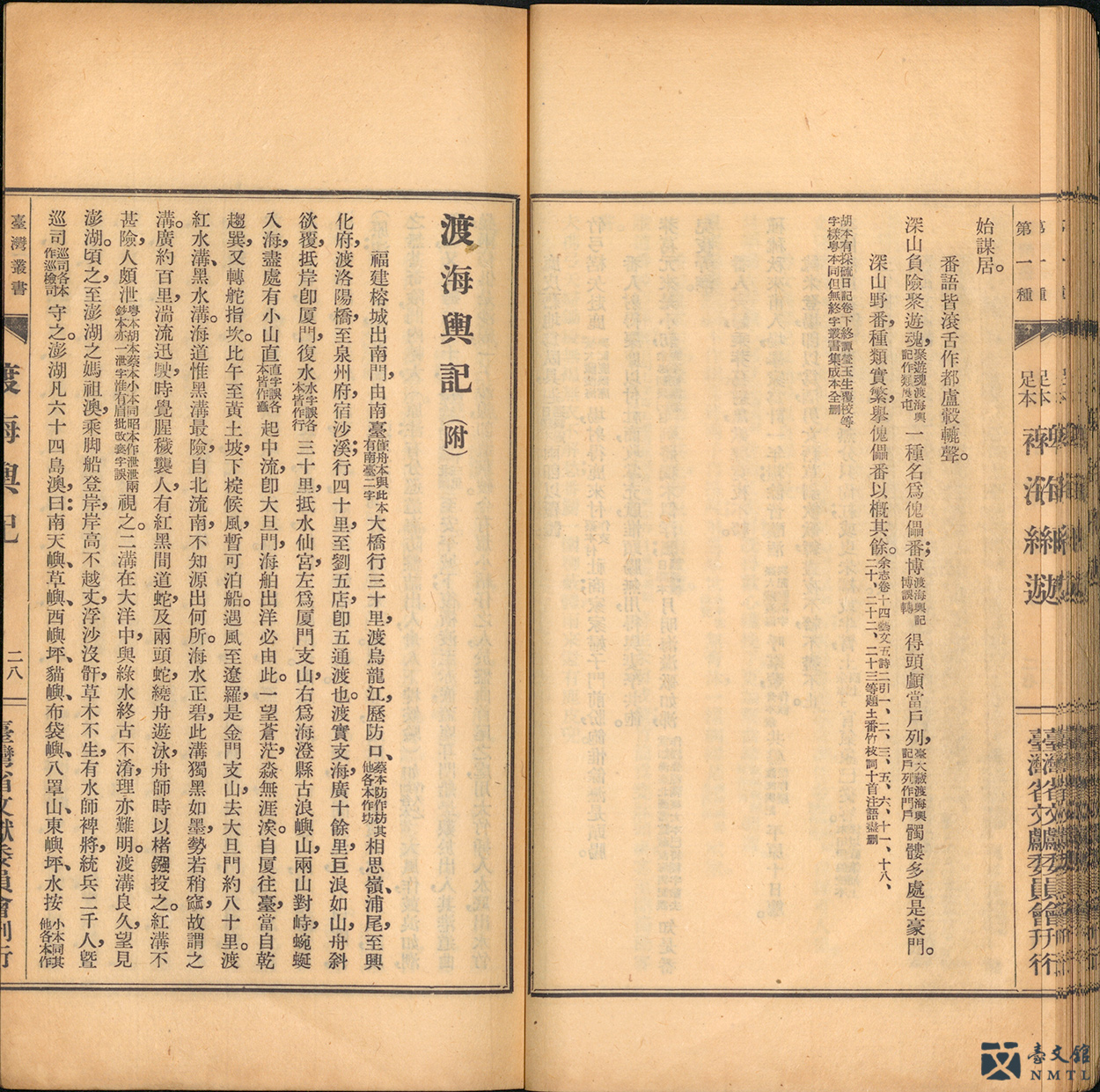
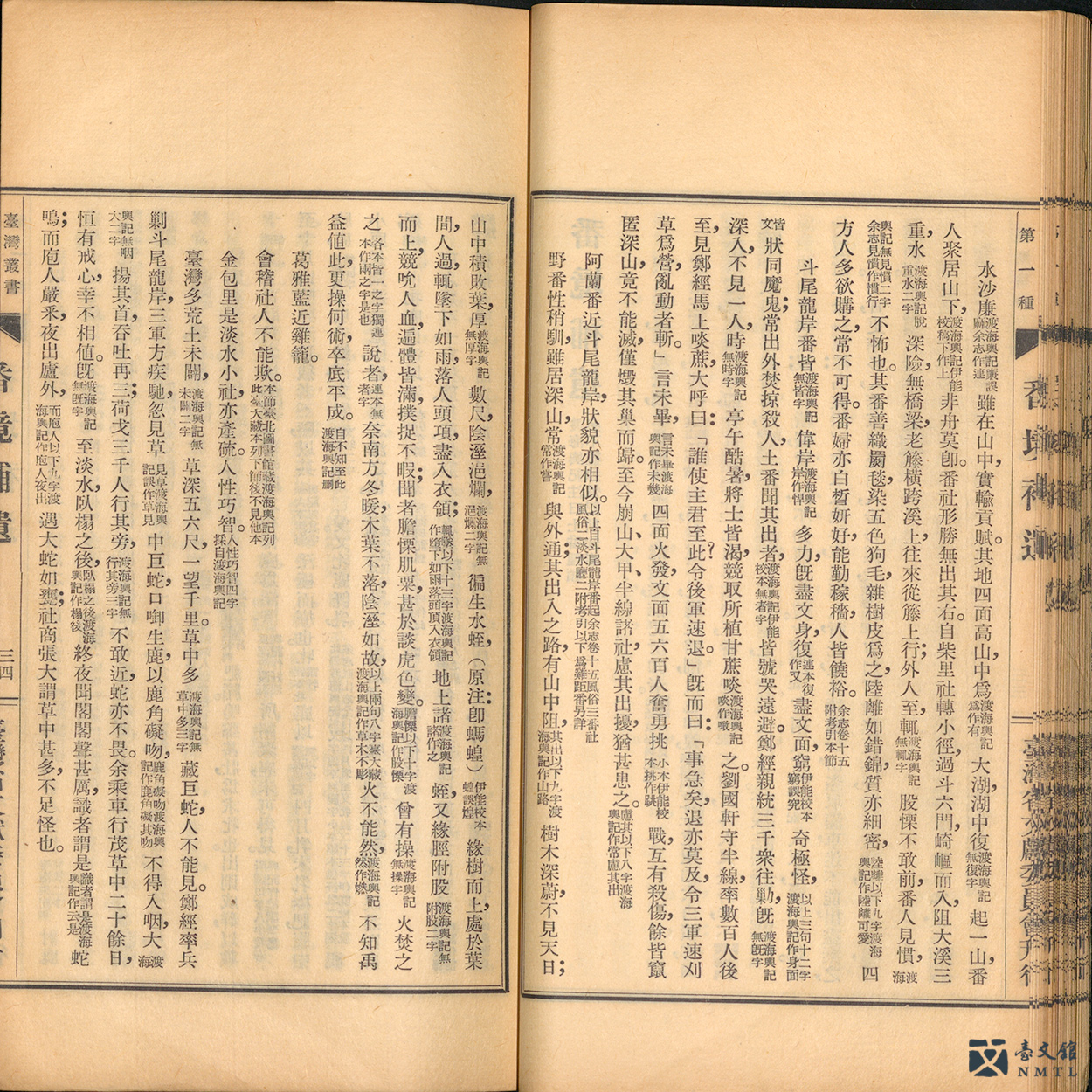
▶︎ Yu Yong-he. SMALL SEA TRAVELOGUE: THE COMPLETE EDITION. Provincial Documents Committee of Taiwan, 1950. (From the National Museum of Taiwan Literature permanent collection / Donated by Hsu Bing-ding)
Yu Yong-he (1645-?; courtesy name Canglang) was a salaried licentiate from Renhe, Zhejiang. Yu had a penchant for traveling and came to northern Taiwan in 1696 via Kinmen Island by boat to mine sulfur. He recorded his nine-month experience in Taiwan in his SMALL SEA TRAVELOGUE, a monograph that details the culture and geography of northern and western Taiwan. In addition to geographical characteristics, he also documented peculiar anecdotes heard along his trip as well as his encounter with a hideous sea snake he saw gliding sinuously between the waves while crossing the Pescadores Channel.
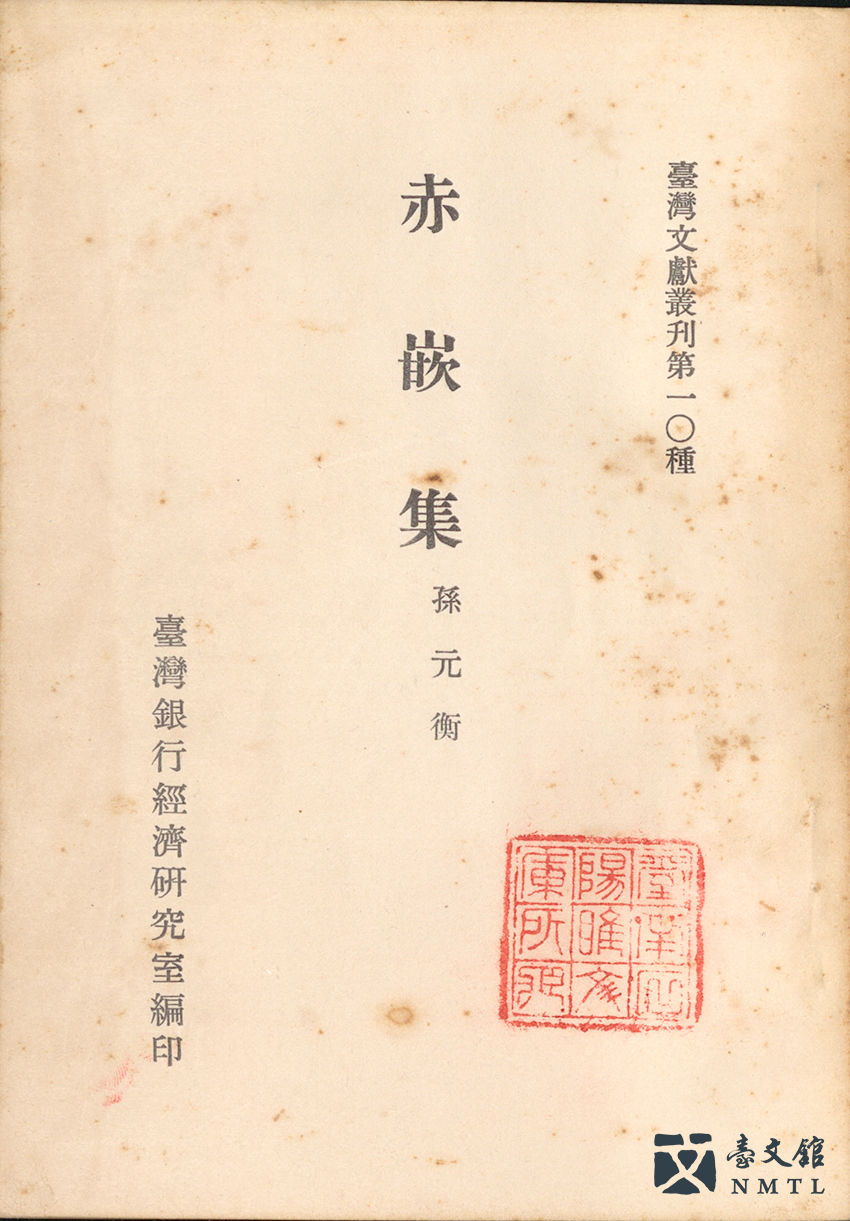
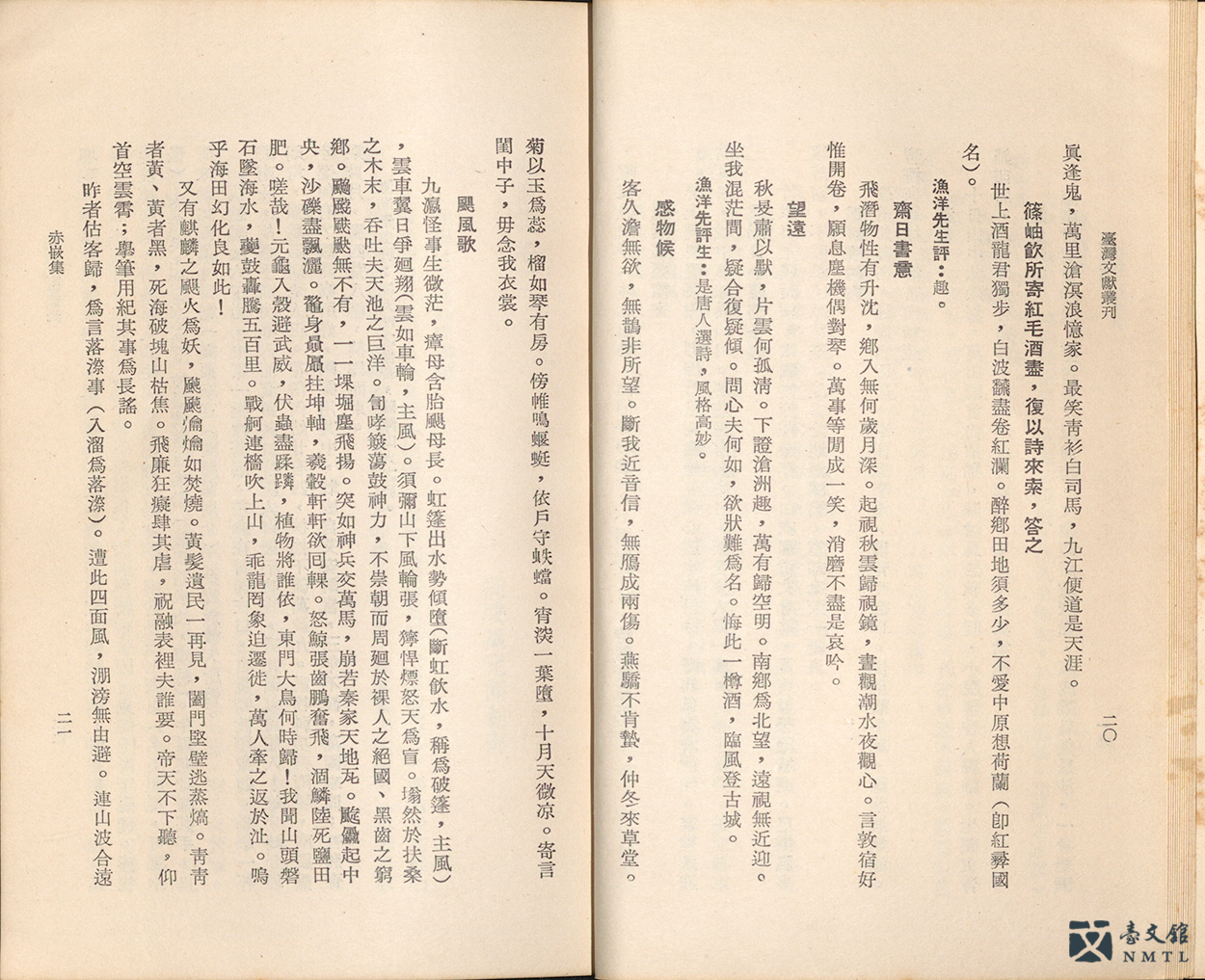
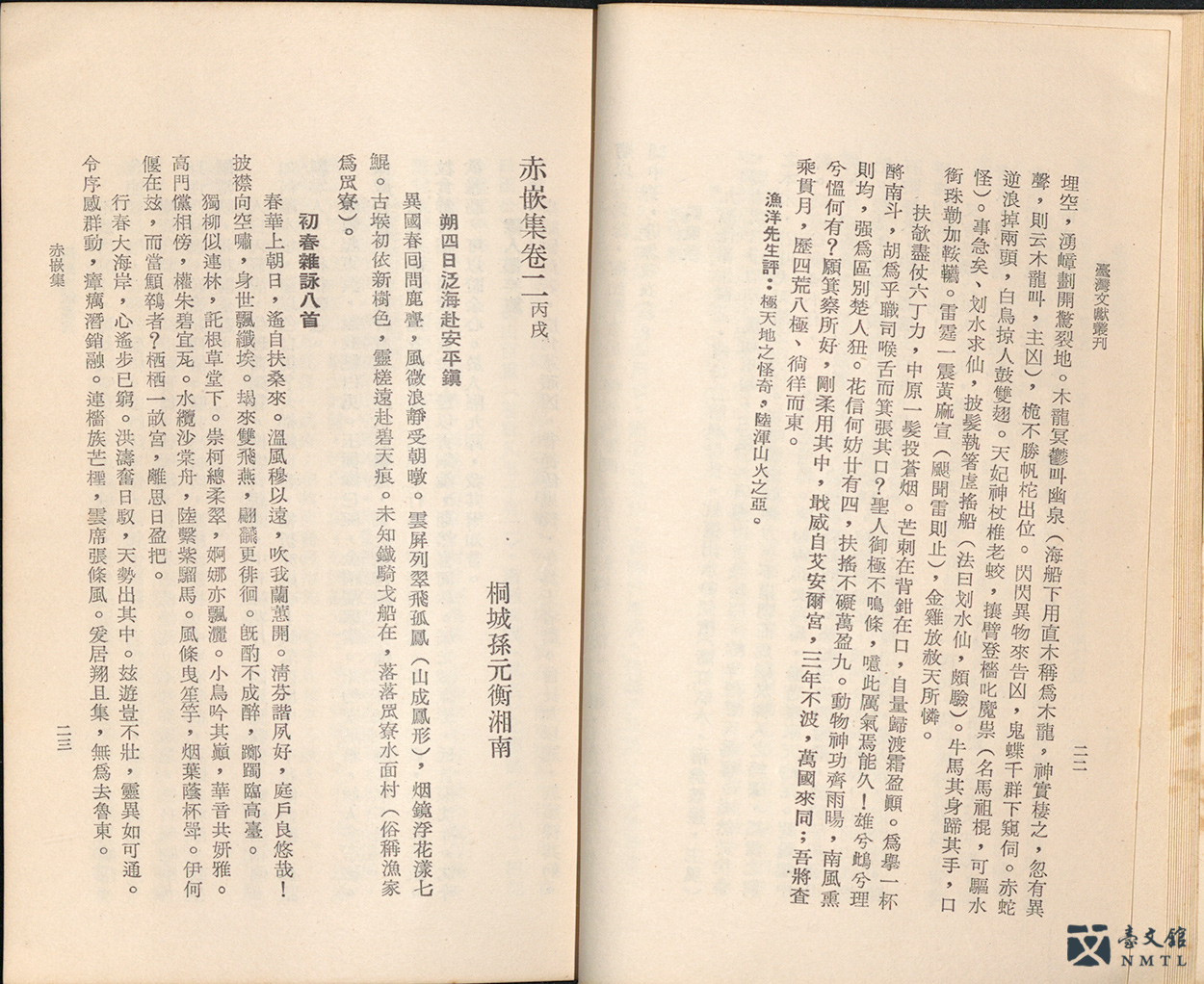
▶︎ Sun Yuan-heng. CHI-KAN SYMPOSIUM. (Taiwan Literature Series No. 10). Bank of Taiwan Economic Research Office, 1958. (From the National Museum of Taiwan Literature permanent collection / Donated by Huang Tian-heng)
Sun Yuan-heng (1661-?) served as the prefect of coastal defense in Taiwan from 1705 to 1708 before he was transferred to Shandong as the governor of Dongchang Prefecture. He wrote the four-volume CHI-KAN SYMPOSIUM during his term of office in Taiwan, skillfully recounting his experiences as well as local customs using a magical realism style of writing. He depicts Taiwan as a scary and terrifying devil's island with beasts swimming in the ocean, demons foraging in the mountains, calamities and miasmas brought about by scorching air, and monsters crawling around.
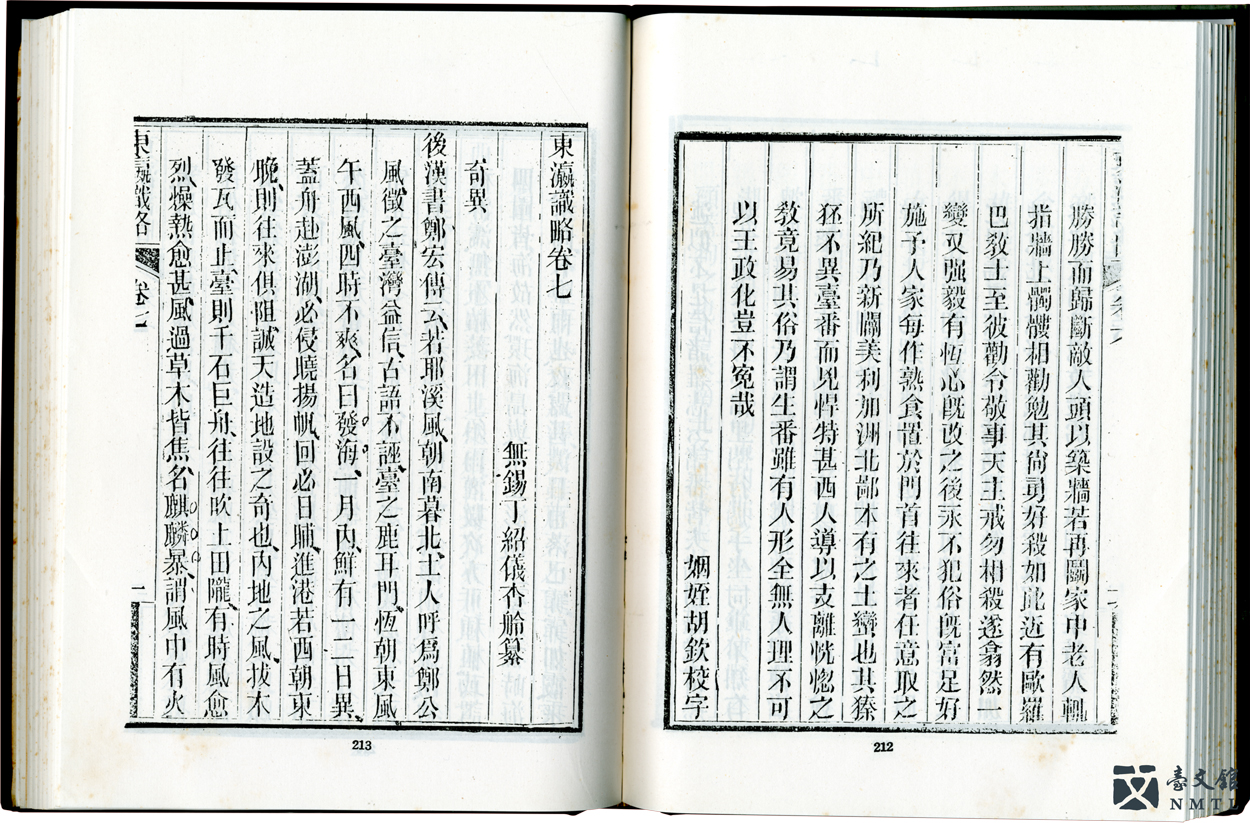
▶︎ Ding Shao-yi. THE EAST SEA JOURNAL (scanned from the 1873 edition). Chenwen, 1984. (Collection of the National Museum of Taiwan Literature)
Ding Shao-yi (1815-1884; courtesy name Xingling) was a native of Wuxi, Jiangsu. Ding arrived in Taiwan in the fall of 1847 and stayed for over eight months. THE EAST SEA JOURNAL documents Taiwan's local customs, including territory, common practices, agricultural produce, indigenous tribes, folklore, strange stories, and traditions. In 1871, Ding traveled to Taiwan again and continued writing. "Volume 7, Strange" of THE EAST SEA JOURNAL contains bizarre tales such as Wan Zheng-se's horrific encounter with a snake-headed creature during his trip by boat to Keelung Mountain and the raging wind-fiend "Qilingju" that brings scorching wind.
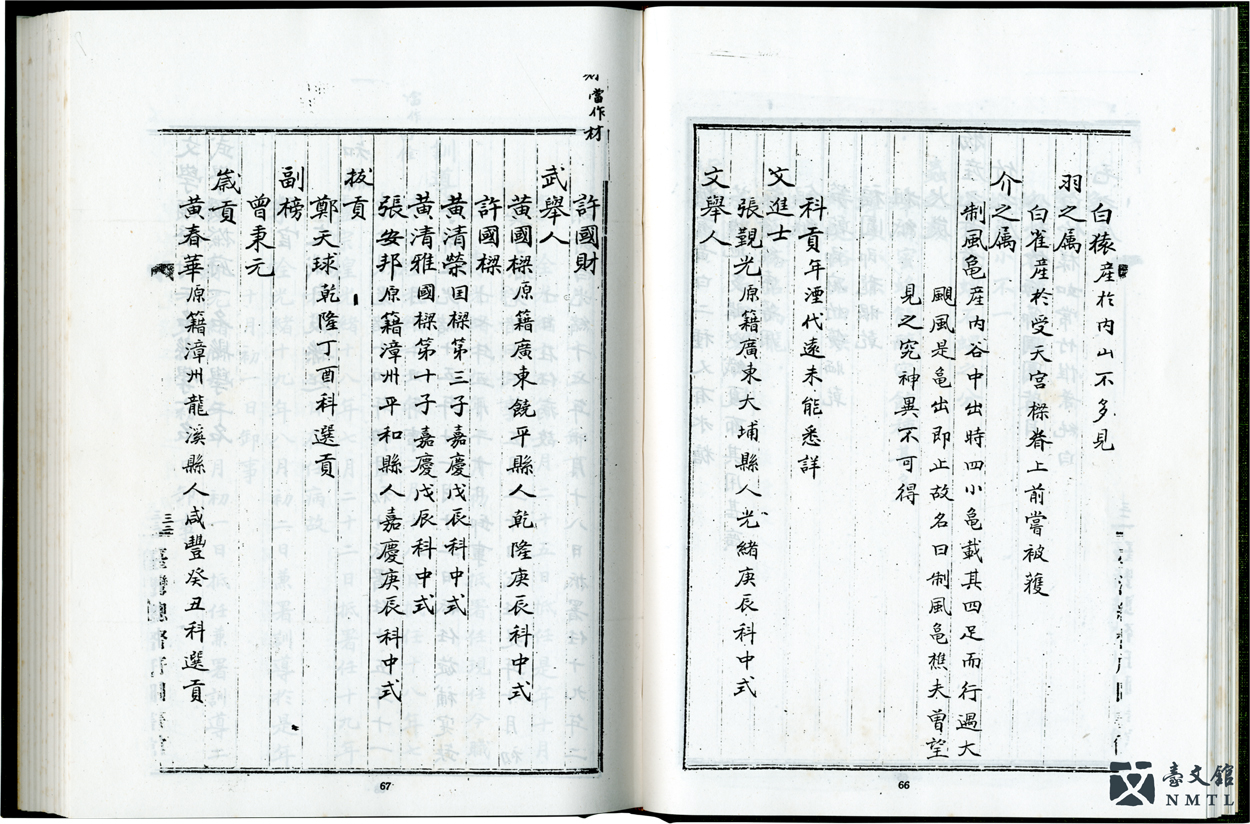
▶︎ Ni Zan-yuan. YUNLIN COUNTY INTERVIEW, Vol. 1 (scanned from the 1917 manuscript). Chenwen, 1983. (Collection of the National Museum of Taiwan Literature)
Ni Zan-yuan was a tribute student from Zhenghe, Fujian. He came to Yunlin County, Taiwan Prefecture in 1894 as a Confucian disciplinary teacher. While on Taiwan, he compiled the YUNLIN COUNTY INTERVIEW, a Qing-era chorography written to assist officials in their governance. In addition to administrative issues and local culture, it also occasionally mentioned peculiar customs and phenomena as well as unusual flora, fauna, and animals like the gale-commanding Zifonggui.
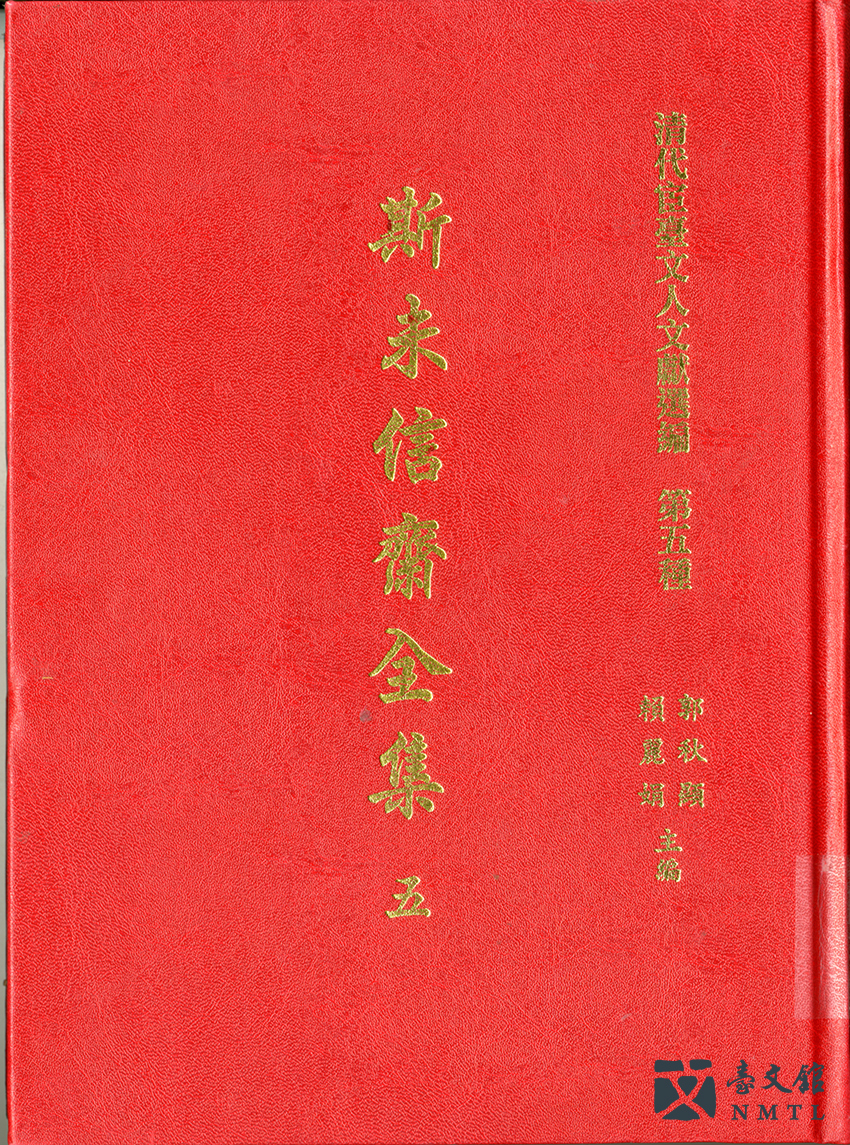
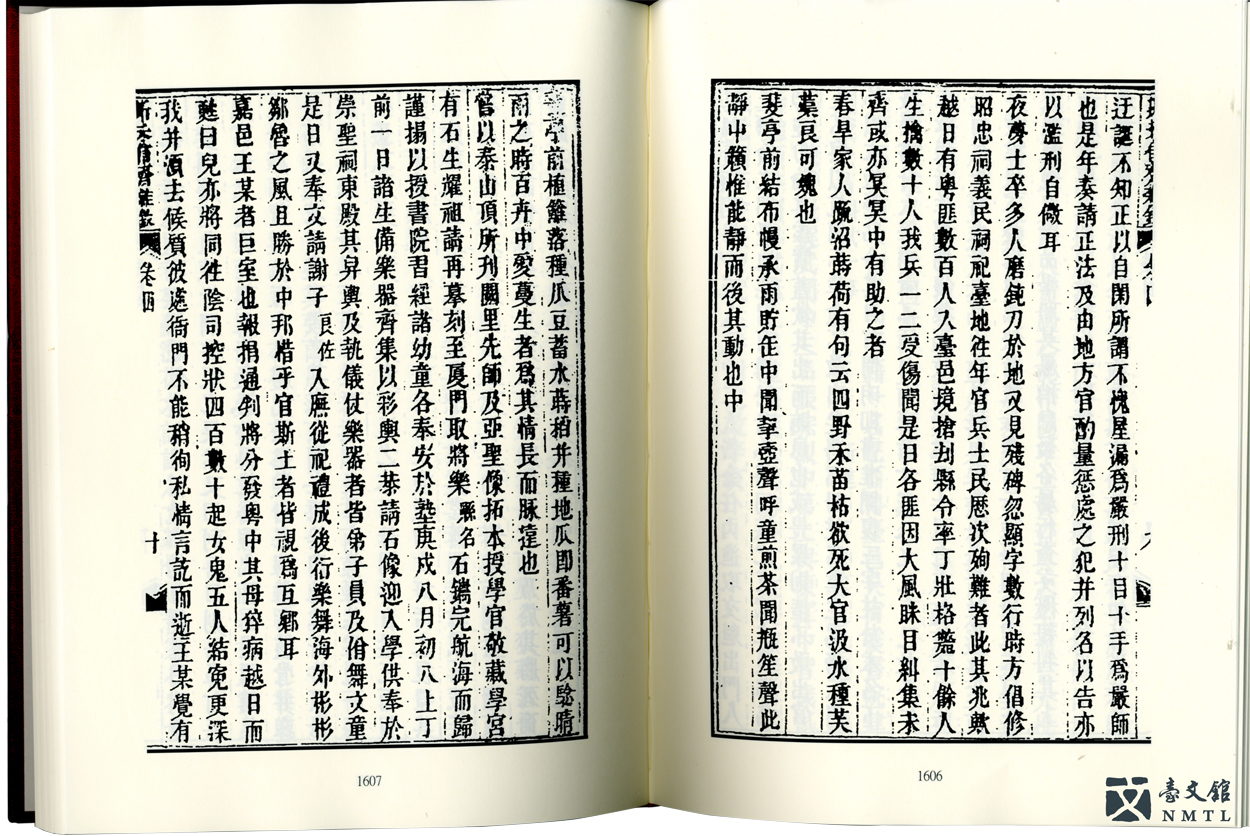
▶︎ Xu Zong-gan. THE COMPLETE WORKS OF SIWEI XINZHAI, Vol. 5 (Selected Works from Qing Literati Who Have Served in Taiwan). Longwen, 2012. (Collection of the National Museum of Taiwan Literature)
Xu Zong-gan (1796-1866; courtesy name Bozhen, pen name Shuren, and pseudonym Siweixinzhai-Zhuren) was a native of Jiangsu Province. Xu came to Taiwan from Fujian as the Taiwan circuit intendant in April 1847. After quelling the Lin Gong rebellion, Xu wrote the REPORT ON TAIWAN GOVERNANCE for Ding Yue-jian. In addition to strategies for governing Taiwan, he also wrote THE COMPLETE WORKS OF SIWEI XINZHAI, which includes a fair amount of Taiwanese folklore and war-related strange tales such as the story of a vengeful female ghost in Chiayi.
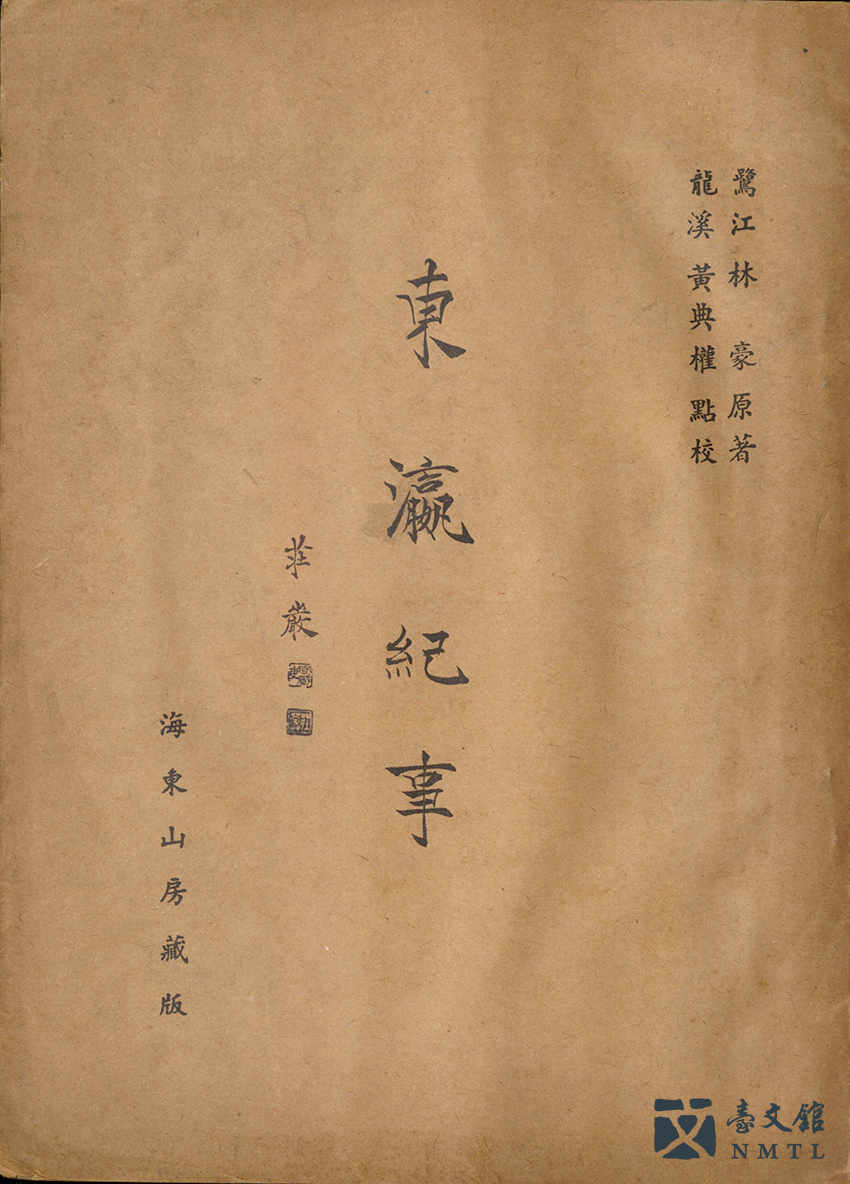
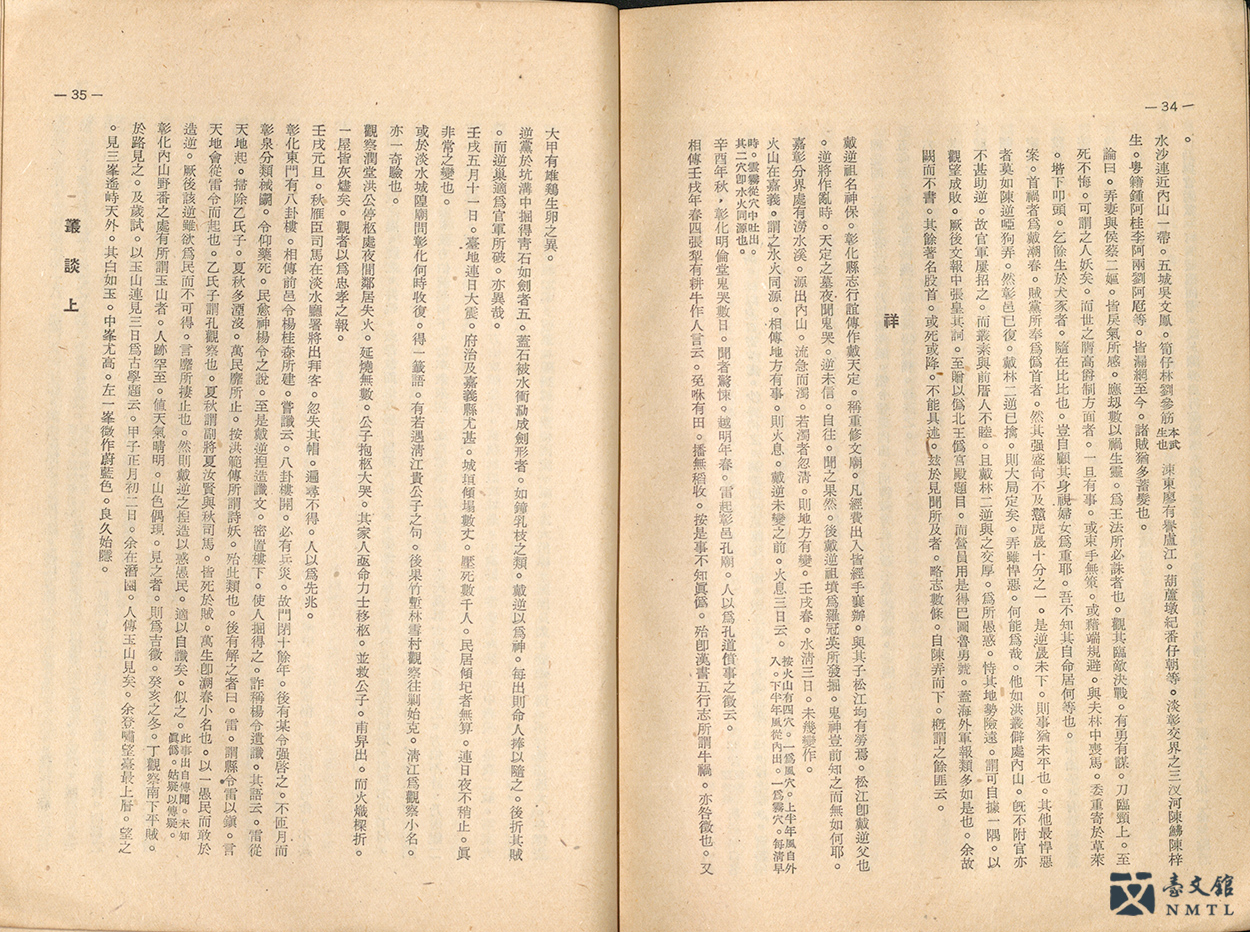
▶︎ Lin Hao. EAST SEA CHRONICLE. Haidong Shanfang, 1956. (From the National Museum of Taiwan Literature permanent collection / Donated by Hsu Bing-ding)
Lin Hao (1831-1918; courtesy name Jiazhuo and pen name Cibu) was a native of Kinmen Island. He wrote of the Tai Chao-Chuen incident in the EAST SEA CHRONICLE. Lin was once invited by Lin Zhan-mei to lecture at Qian Garden. He also edited the TAMSUI SUB-PREFECTURE CHRONICLE and the PENGHU SUB-PREFECTURE CHRONICLE, and reedited the KINMEN CHRONICLE, which was originally authored by his father, Lin Kun-huang. Besides the Tai Chao-Chuen incident, the EAST SEA CHRONICLE also mentioned war-related bizarreries such as the "human-faced bovine" in EAST SEA CHRONICLE: DISASTERS AND BOONS.
Folk Literature: Treasure Trove of the Wonderfully Creepy
Stories of paranormal goings-on told in folk vernacular reflect local sentiments much more genuinely than songs and stories written in literary Chinese.
During the Japanese Colonial Period (1895-1945), Japanese scholars brought new ideas about the research of folklore, culture, and anthropology with them to their colonial possessions. Their work turned the spotlight on long-undervalued folk stories and fables, giving them a broader recognition and awareness. In order to better facilitate their administration of the island, Japan also invested in large-scale cultural surveys, with men such as Kataoka Iwao, Suzuki Seiichirō, and Masuda Fukutarō taking the lead in surveying Chinese folk beliefs and tales of the odd and paranormal. Historically speaking, the stories of Taiwan's Austronesians were transmitted exclusively orally with the exception of occasional records made by early Western observers. It was only with the coming of the colonial era that methodical surveys and records of indigenous paranormal culture began to happen. Beyond government efforts, scholars also worked on their own in this area, publishing works that are now pillars of colonial-era scholarship on folk literature, including Taiwan Minkan Bungaku-shū (Collection of Folklore from Taiwan) and Minzoku Taiwan (Taiwanese Folklore).
In the post-colonial period after 1945, many scholars worked to continue colonial-era efforts in the realm of folklore and folk traditions. Early pioneers include Liao Han-chun, Wang Shih-lang, Huang Teh-shih, and Yang Yun-ping. During this period, Hu Wan-chwan promoted the effort to document and record oral stories and fables. Furthermore, with the rise in indigenous cultural and political consciousness through the 1980s and 1990s, Austronesian authors and scholars began recording and documenting their own tribal legends and myths.
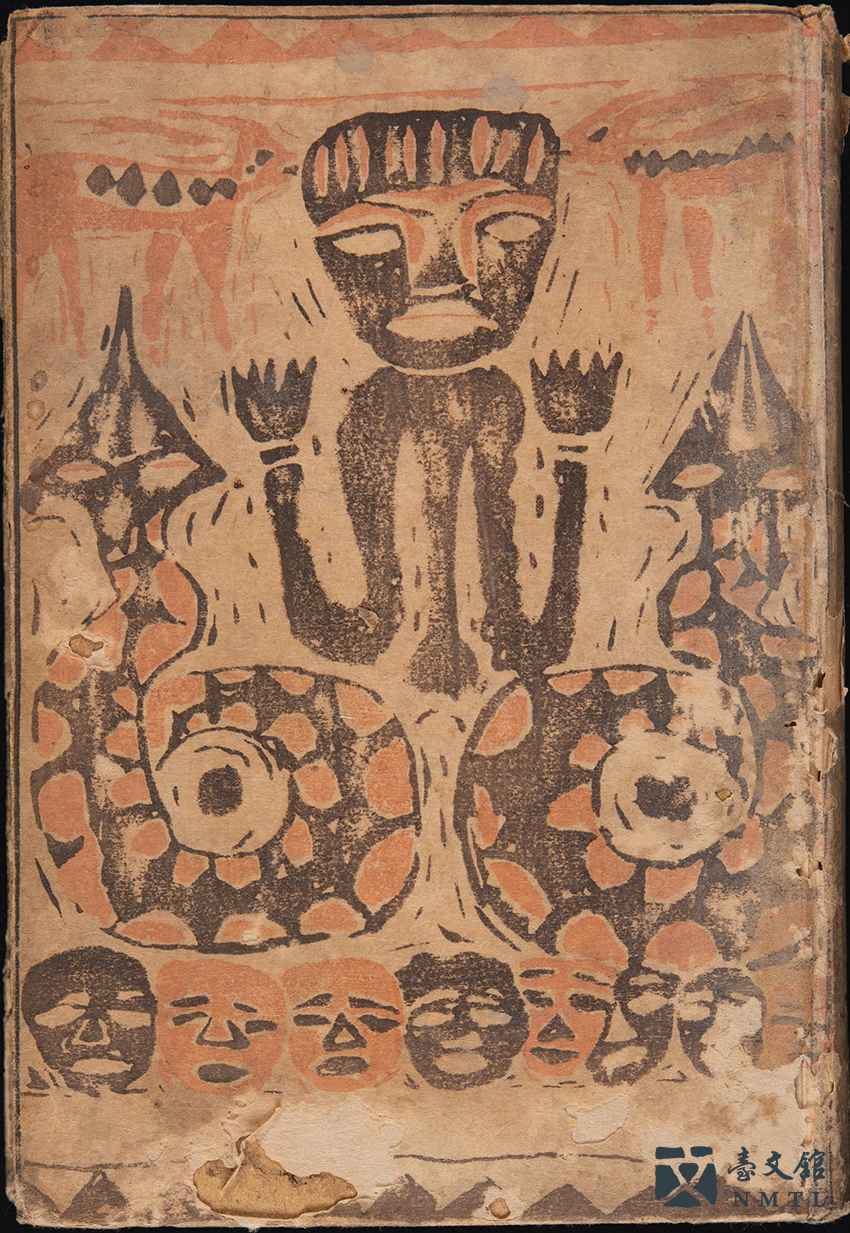
▶︎ Sayama Yukichi & Yoshitoshi Onishi. MYTHOLOGIES OF UNDOMESTICATED SAVAGES. Shigeru Sugita Bookstore, 1923. (From the National Museum of Taiwan Literature permanent collection / Donated by Huang Teh-shih)
This book, published in 1923, was authored by Yoshitoshi Onishi, a Japanese police officer, and Sayama Yukichi, an anthropologist who was also a member of the Special Taiwanese Custom and Practice Research Board. Both shared an interest in indigenous culture. The book described aboriginal customs, philosophies and cultural heritage. In also includes creation myths, indigenous folklore, hero stories, and eerie legends from various indigenous tribes.
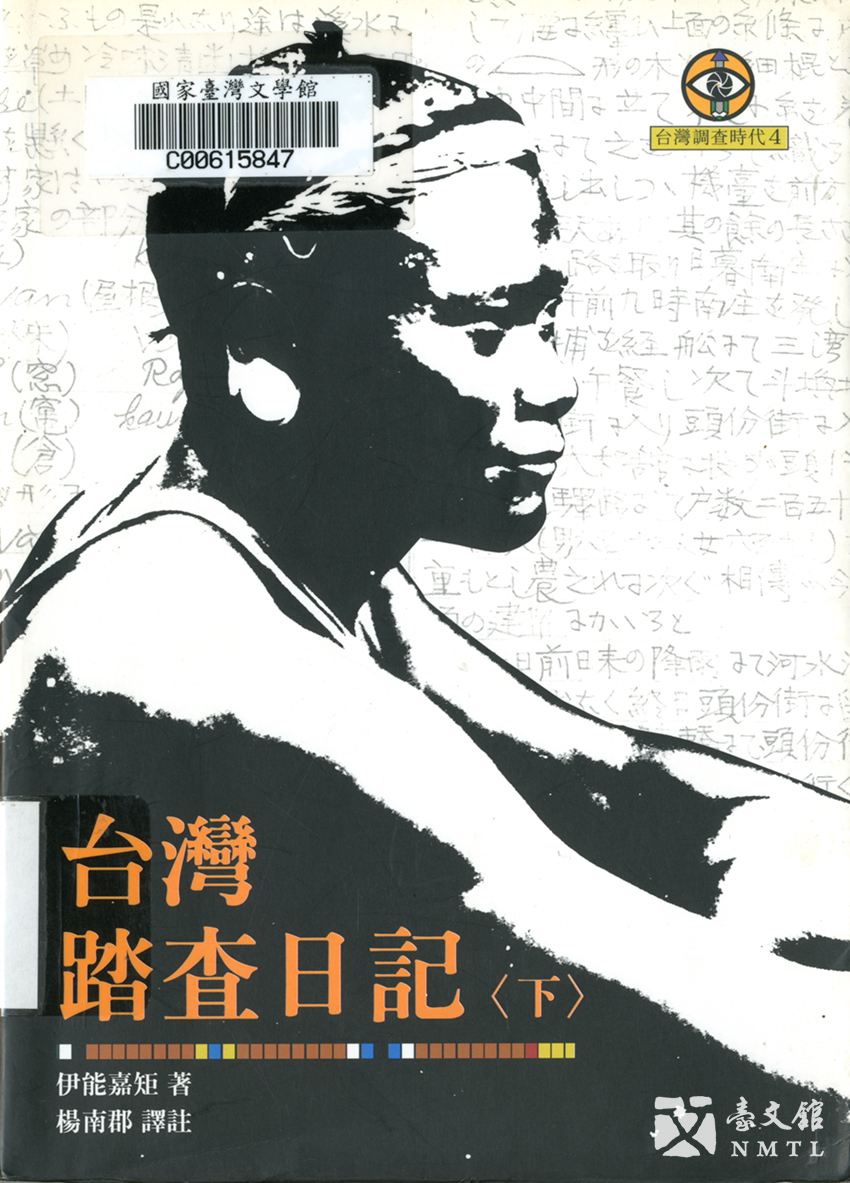
▶︎ Inō Kanori. TAIWAN FIELDWORK DIARY, Vol. II. Yuan-Liou. 2003 1st edition 4th printing. (Collection of the National Museum of Taiwan Literature)
Inō Kanori (1867-1925), a well-known anthropologist during the Japanese Colonial Period, dedicated his life to doing anthropological research related to Taiwan's indigenous peoples. After moving to Taiwan in 1895, Inō and Tashiro Yasusada, who worked at the Bureau of Industrialization of the Government-General of Taiwan, formed the "Taiwan Association of Anthropology" to research Taiwanese folklore and aboriginal culture. TAIWAN FIELDWORK DIARY, Inō Kanori's diary from his field trips across Taiwan, describes Taiwanese society and Taiwan's indigenous communities as they were a century ago. The diary also occasionally contains preternatural tales. For instance, Inō recorded the legend of a feline imp usurping a temple on Bazhao (Wang'an) Island in 1901.
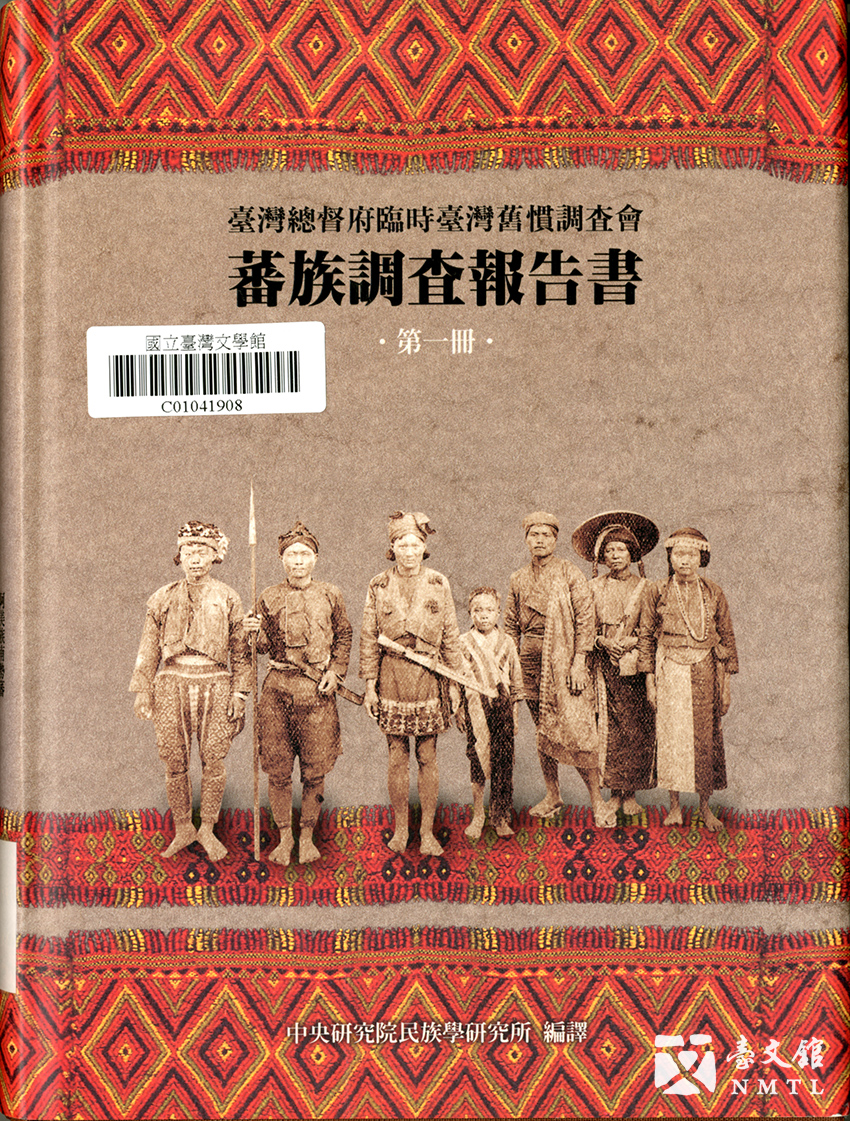
▶︎ The Special Taiwanese Custom and Practice Research Board of the Government-General of Taiwan. BANZOKU CHŌSA HŌ KOKUSHO (INVESTIGATION OF THE SAVAGE PEOPLES) REPORT, Vol. 1. Compiled by the Institute of Ethnology, Academia Sinica, 2007. (Collection of the National Museum of Taiwan Literature)
During the Japanese Colonial Period, the Government-General of Taiwan established the Special Taiwanese Custom and Practice Research Board. The Research Board's Savage Section, after its formation in 1909, extensively investigated Taiwan's indigenous cultures, and subsequently published the BANZOKU CHŌSA HŌ KOKUSHO (INVESTIGATION OF THE SAVAGE PEOPLES) REPORT in 1915. The members of the Research Board visited indigenous villages, interviewed villagers and local Japanese police officers, and collected data using anthropological fieldwork methods. The book was systematically prepared based on the data they collected along with photos, maps, and illustrations. In addition to aboriginal customs, the book also documented a multitude of uncanny stories.
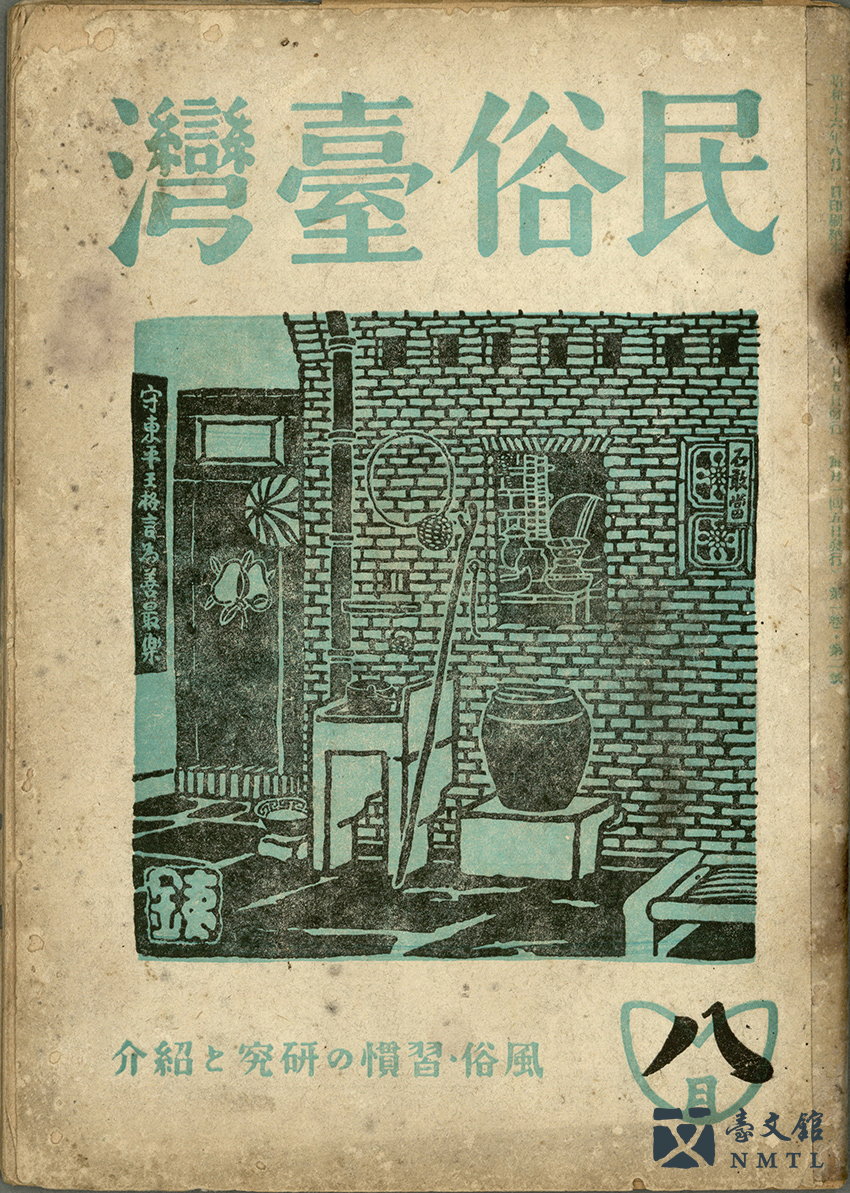
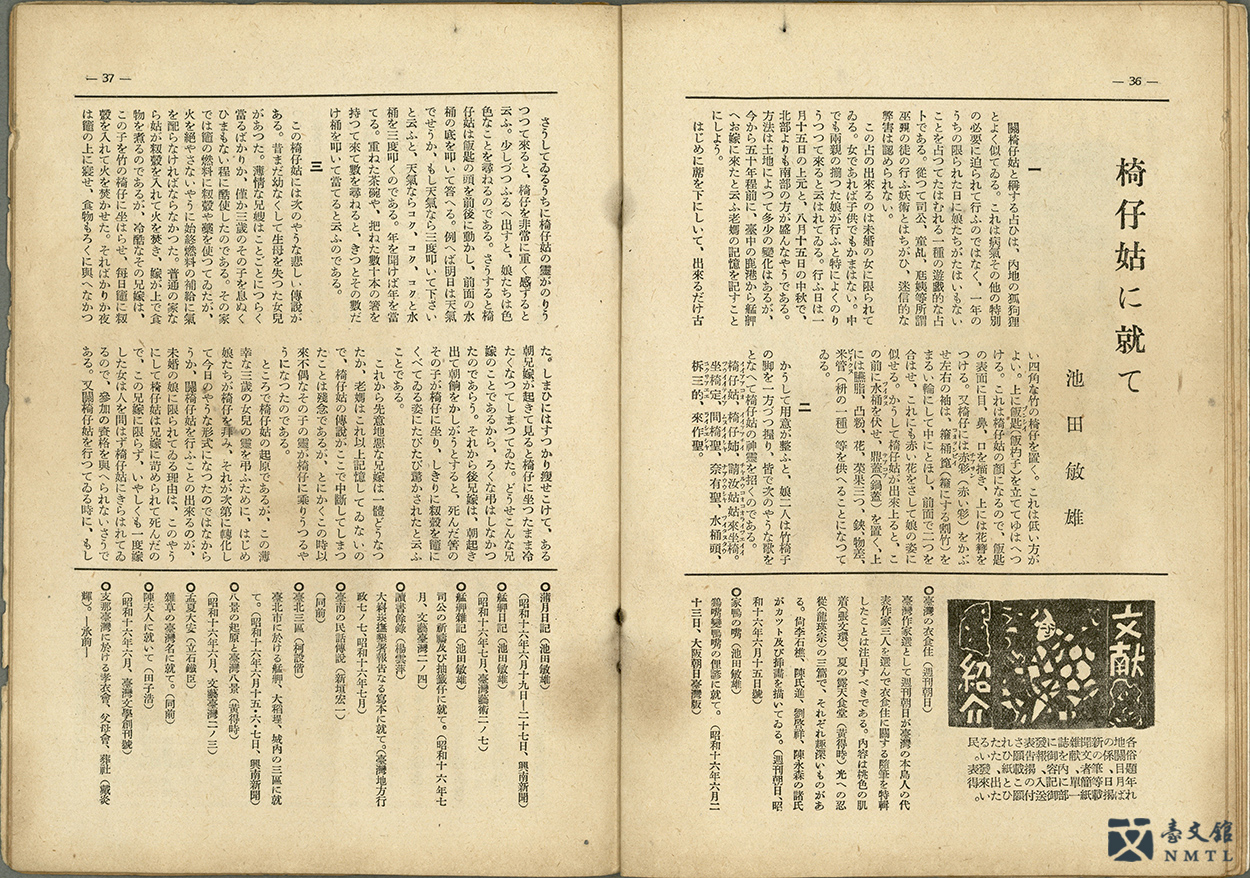
▶︎ MINZOKU TAIWAN (TAIWAN FOLKLORE), Vol. 1 No. 2. Toto Books Taihoku (Taipei) Branch, 1941. (From the National Museum of Taiwan Literature permanent collection / Donated by Long Ying-zong)
Founded by Ikeda Toshio, MINZOKU TAIWAN pioneered Taiwanese folkloristics, publishing a total of 43 issues from 1941 to 1945. The magazine introduced diverse cultural topics, including customs, deity worship, traditional festivals, divinations and curses, folk beliefs, rituals, proverbs, legends, and performing arts. Also included were paranormal tales and urban legends like the Golden Goblin, Hu Gu Po (Grand Aunt Tiger), Bamboo Ghost, Lamp Monkey, and Little Girl in a Chair.
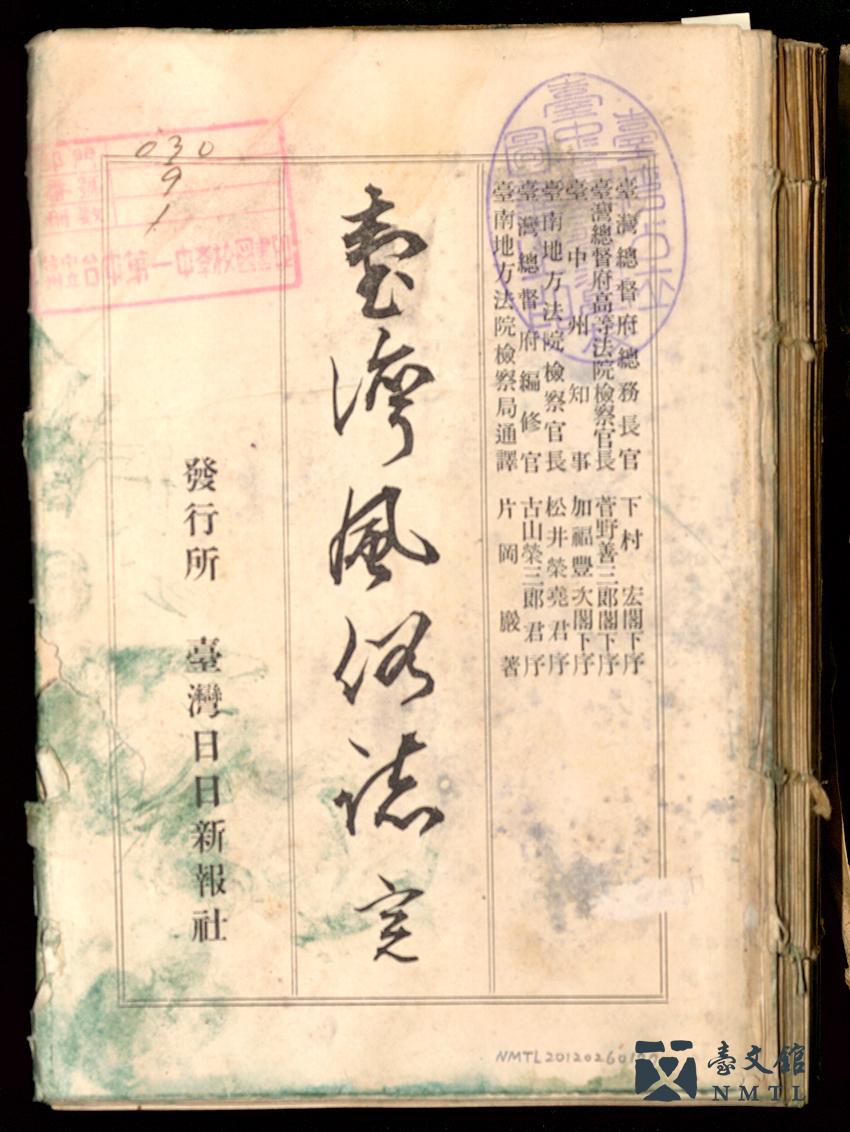
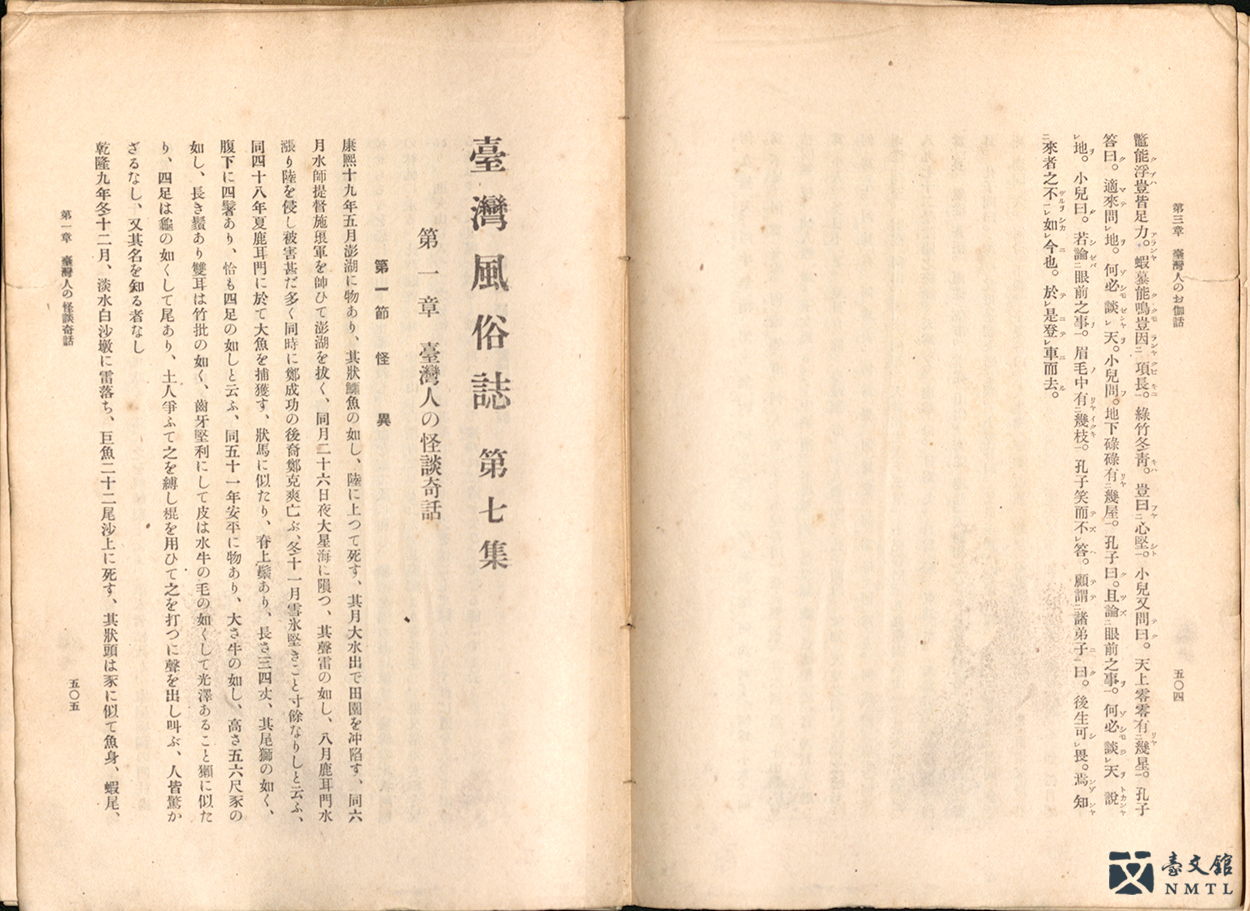
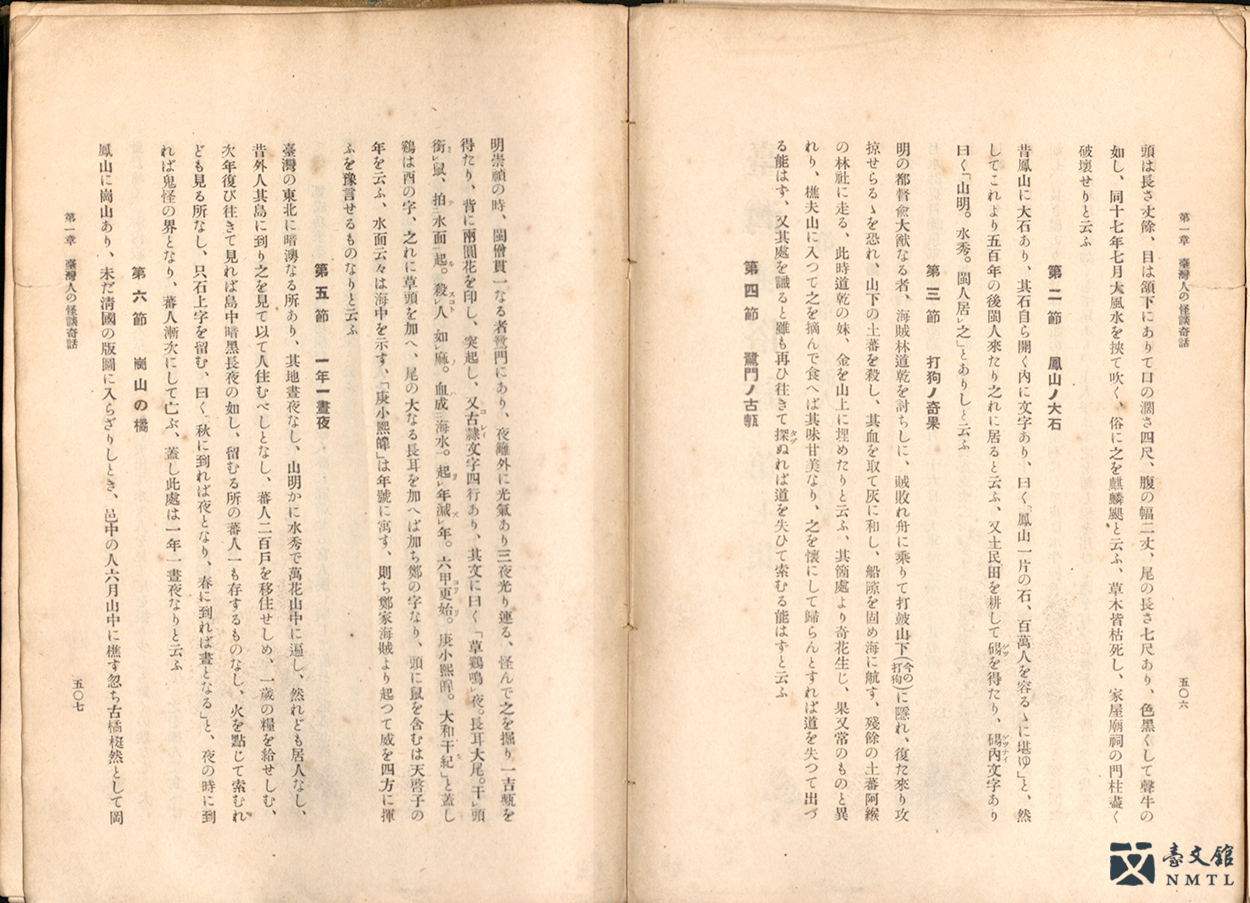
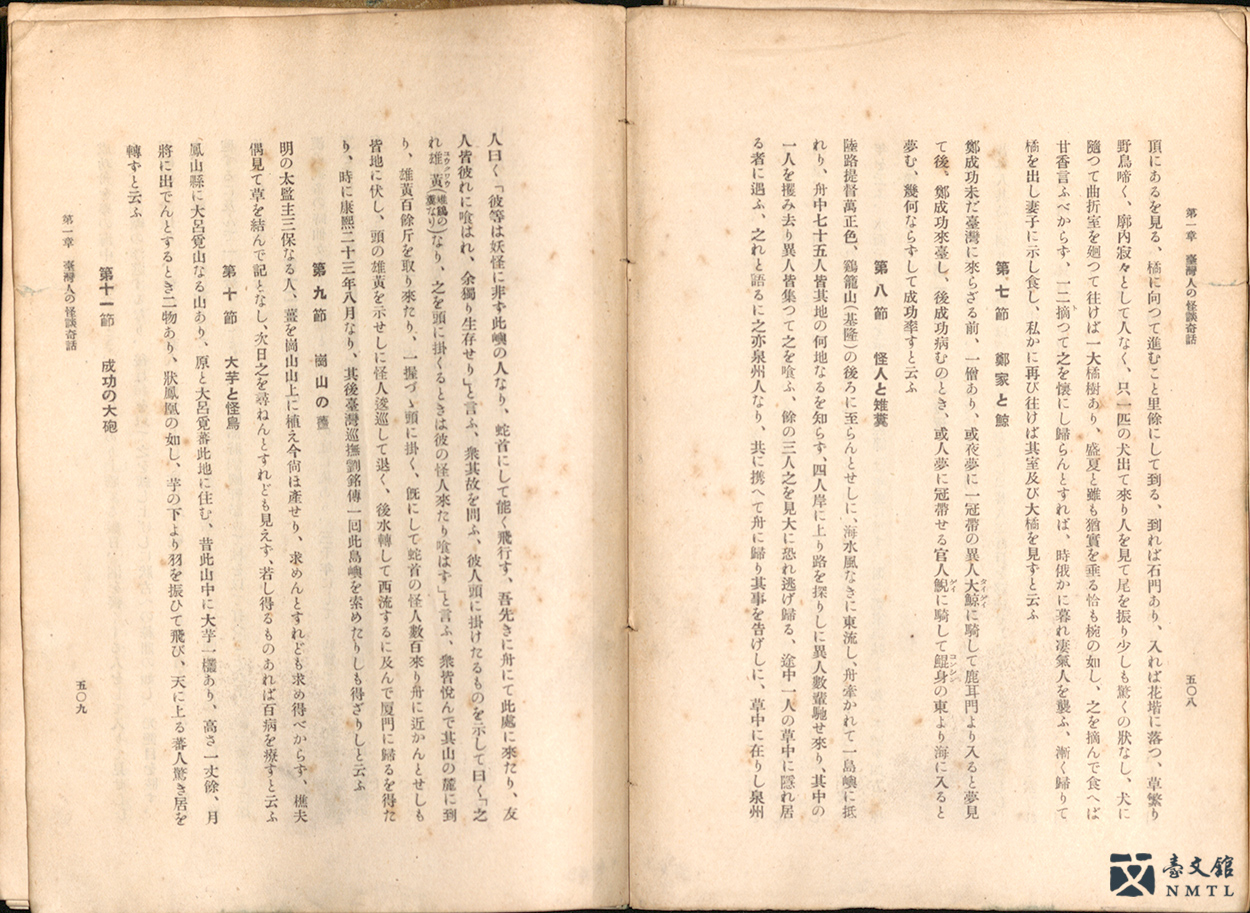
▶︎ Kataoka Iwao. TAIWAN FŪZOKUSHI (TAIWAN MANNERS AND CUSTOMS). Taiwan Nichinichi Shimpo (Taiwan Daily News), 1921. (From the National Museum of Taiwan Literature permanent collection / Donated by Taichung Municipal Taichung First Senior High School)
Kataoka Iwao was a Japanese folklorist who worked as a prosecution interpreter at Tainan District Court. In February 1921, he published TAIWAN FŪZOKUSHI (TAIWAN MANNERS AND CUSTOMS) in the Taiwan Nichinichi Shimpo (Taiwan Daily News), exploring topics such as Taiwanese daily etiquette, family life, society, festivals, oral traditions, supernatural tales, proverbs, songs, and religious beliefs. The book is indispensable to the study of Taiwanese culture. Stories about the mythical creatures of Taiwan are mostly contained in Volume 7 in the chapter "Uncanny Stories of The Taiwanese", which includes "Strange Stones of Fengshan", "Strange Fruits in Takao", "A Year Passes in One Day and One Night", "Snake-man Island", and "Taro and the Macabre Bird."
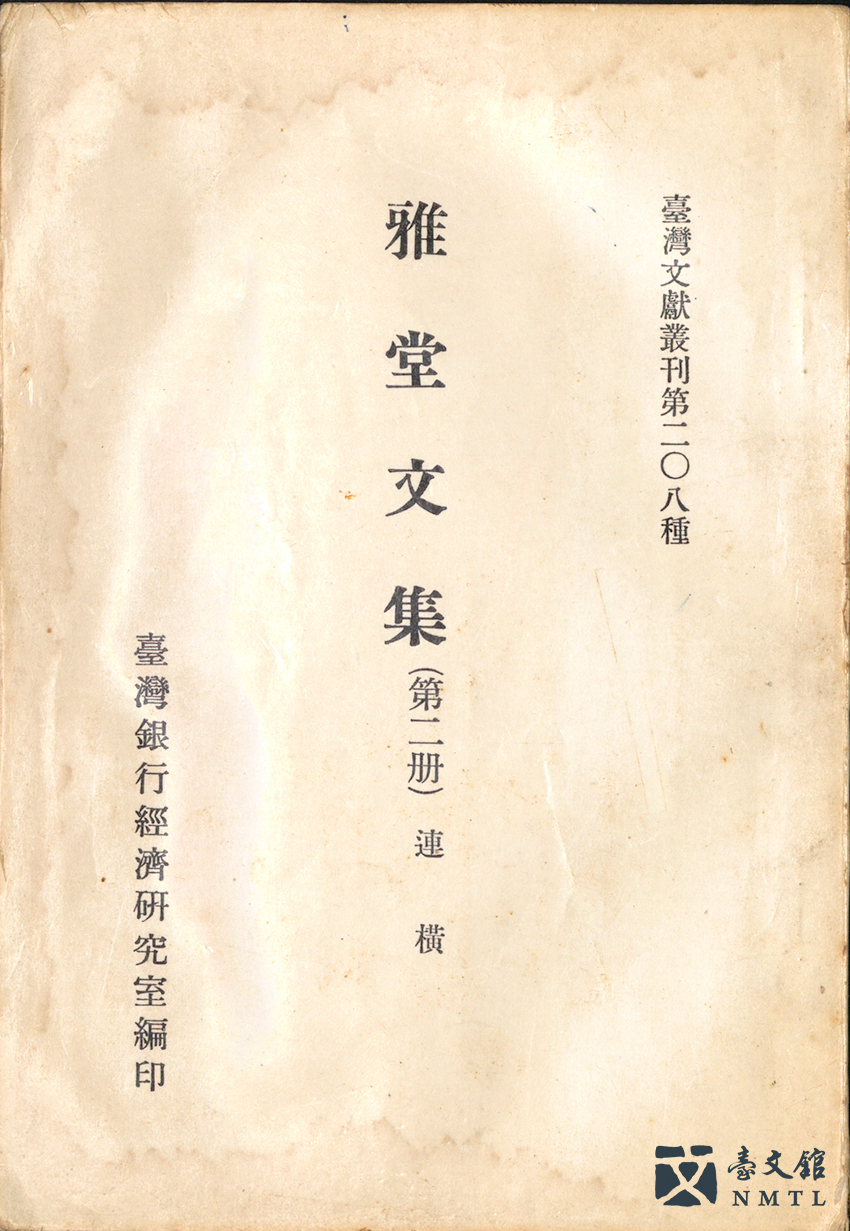
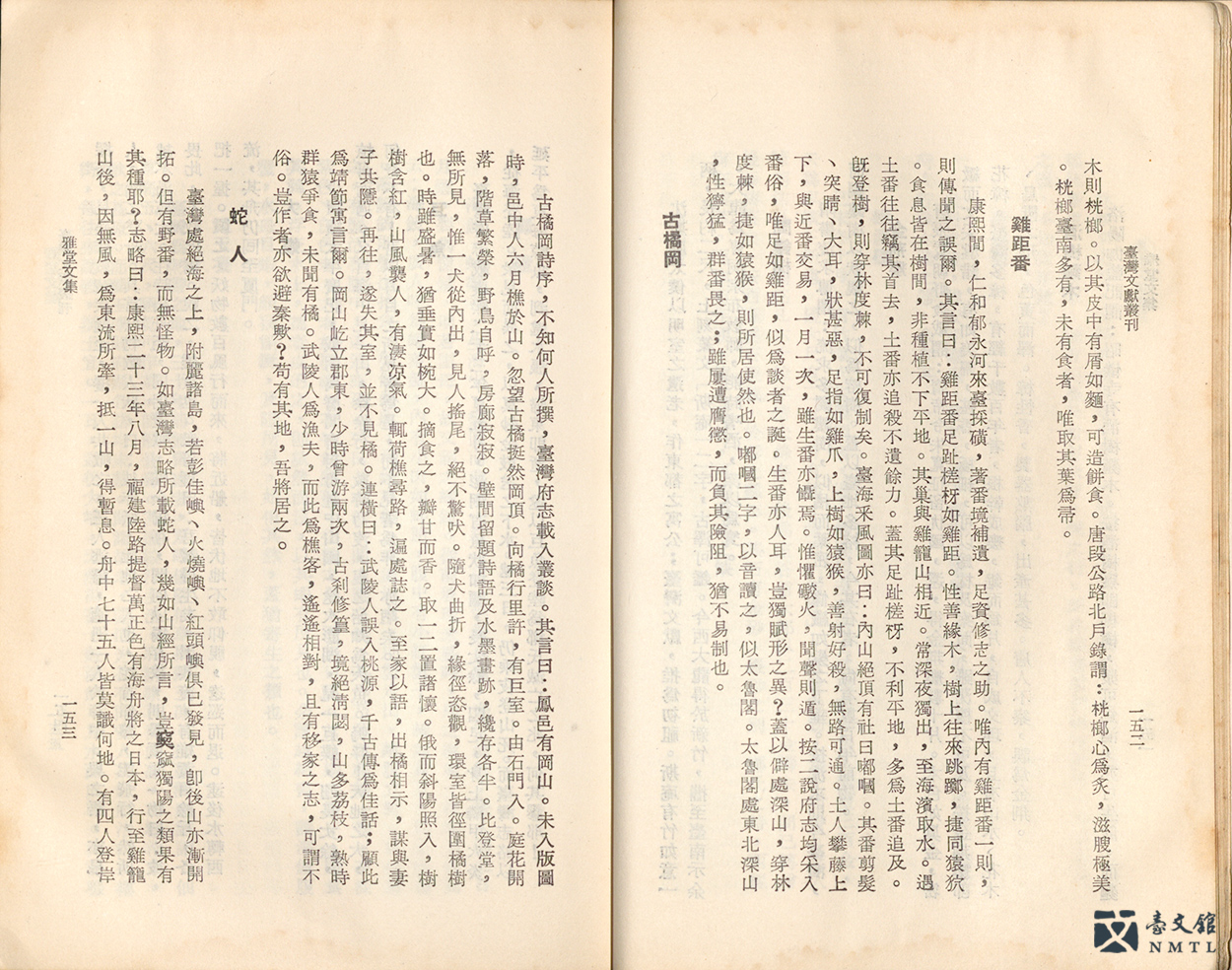
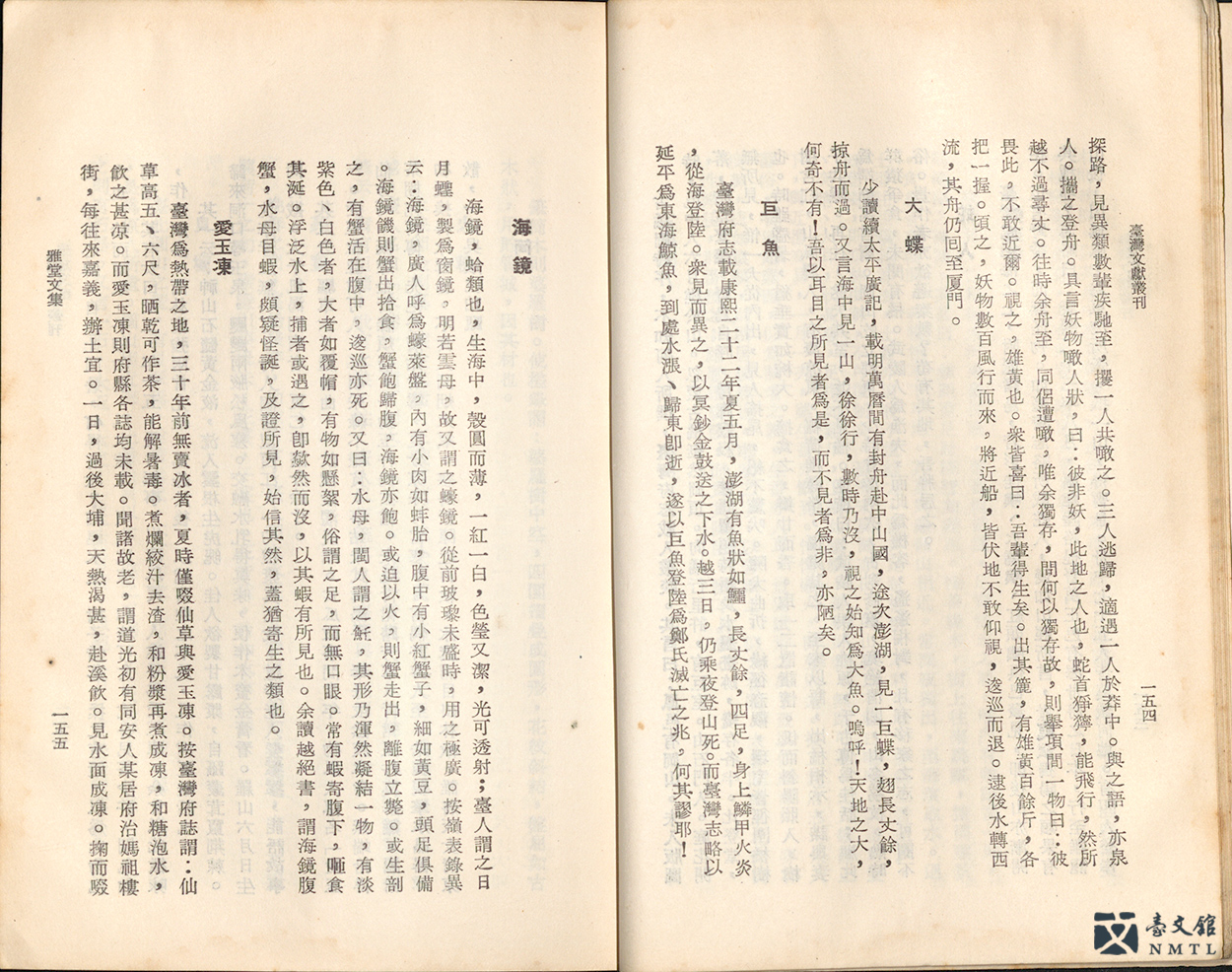
▶︎ Lian Heng. YATANG ANTHOLOGY, Vol. 2. (Taiwan Literature Series No. 208). Bank of Taiwan Economic Research Office, 1964. (From the National Museum of Taiwan Literature permanent collection / Donated by Huang Tian-heng)
Lian Heng (1878-1936; courtesy name Yatang and pen names Wu Gong and Jian Hua) edited the GENERAL HISTORY OF TAIWAN during the Japanese Colonial Period. During his extensive search of historical materials, he also came across numerous preternatural narrations in chorographic books. Due to the fact that these accounts could not be incorporated into the GENERAL HISTORY OF TAIWAN, he excerpted them in the YATANG COLLECTION and ELABORATION ON TAIWAN, representing an early attempt to organize Taiwanese mythology and folklore. In VOLUME 3: CASUAL NOTES ABOUT TAIWAN, Lian Heng cites strange tales including Shi Hua-you's last writing, Sanbao ginger, snake-man, giant fish, and the Anping monster.
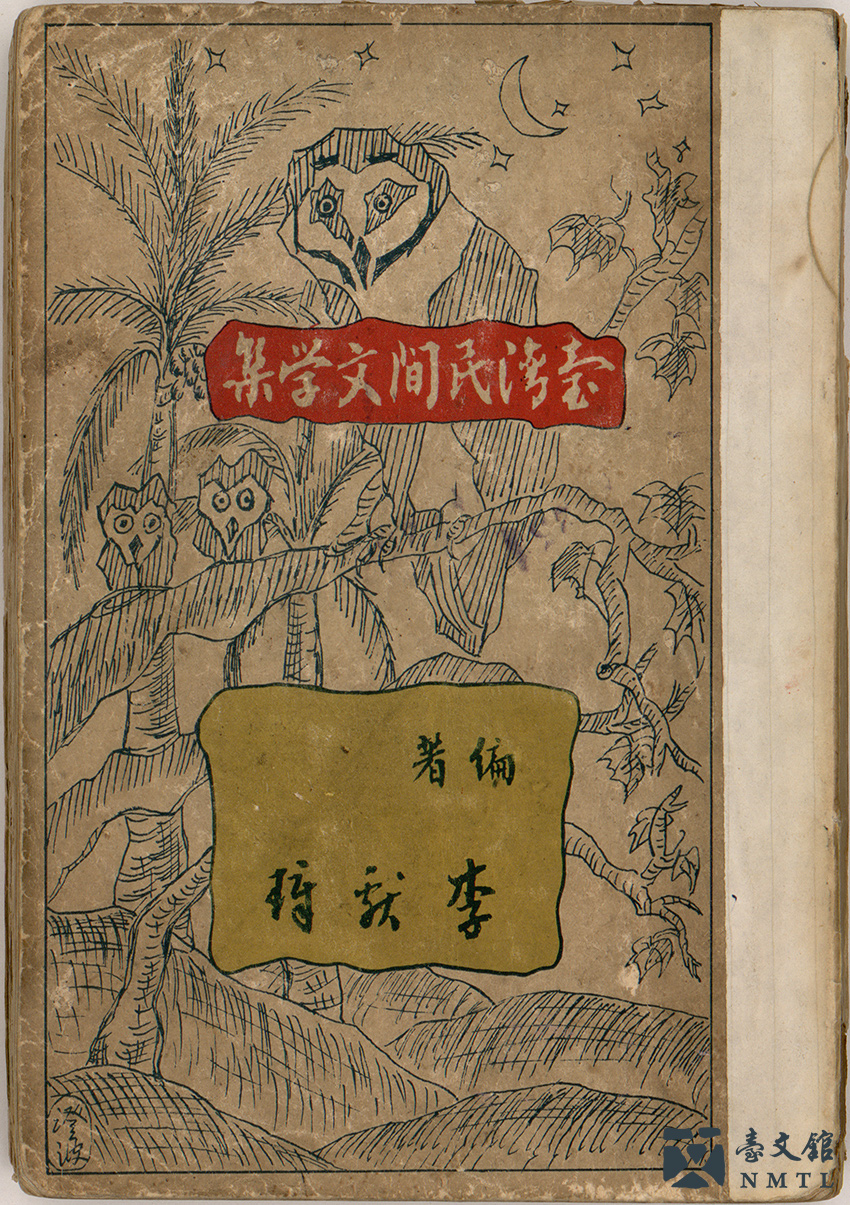
▶︎ Lee Shying-Chuang. TAIWAN MINKAN BUNGAKU-SHŪ (COLLECTION OF FOLKLORE FROM TAIWAN). Wang Shih-lang,1936. (From the National Museum of Taiwan Literature permanent collection / Donated by the family of Wu Shou-li)
Lee Shying-chuang (1914-1999) was a Taiwanese folklore scholar and linguist. He began to collect Taiwanese folk songs and legends in earnest during the 1930s, with his results published in his 1936 work TAIWAN MINKAN BUNGAKU-SHŪ (COLLECTION OF FOLKLORE FROM TAIWAN). The publishing of this book marked the point that the New Literature Movement began to take up and address folk literature traditions. Taiwan author Lai Ho (Loa Ho) critiqued this work, saying: "This work is a satisfyingly thorough compendium of Taiwan folk literature." This book includes traditional ballads as well as stories, with the former collected through field work and the latter adapted and composed by current authors.
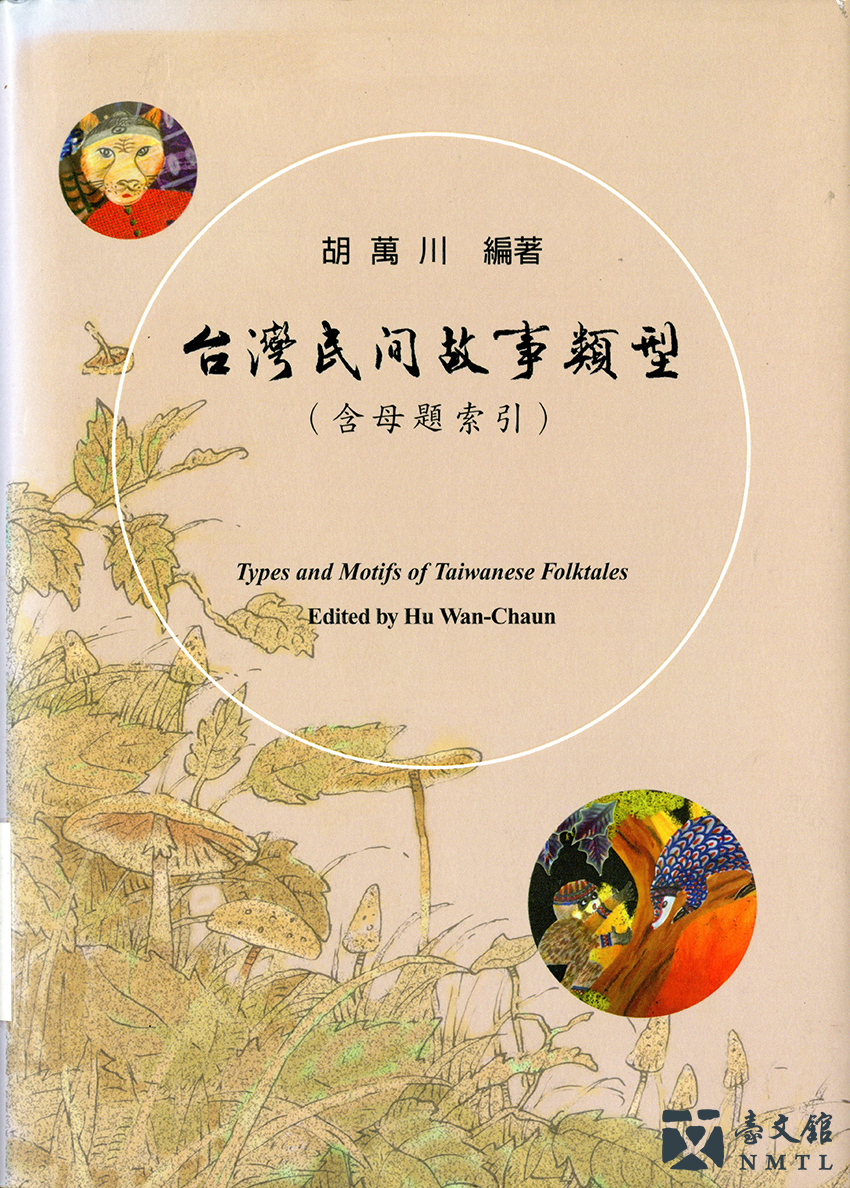
▶︎ Hu Wan-chwan. TYPES AND MOTIFS OF TAIWANESE FOLKTALES. Liren Books, 2008. (Collection of the National Museum of Taiwan Literature)
Hu Wan-chwan (1947-), a native of Changhua, is a professor in the Department of Chinese Literature and the Graduate Institute of Taiwan Literature at National Tsing Hua University. He specializes in Chinese classical novels, mythology, legends, and Taiwanese folk literature, with publications including BETWEEN REALITY AND IMAGINATION: AN INQUIRY INTO THE NATURE OF MYTH AND LEGEND and THEORIES AND PRACTICES OF FOLK LITERATURE. Since the 1990s, Hu has edited a series of Taiwanese folk literature materials covering regions including Kaohsiung County, Changhua County, Yunlin County, Taichung County, Tainan County, Miaoli County, and Taoyuan County, establishing himself as an influential scholar in promoting the study of Taiwanese folk literature.
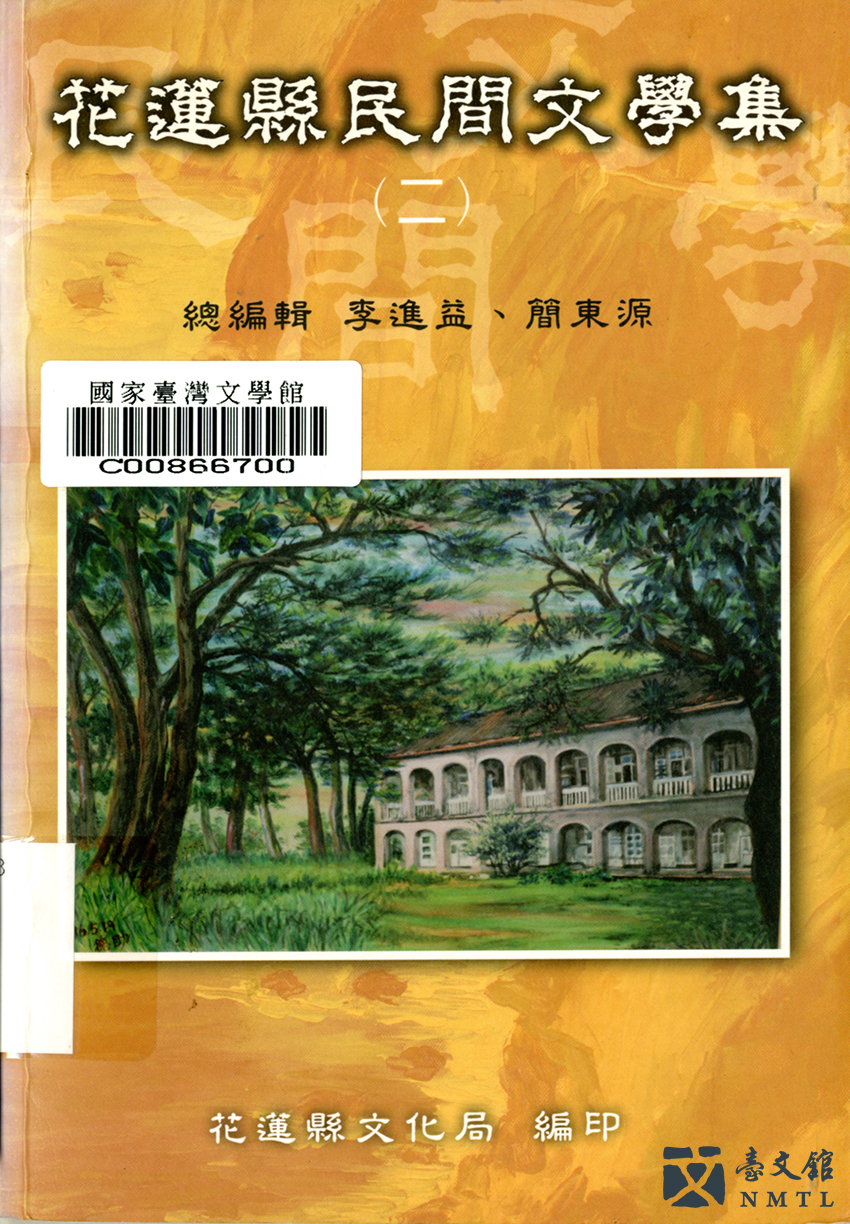
▶︎ Li Jin-yi (editor in chief). COLLECTION OF HUALIEN COUNTY FOLKLORE, Vol. 2. Hualien County Cultural Affairs Bureau, 2005. (Collection of the National Museum of Taiwan Literature)
In 2004, the Hualien Cultural Affairs Bureau cooperated with the private sector to collect folk literature specific to Hualien. After two years of field study and interviews, the COLLECTION OF HUALIEN COUNTY FOLKLORE, for which Li Jin-yi served as Editor-in-Chief, was published in 2005. In addition to folk legends, the book contains several paranormal tales. The variations contained in these local legends demonstrate the intermingling of traditions from various ethnic groups. For instance, although "The Story of Fanpo Ghost (the Old Indigenous Woman)" from Yuli Township is about a malicious indigenous witch, it is a story largely told by Chinese residents in the area.
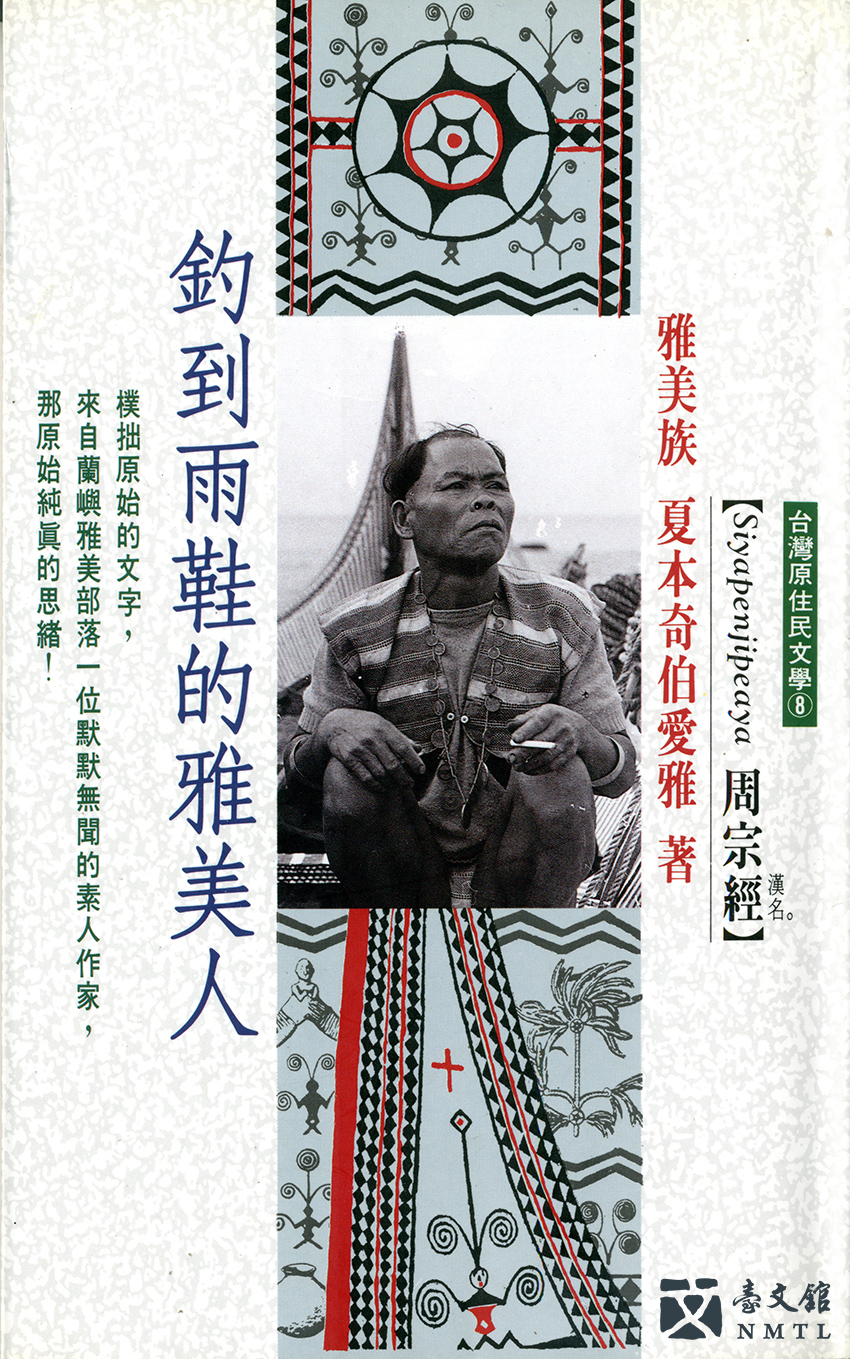
▶︎ Zhou Zong-jing. THE YAMI WHO FISHED A RAIN BOOT. MorningStar, 1995, 1st edition 3rd printing. (Collection of the National Museum of Taiwan Literature)
Zhou Zong-jing, a Tao, whose native name is Syapen Jipeaya, is a former Tao language teacher. He has dedicated himself to promoting indigenous culture and preserving traditional Tao songs of Orchid Island through simple and unadorned writing. His works include THREE FLYING FISH (2004) and SONGS OF THE YAMI: ANCIENT TUNES (2011). The work THE YAMI WHO FISHED A RAIN BOOT includes cultural legends and myths of Orchid Island such as "Duel between a Demon and a Mortal" and "Legend of the Coconut Oil Witch."
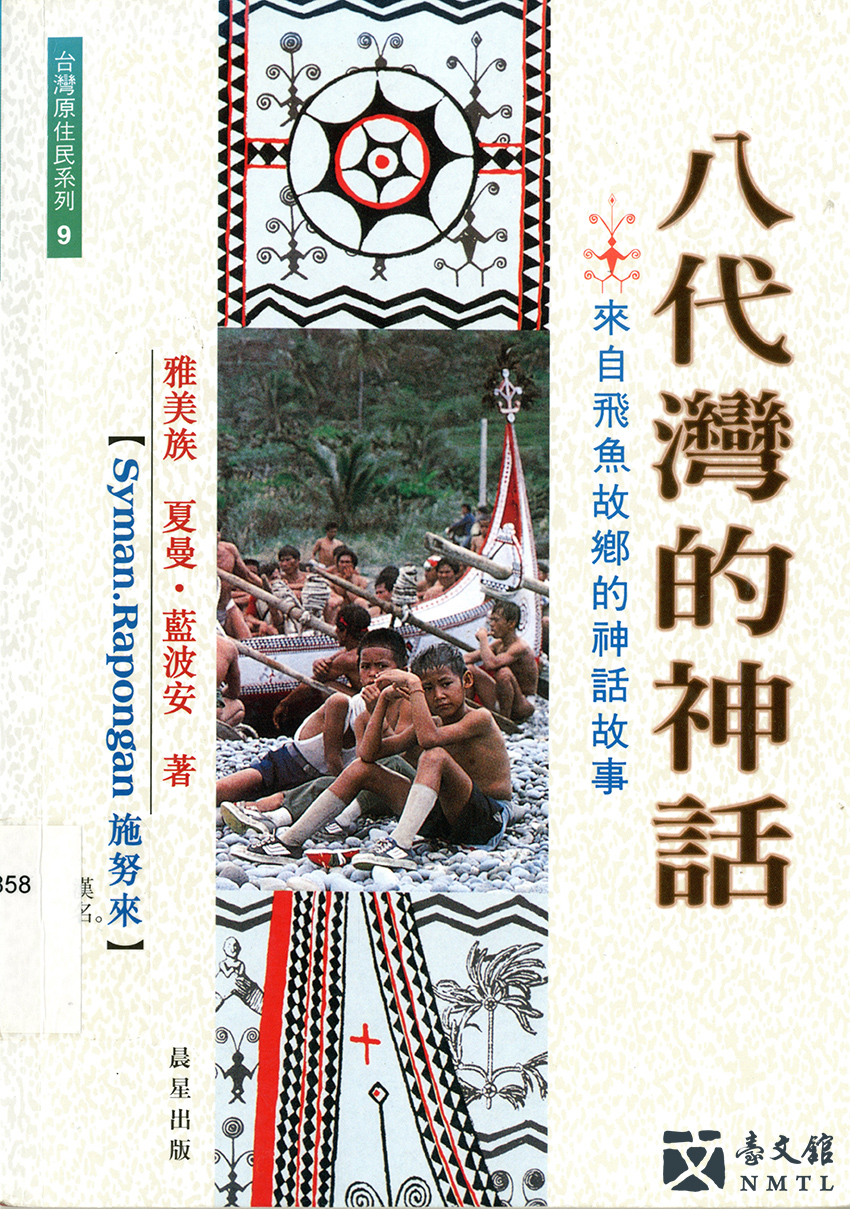
▶︎ Syaman Rapongan. THE MYTH OF THE BADAIWAN. MorningStar, 1998, 1st edition 3rd printing. (Collection of the National Museum of Taiwan Literature)
Syaman Rapongan (1957-), a Tao, founded the Island Indigenous Science Studio in 2013 to promote Orchid Island's Tao culture. He is an iconic writer of Taiwan's maritime literature, and is renowned for his unostentatious-yet-spirited literary style. THE MYTH OF THE BADAIWAN relays Orchid Island's ancient ocean stories and mythology and reflects on the predicament faced by traditional Tao culture in contemporary society. The first story in the book, "The Ravenous Fish Spirit," is about a hideous-looking fish fiend breaking into a house to steal sweet potatoes and taro.
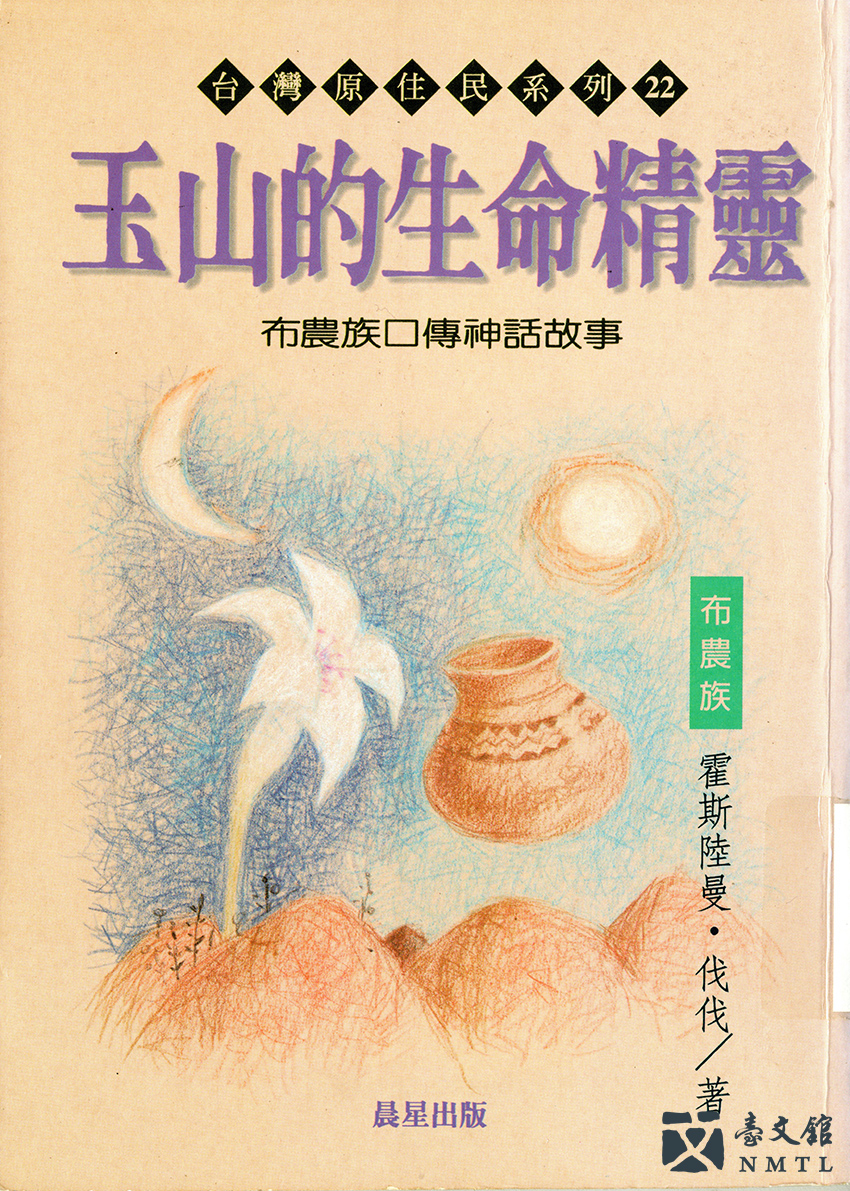
▶︎ Husluman Vava. THE LIVING SPIRITS IN YUSHAN: BUNUN FOLKLORE AND MYTHOLOGY. MorningStar, 1997. (Collection of the National Museum of Taiwan Literature)
Husluman Vava (1958-2007; aka Wang Xin-min) was an indigenous Bunun school teacher and writer from Takbanuaz. Husluman committed himself to promoting indigenous culture, collecting Bunun myths and legends, and creating new works of literature. The SOUL OF JADE MOUNTAIN (2006) won him a gold medal in the Long-Form Novel category of the Taiwan Literature Awards. His first book, THE LIVING SPIRITS IN YUSHAN, is a collection of myths circulated among the Bunun people such as the solar legend "The Sun with an Eye Shot" and the flood myth "The Brave Toad and the Black Bulbul."
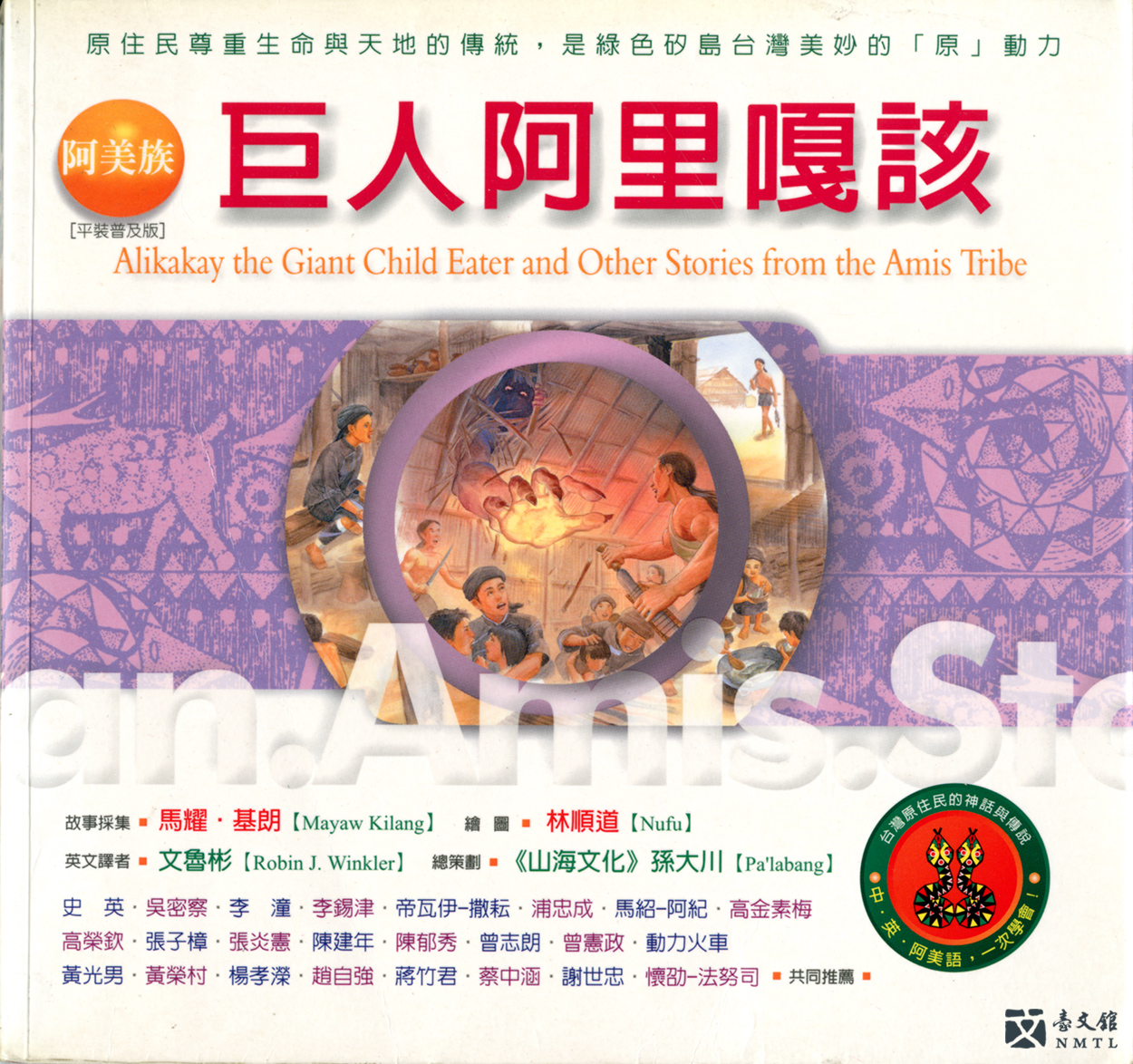
▶︎ Mayaw Kilang. Paelabang Danapan (chief planner). TAIWAN INDIGENE: MEANING THROUGH STORIES—AMIS. Green Futures Publisher, 2002. (Collection of the National Museum of Taiwan Literature)
This ten-volume set includes selected myths from 10 Taiwanese indigenous tribes. The chief planner, Paelabang Danapan (1953-), is a Puyuma who founded Taiwan Indigenous Voice Bimonthly in 1993 to promote indigenous culture.
This collection includes anecdotes circulating among various indigenous tribes in the style of children's storybooks. The Amis volume, for example, includes Amis stories such as "The Farming Top", "The Sea God's Wedding," "Alikakay the Giant Child Eater", "Adventure in the Womanland", and "Secret of the Crab Man."
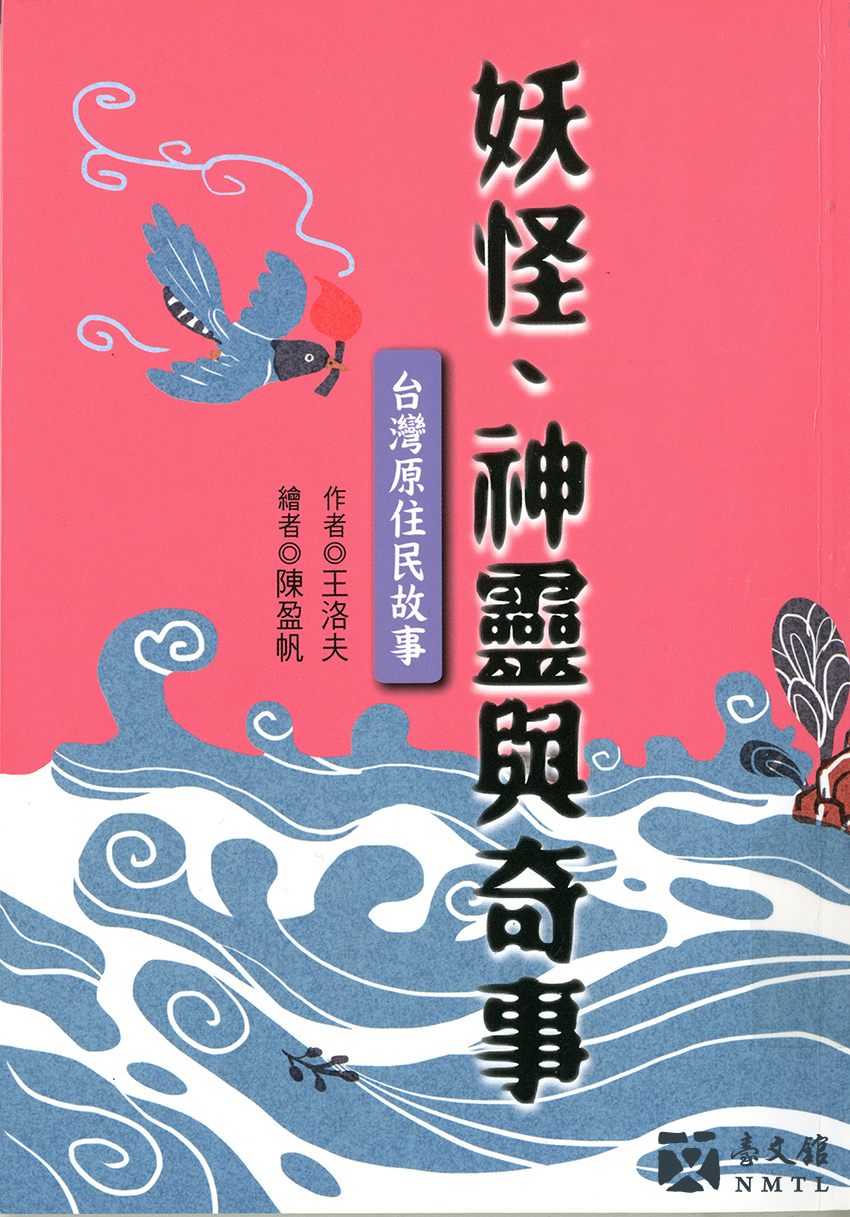
▶︎ Wang Luo-fu. MONSTERS, GODS, AND WONDERS: TAIWANESE INDIGENOUS STORIES. Linking Publishing, 2016. (Collection of the National Museum of Taiwan Literature)
Wang Luo-fu, an elementary school teacher, published a series of indigenous legends and fairytales in the MANDARIN DAILY NEWS between 2014 and 2015, which were compiled into the MONSTERS, GODS, AND WONDERS TAIWANESE INDIGENOUS STORIES in 2016. The book contains mythology, traditional practices, metaphysical legends, and religious rituals from the 16 officially recognized tribes as well as the Ketagalan culture.
Oral Folklore Traditions
Through the centuries, Taiwanese stories and fables of the paranormal have relied heavily on the refined art of oral narration.
The "narrative song" medium has been deployed effectively on Taiwan for over three centuries to entertain as well as to pass along cherished stories and teach important lessons to audiences. Narrators often accompany their stories with an instrument and arrange their presentation into an operatic '7-word stanza' or 'Jianghu-style' format. In addition to stories opining on the importance of moral character and fortitude, oral narrators regularly delighted audiences with popular tales of ghosts, ghouls, and odd happenings.
Narrative songs both entertained and taught important moral lessons. Even stories that plumbed the paranormal such as the iconic "Sister Lin Tou" and "In the Moon" contained not-overly-subtle messages on the importance of living an upstanding and moral life.
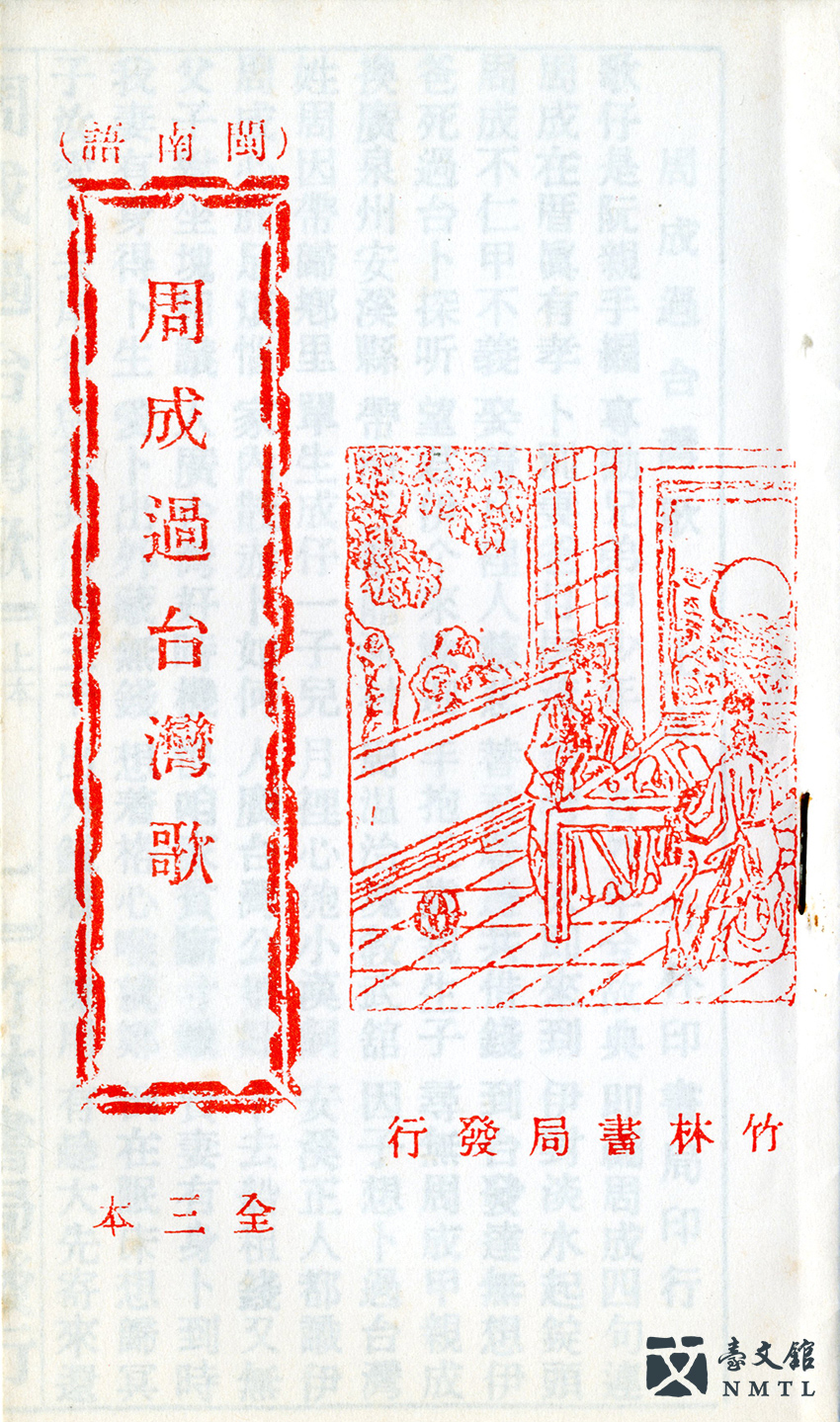
▶︎ Huang Ching-lien (ed.). CHIU SÊNG COMES TO TAIWAN: A COLLECTION OF TAIWAN OPERA STORIES. Zhulin Bookstore,1989.
The first appearance of the Taiwan-opera story "Chiu Sêng (Chou Cheng) Comes to Taiwan" in print came in the 1927 book Strange Stories of Taihoku (Taipei). This traditional tale had many variations as a performance piece, but, as literature, gradually settled into a generally consistent storyline. Its presentation in song, stage performances, movies, and recorded broadcasts has, particularly in the postwar era, made Chiu Sêng one of Taiwan's best-known folktales.
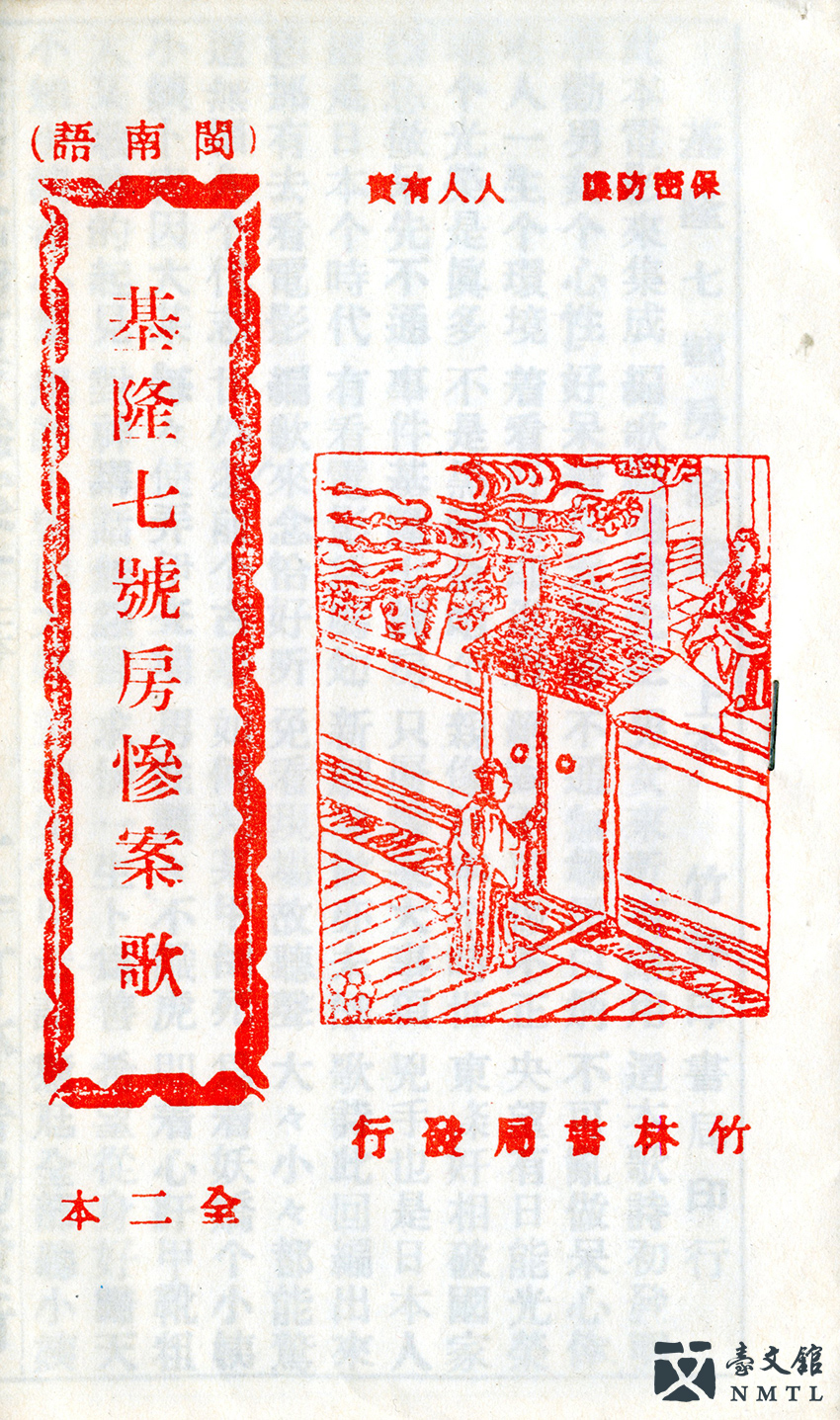
▶︎ Zhang Yu-cheng (Ed.). THE TRAGEDY OF KEELUNG ROOM NO. 7. Zhulin Bookstore.
Printing technologies flourished during the Japanese Colonial Period and greatly increased newspaper and magazine readership island-wide. Many criminal cases were also reported by the press and consequently became topics of social gossip. "The Tragedy of Keelung Room No.7" was a uxoricide case in 1934 that shocked the whole island. The wife of Yoshimura Kenjiro was murdered and dismembered by Yoshimura and his mistress Yara Sizu. Besides the reporting in TAIWAN NICHINICHI SHIMPO (TAIWAN DAILY NEWS), the murder became an urban legend that has since been adapted into movies and Taiwanese ballads.
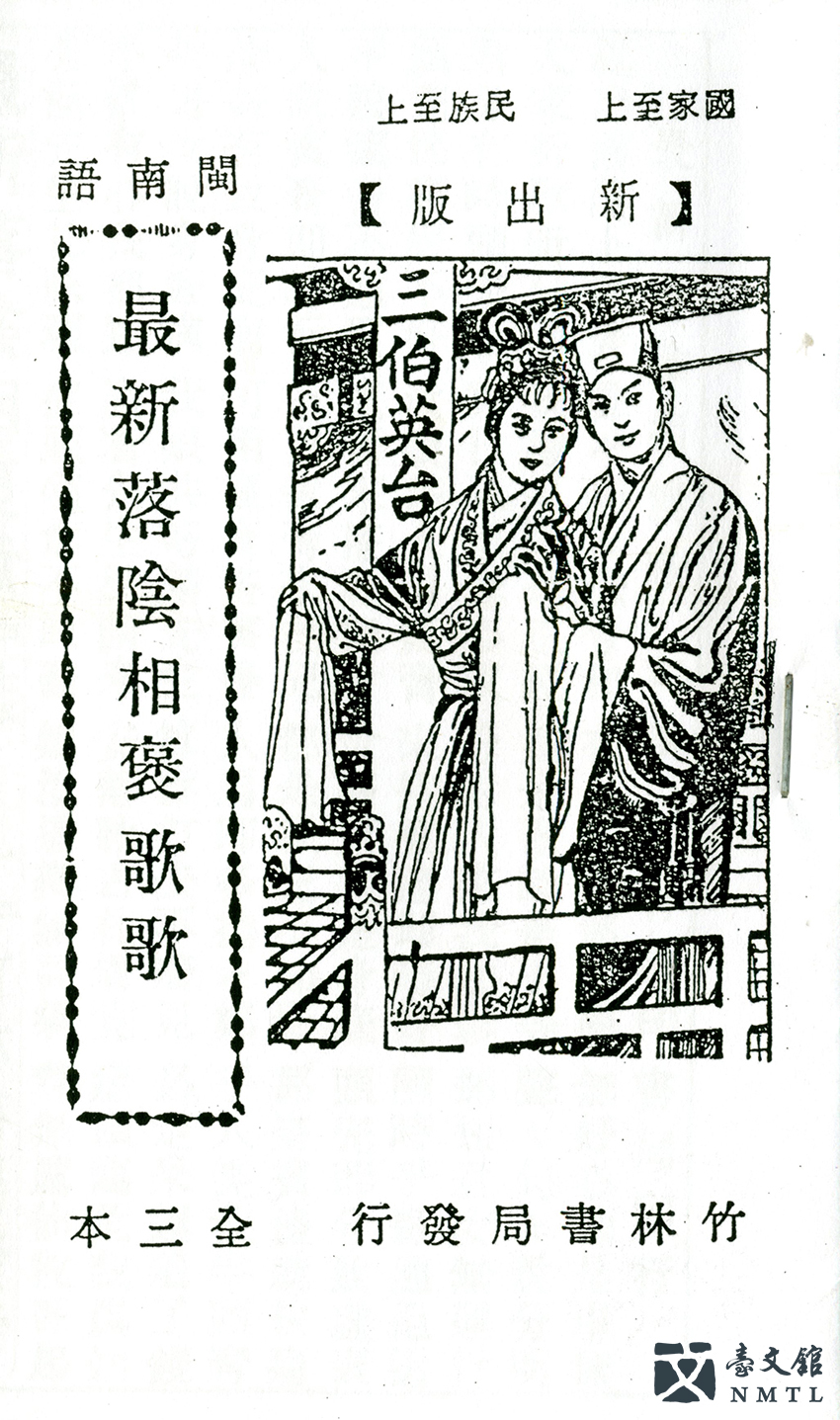
▶︎ LATEST LO̍H-IM DUET. Zhulin Bookstore.
Lo̍h-im is a form of psychic witchcraft related to necromancy, spirit possession, and seance. To connect the mortal realm with the underworld, one requires the aid of deities referred to as kuan-sam-koo or kuan-í-á-koo, depending on the type of ritual, and will usually involve some form of chanting. In the LATEST LO̍H-IM DUET, a medium seeks guidance from sam-koo to cross the Bridge of No Return in the underworld to find a client's deceased loved ones.
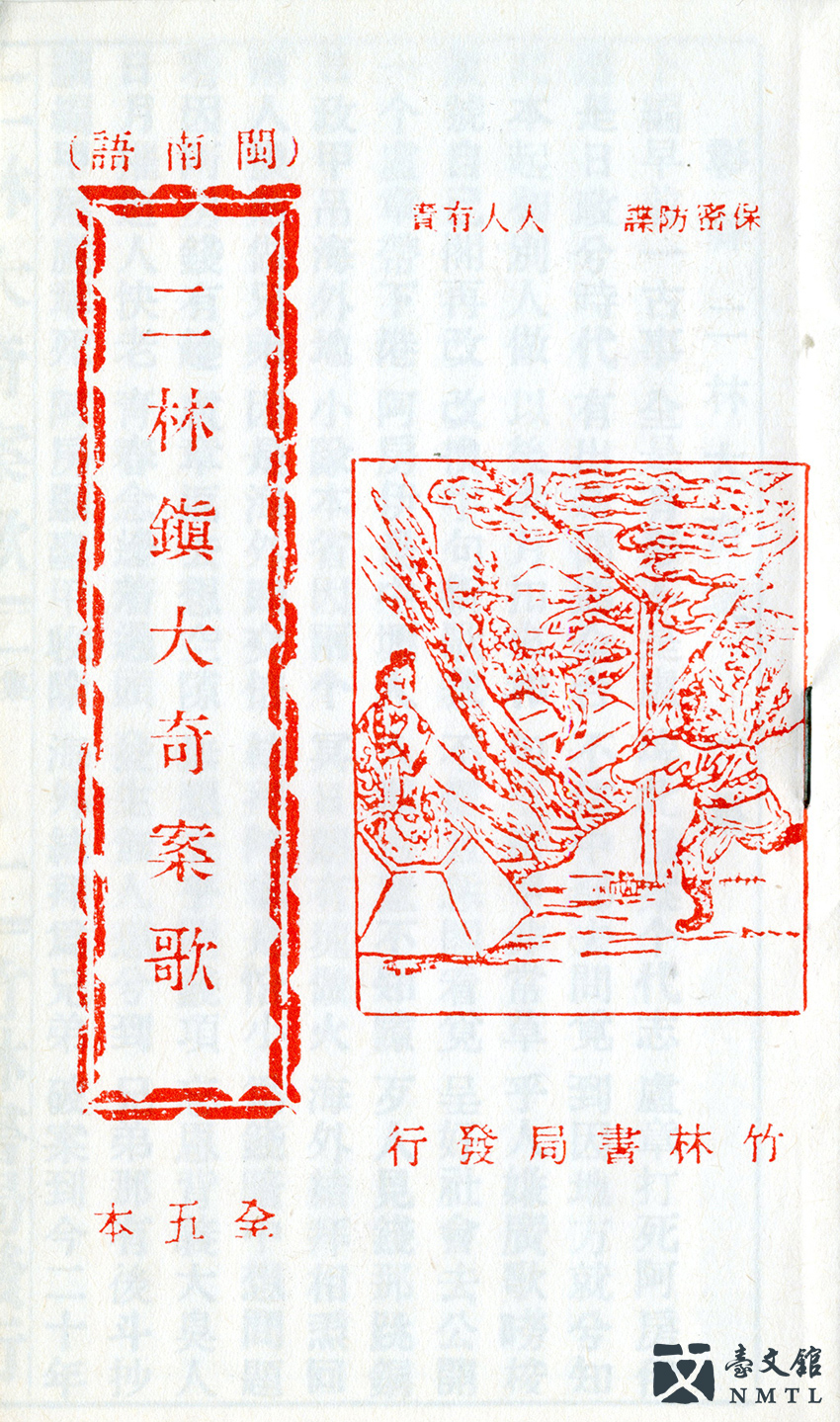
▶︎ SONG OF THE MYSTERIOUS CASE OF ERLIN TOWNSHIP. Zhulin Bookstore.
During the Japanese Colonial Period, it is said that a queer murder case occurred in Erlin, Changhua sometime between 1941 and 1944. The case was a subject of broad public discussion due to the convoluted process involved in tracking down the suspect. Some bards adapted the incident into Taiwanese ballads, further spreading the story as it grew more and more far-fetched. In the story, Lu Zhang and Shi Afang were good friends and both had served in the Japanese Army. After returning to their hometown, Lu Zhang coveted Shi Afang's wealth and killed him to steal his money. The police eventually solved the case by having someone dress up as a ghost to haunt Lu Zhang.
Paranormal Anecdotes in Newspapers
During the Japanese Colonial Period, newspapers became a popular media for publishing various stories about strange phenomena. These anecdotes in the newspapers satisfied the curiosity of the people of Taiwan about ghost legends. For example, the legend of Môo-sîn-á in the mountains first appeared in TAIWAN NICHINICHI SHIMPO (TAIWAN DAILY NEWS). The article, "Encounter with the Devil," published in 1901, described how the devil conjured a gorgeous, imaginary house to lure travelers. The most common ghost reports in the newspapers were sightings of Shui Gui (Water Ghosts), with abundant articles describing incidents of Shui Gui stirring up trouble throughout Taiwan. On the other hand, the ghost articles in 369 TABLOID were more "re-creation" and "literati rewriting" than "fact reporting". For instance, Hong Tie-tao continued the tradition of Chinese ghost storytelling by starting the "More Ghost Stories" column in newspapers under the pen name Yehuchanshizhu.
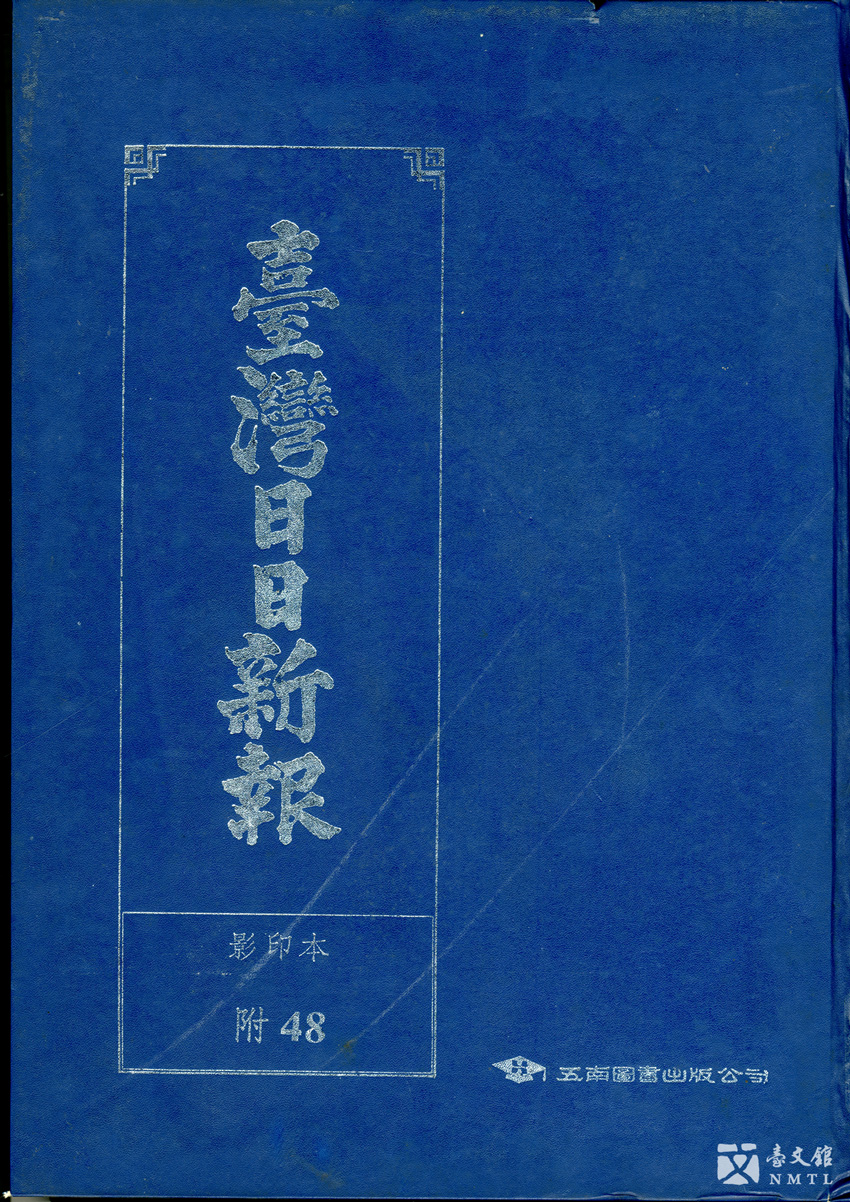
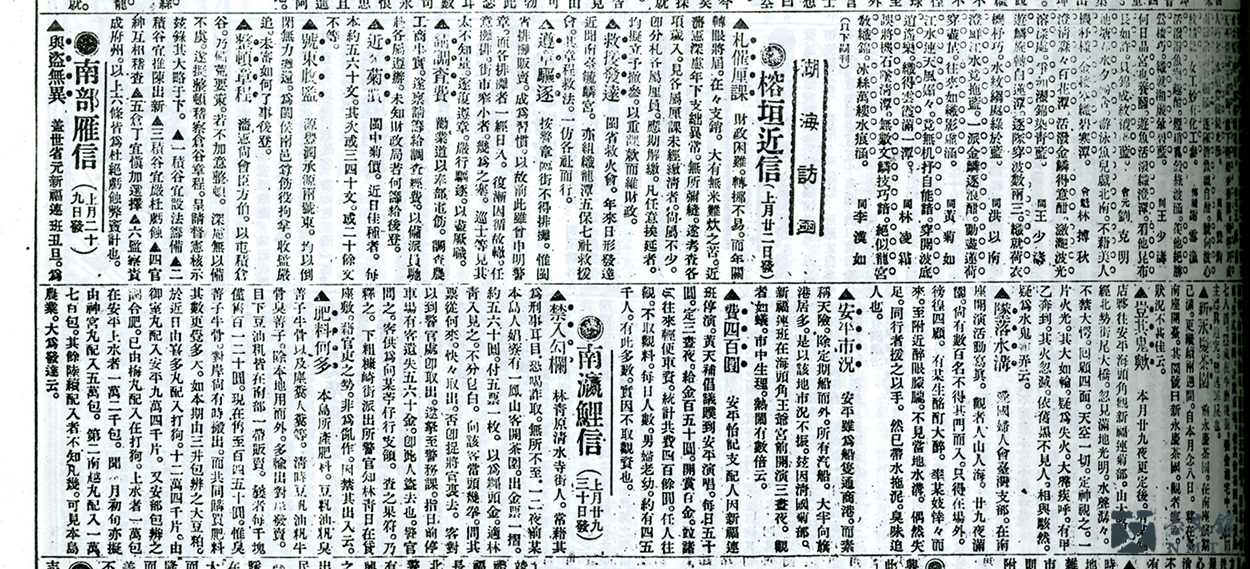
▶︎ "Southern Messenger 'Isn't It a Ghost?'" TAIWAN NICHINICHI SHIMPO (TAIWAN DAILY NEWS) Annex 48 (photocopy). Dec. 4th, 1910 (43rd year of Meiji era). (Collection of the National Museum of Taiwan Literature)
"Water ghosts" haunt Taiwan's waters. In order to entice people to enter the water, they can confuse people, especially through transfiguration. In this report, a huge flame was said to have suddenly burst out at night on a bridge near Beishi Street (today's Shennong Street) in Tainan. A shop assistant thought it was a fire and hurriedly called for help, only to find the flame immediately went out as if it had never appeared. Because the location was near the water, people suspected it was an illusion conjured by a water ghost.
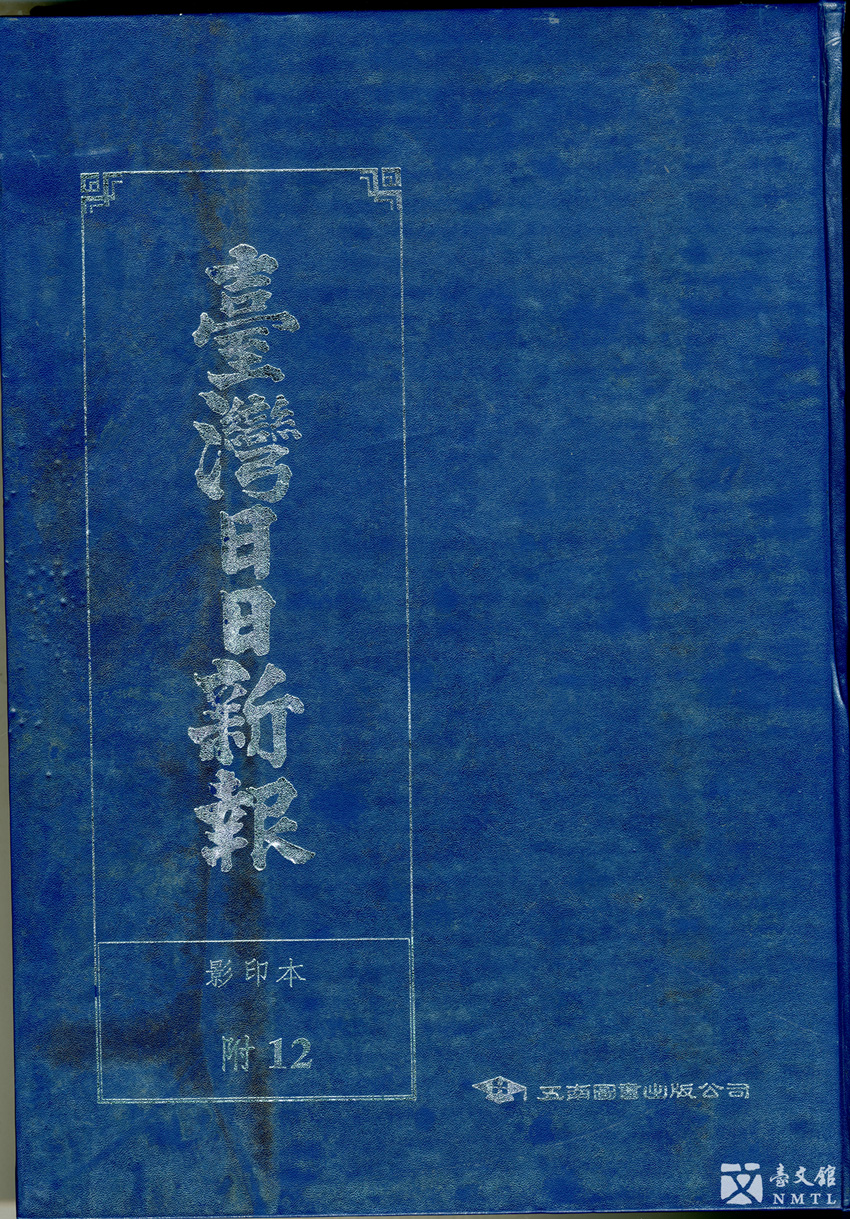
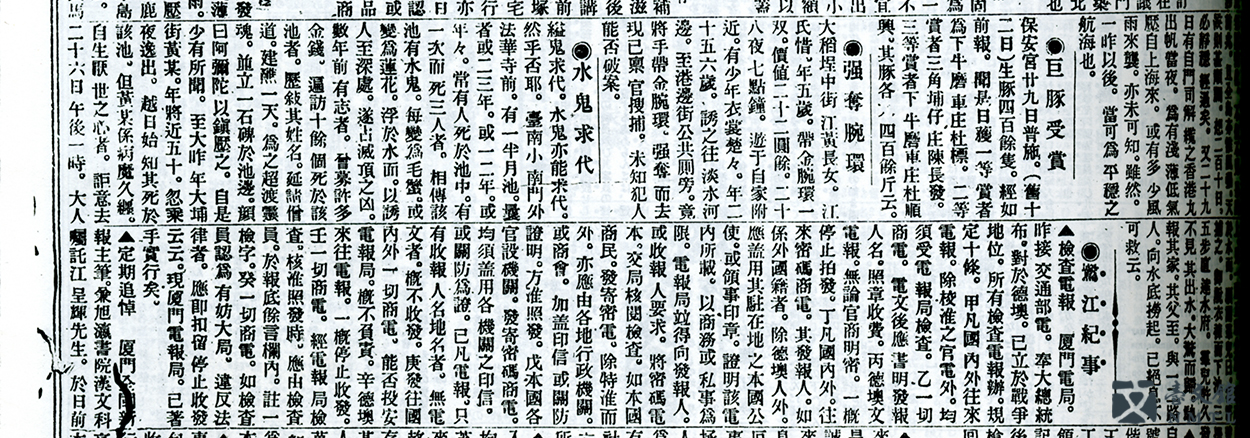
▶︎ "Water Ghosts' Search for Substitutes". TAIWAN NICHINICHI SHIMPO (TAIWAN DAILY NEWS) Annex 12 (photocopy). Sep. 1st, 1917 (6th year of Taisho era). (Collection of the National Museum of Taiwan Literature)
Fahua Temple, located in the West Central District of Tainan City, is a municipal heritage site built during the reign of Emperor Kangxi. It is said that in the past, people often drowned in the half-moon pond in front of the temple because the water ghosts in the pond were looking for substitutes. These water ghosts were capable of changing into horsehair crabs and lotuses to lure people into the water. It was not until a jianjiao ritual was performed to release the souls of the water ghosts and a monument was erected by the pond that drowning incidents subsided.
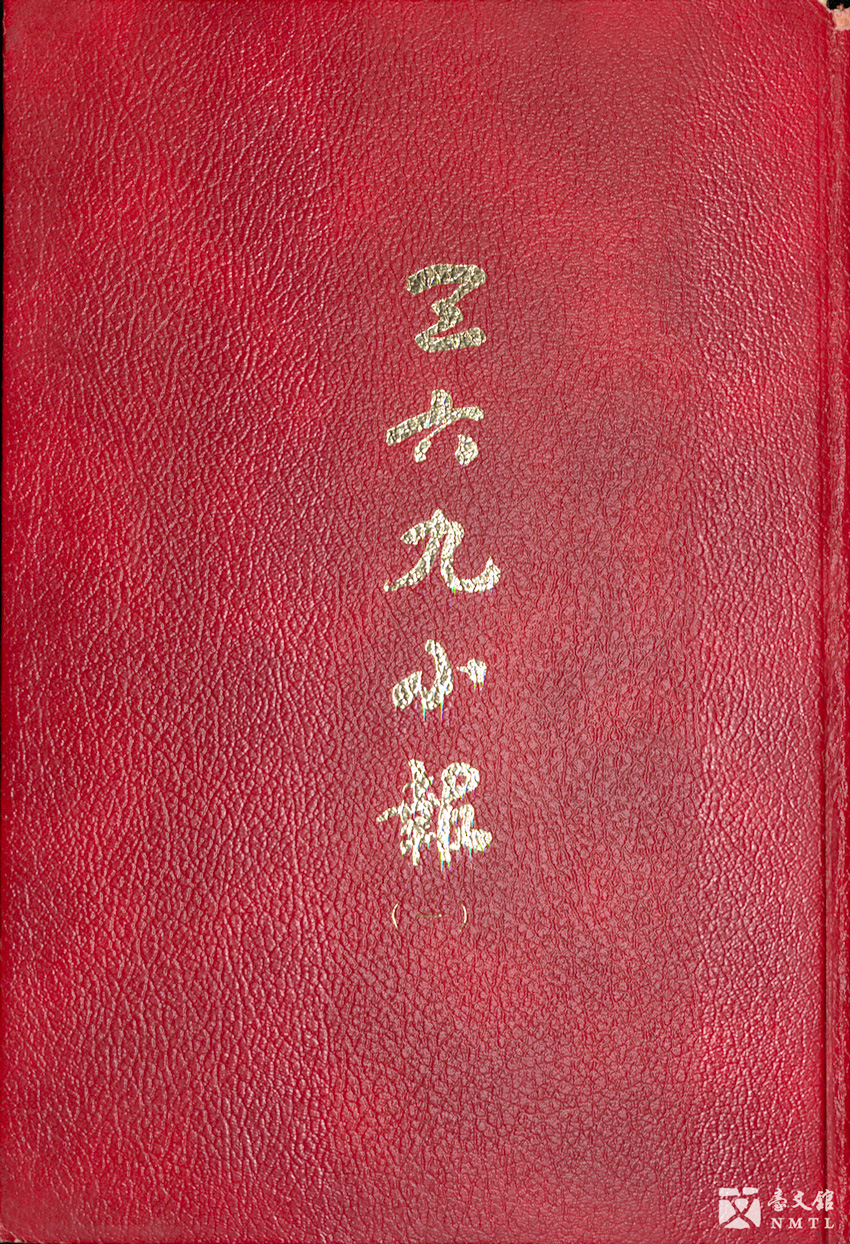
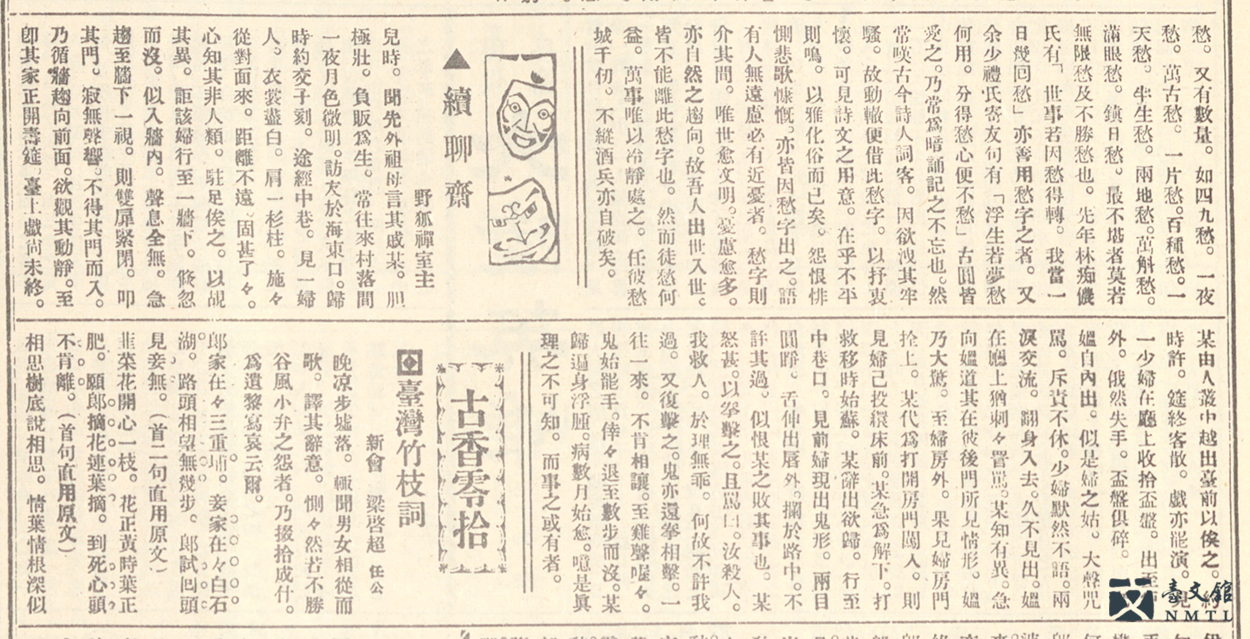
▶︎ Yehushan Shizhu. "Continued Liao Zhai". 369 TABLOID (I) (reprint). May 29th, 1931 (6th year of Showa era). (From the National Museum of Taiwan Literature permanent collection / Donated by Wang Jun-yue)
The Taiwanese believe that a hanged person will transform into a "hanged ghost" and look for a substitute in order to reincarnate. It is said that the hanged ghost will show its original appearance if it touches blood from parturition. In the 369 TABLOID, Yehushan Shizhu (real name Hong Kun-yi, a poet from Tainan) portrays a hanged ghost whose search for a substitute is disrupted by the daring Qi. Qi accidentally came across the sneaky hanged ghost one night. He chased after the ghost fearlessly and eventually rescued a woman who almost became its substitute. The hanged ghost became furious, showed his real appearance, and fought with Qi until dawn, when it disappeared resentfully. Kataoka Iwao in TAIWAN FŪZOKUSHI (TAIWAN MANNERS AND CUSTOMS) described the look of hanged ghosts as "having their heads dip forward when walking because they died from hanging or strangulation."

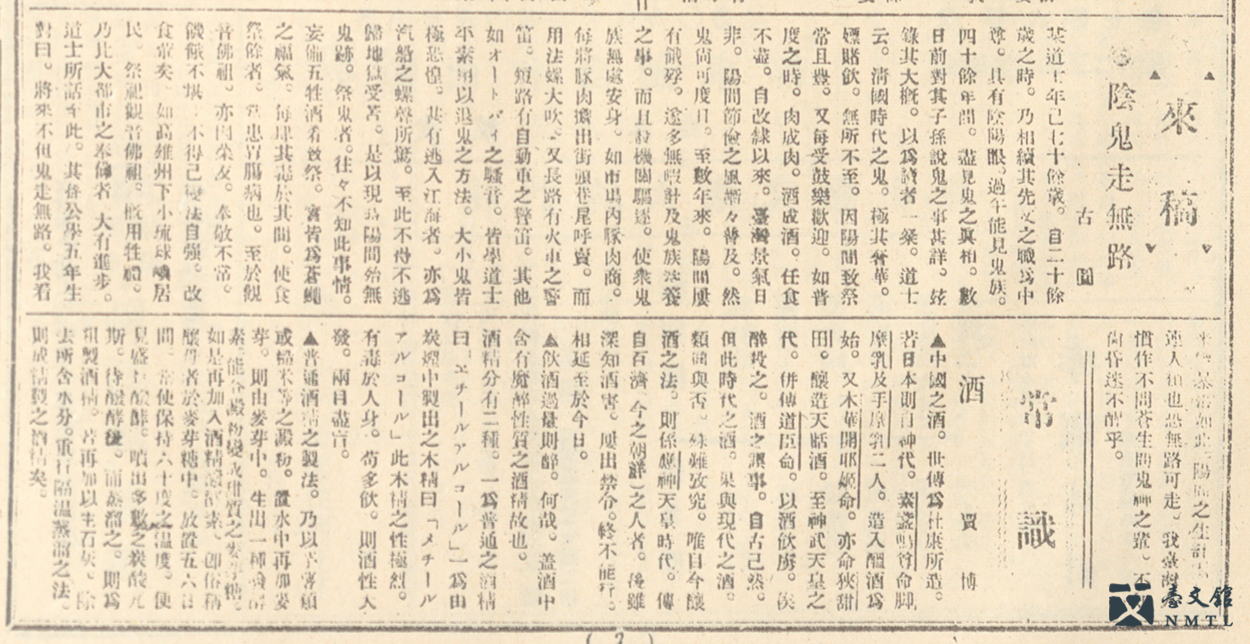
▶︎ Guyuan. "The Ghosts Have Nowhere to Go". 369 TABLOID (I) (reprint). Oct. 19th, 1930. (5th year of Showa era). (From the National Museum of Taiwan Literature permanent collection / Donated by Wang Jun-yue)
In the Qing Dynasty, the abundant sacrifices presented by the living enabled ghosts to wander comfortably in the human realm. However, since Japan's rule in Taiwan, Taiwanese people started devaluing worshipping and sacrifices, which voided these lone ghosts of needed worshippers. Moreover, the horn blasts of trains and automobiles and even steamer foghorns sounded like a Taoist priest's conch, terrorizing the ghosts, so they gradually faded from the earthly realm. This article describes the "history of vanishing" of the ghosts as modern civilization has no place for the unearthly. Yet, just as life finds its way, perhaps these ghosts have escaped into the more obscure parts of the human soul.

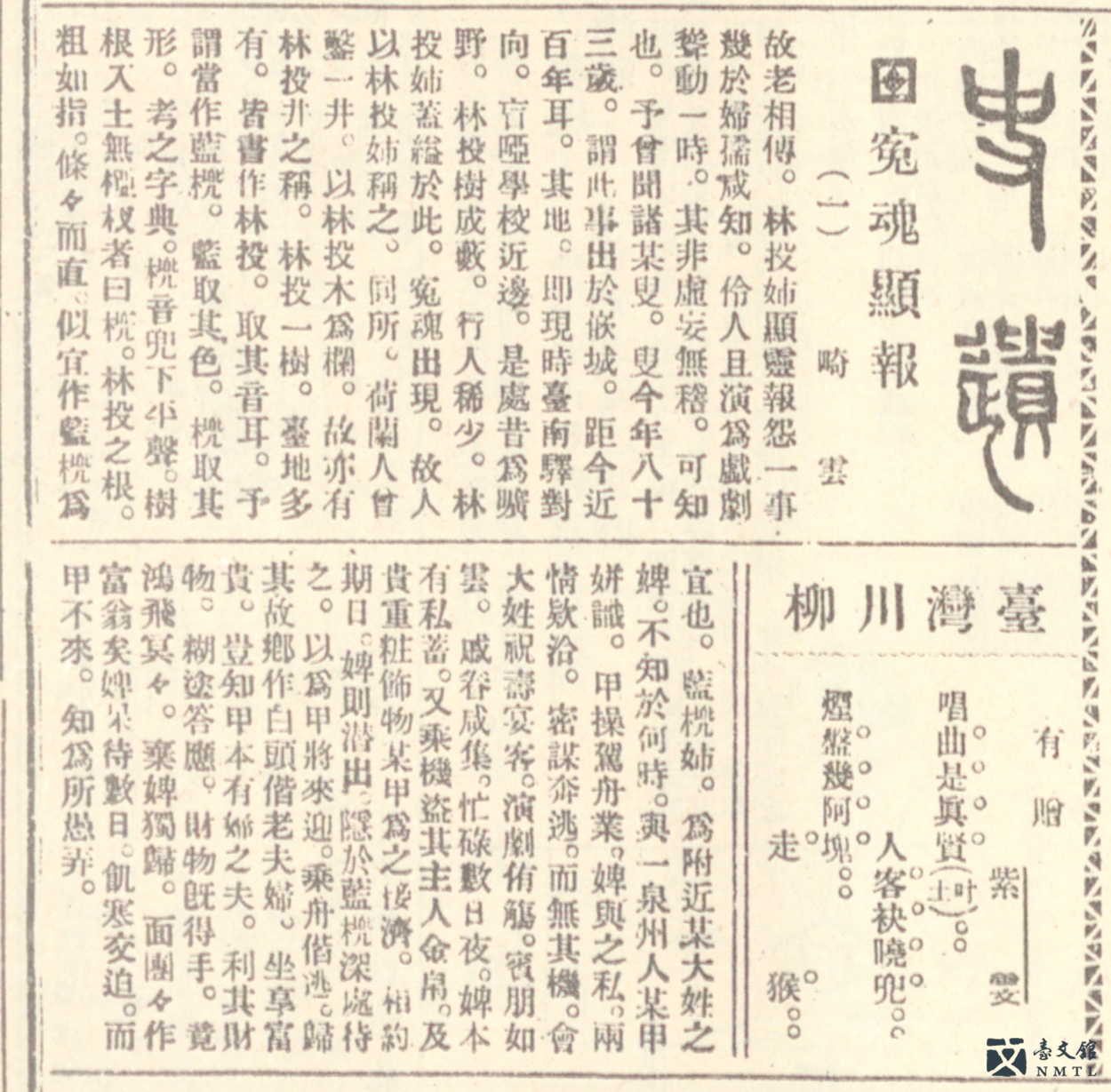
▶︎ Ji Yun. "The Revenge of the Victimized Soul". 369 TABLOID (I) (reprint). Jun 13th, 1931. (6th year of Showa era). (From the National Museum of Taiwan Literature permanent collection / Donated by Wang Jun-yue)
In 369 TABLOID's depiction of the legend of Sister Lin Tou, Sister Lin Tou was a wealthy man's housemaid who had an affair with a Quanzhou man. The man tempted the maid to steal gold and valuables for him and ran away with the valuables. The housemaid, after learning that she had been cheated, hanged herself under a thatch screwpine (aka lintou tree). Later, a Quanzhou busker saw Lin Tou's spirit. Lin Tou asked the busker if he knew the cheater, to which the busker replied that the cheater was from a nearby town. Sister Lin Tou gave the busker some money and asked him to take her to Quanzhou by letting her hide under an umbrella. At the end, Lin Tou successfully avenged her betrayal by killing the cheater and his two sons.
Tainan Paranormal: The Works of Hsu Bing-ding and Haruo Satō
Tales of the paranormal represent an important medium in modern literary creativity. Paranormal elements began to be woven into creative literature in Taiwan during the Japanese Colonial Period (1895-1945).
Tainan author Hsu Bing-ding's work HSIAO FÊNG SHÊN (小封神) draws inspiration from traditional Chinese stories of gods and demons. Weaving a story replete with familiar folk-religious elements, he uses this story as a vehicle to build a story of the Goddess Turtle origins of the 'dragon turtle'. While the goddess is a deity outside of the realm of man, her children and grandchildren are ghoulishly corporeal. The deer and golden fish immortals that battle against Raishishi also began existence as ghoulish beasts. Such tales fill the pages of contemporary paranormal / fantasy literature.
The short-story compilation Jokai ōgi Kidan (Strange Tale of the Bridal Fan) by Haruo Satō is a gushing font of Taiwanese horror literature. Influenced by Western gothic horror literature, Haruo set his "Jokai Ōgi Kidan (Strange Tale of the Bridal Fan)" in Tainan in a creaky old home haunted by restless spirits. His deep and mysterious writing style perfectly accentuates the ambiance and allure of old Tainan City.
Haruo Satō's release of Strange Tale spurred Japanese literary critics Ken Hashizume and Kinji Shimada to write a commentary and analysis of the work in Gaichi Bungaku (Literature of the Overseas Territories). Fujii Shozo in the 1990s revisited the characters and setting of this story, giving a new interpretation from the perspective of nationalism. Furthermore, Ryu Komori conducted a detailed investigation of the story, comparing the story locations such as Tutou Harbor and the abandoned house with their physical locations and analyzing the author's interlacing of imagination and reality.
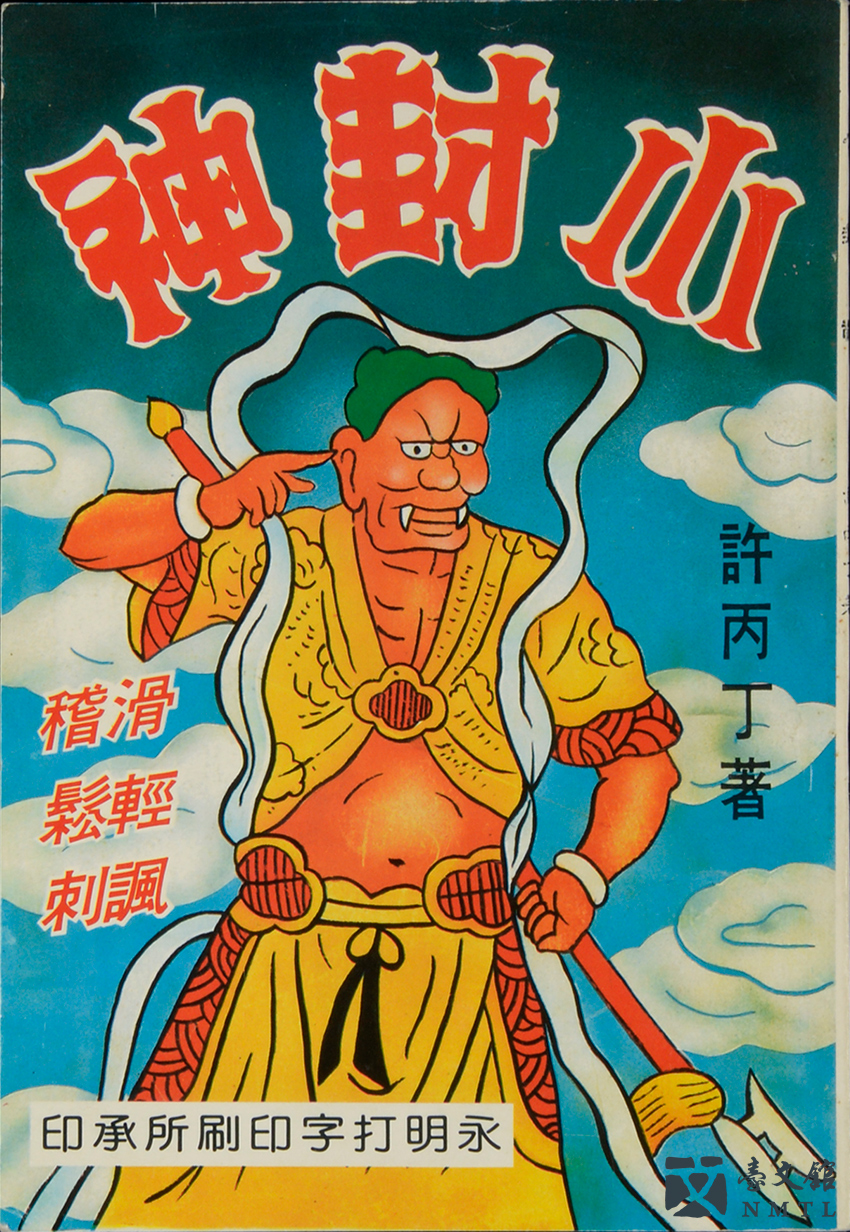
▶︎ Hsu Bing-ding. HSIAO FÊNG SHÊN (小封神). 1986. (From the National Museum of Taiwan Literature permanent collection / Donated by Hsu Bing-ding)
Hsu Bing-ding (1900-1977) was a novelist and musician from Tainan City in southwestern Taiwan who also served a stint as a city councilman. Bing-ding's enjoyment of listening to tales told in temple yards as a boy led him to his later general interest in Taiwanese fables and ghost stories. In 1933, he began serializing his creative story HSIAO FÊNG SHÊN (小封神) in the 369 TABLOID. His novel of the same name is today not only recognized as an early work of Taiwanese fantasy literature but also celebrated as Taiwan's first novel written in Taiwanese.
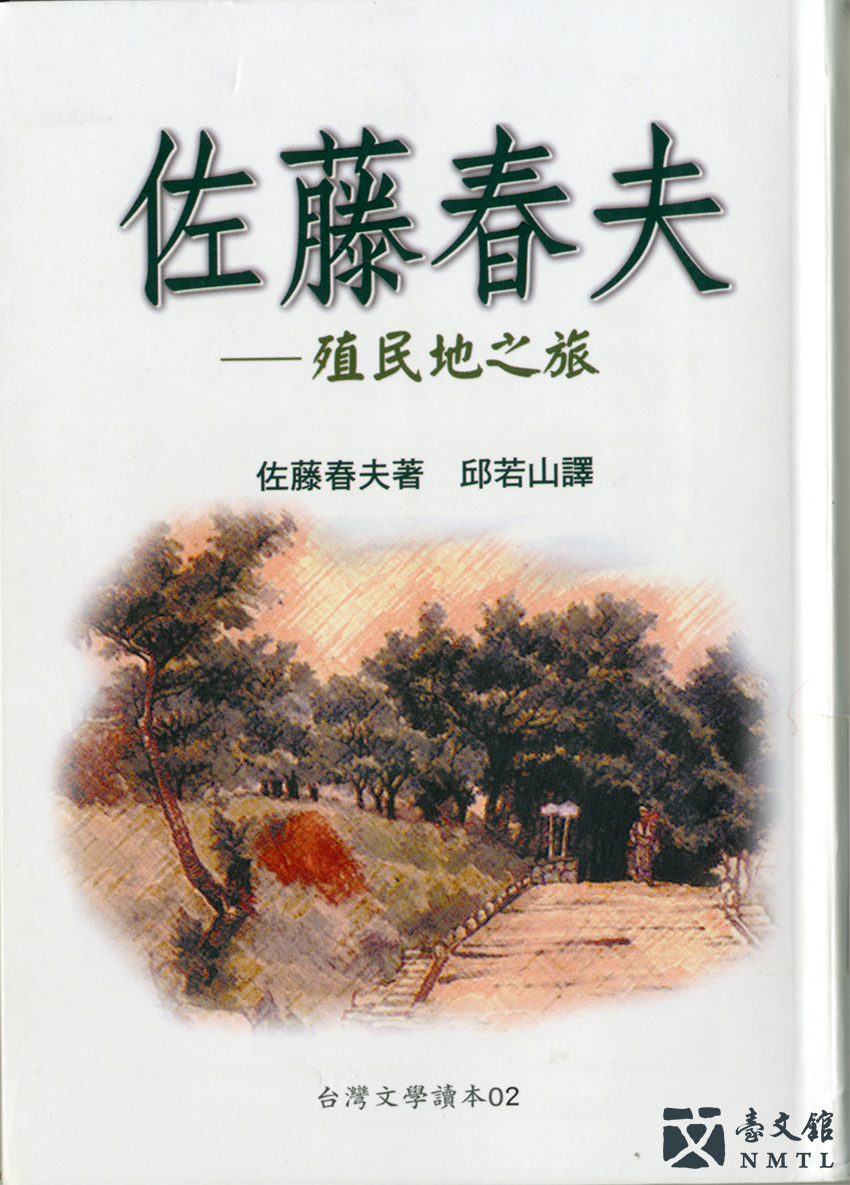
▶︎ Haru Satō. SHOKUMINCHI NO TABI (A JOURNEY IN THE COLONIES). Grassroots Publishing House, 2002. (Collection of the National Museum of Taiwan Literature)
The writing of Haru Satō (1892-1964) was heavily influenced by contemporary aesthetic trends. His best-remembered works include JUNJO SHISHU (POEMS OF FRUSTRATED LOVE) and TAIKUTSU TOKUHON (USELESS READER). In the summer of 1920, a 3-month visit to the then-Japanese colony of Taiwan led to his writing Kirisha (Wushe), The Grasshopper's Adventure, and other stories. His "Jokai Ōgi Kidan (Strange Tale of the Bridal Fan)" reflects particularly high literary merit, marking the seminal work of Taiwan's nascent horror-fiction genre with its rich infusion of gothic literary flavors and romantic, mysterious writing style.
